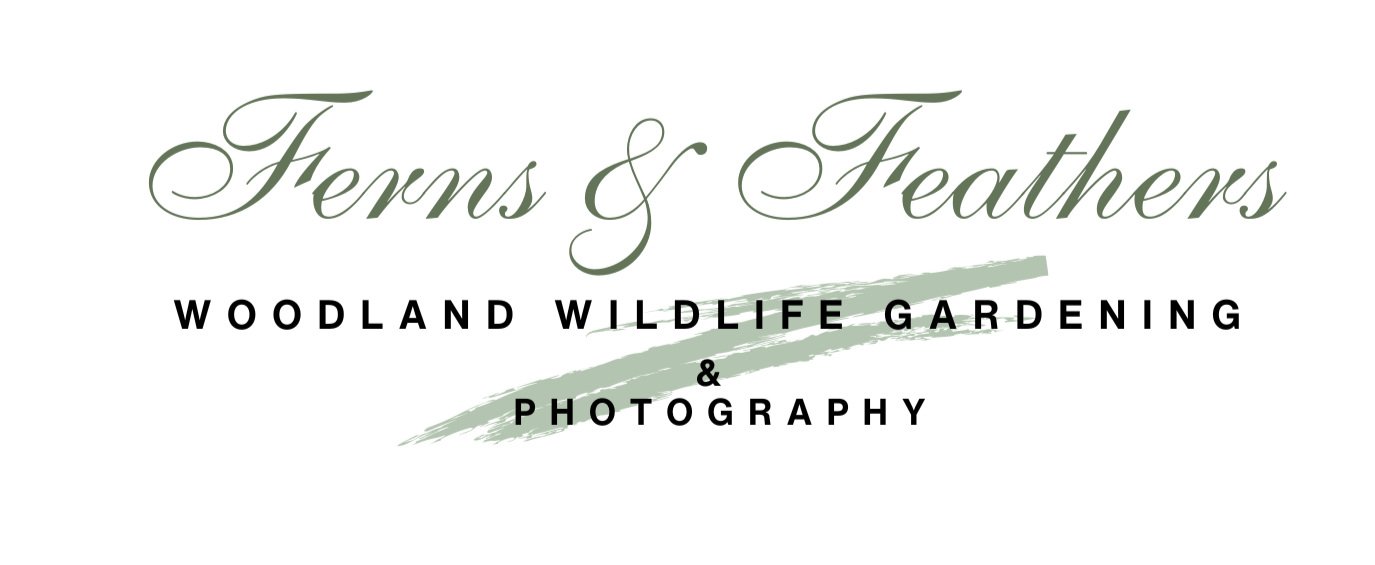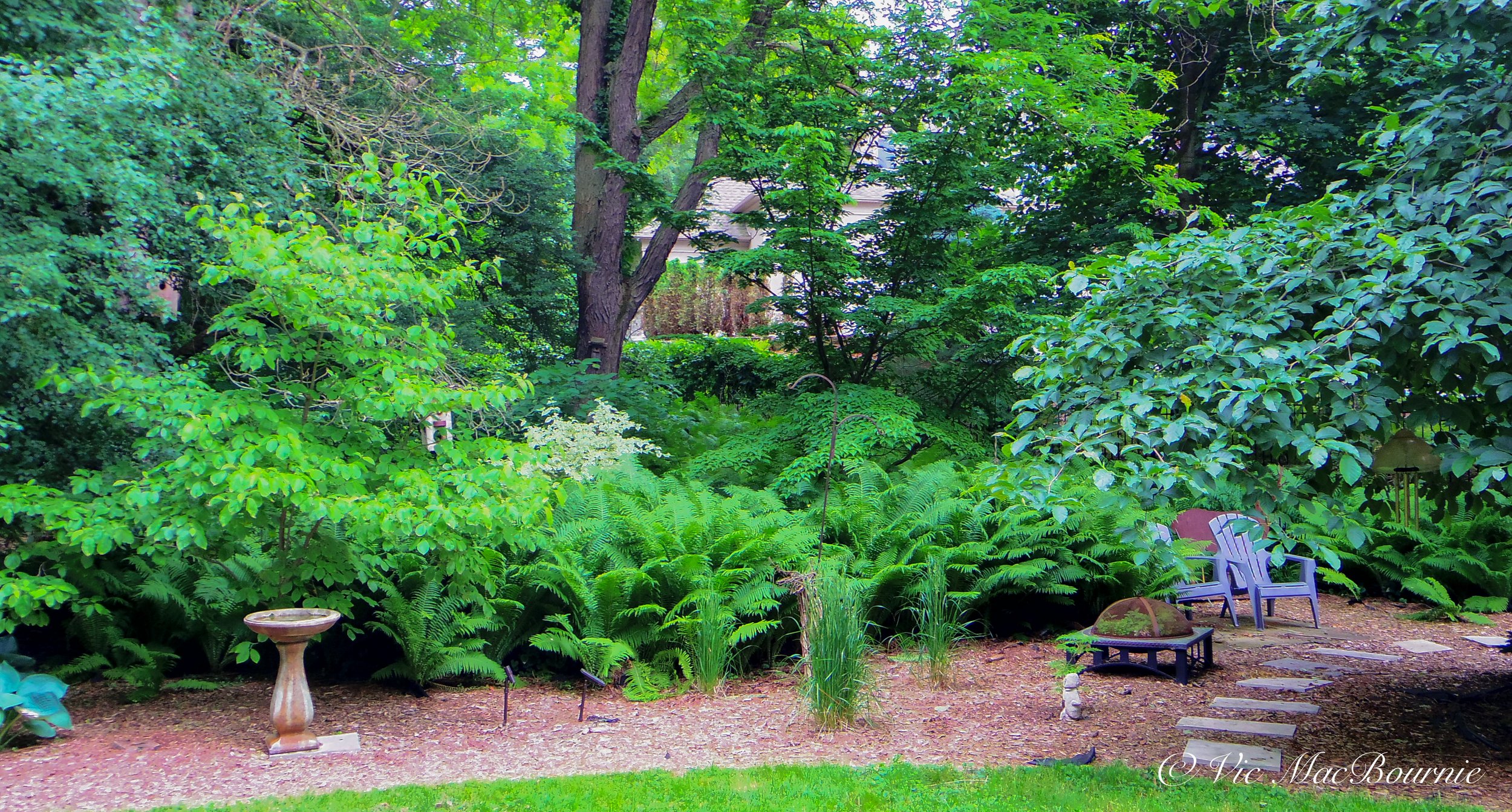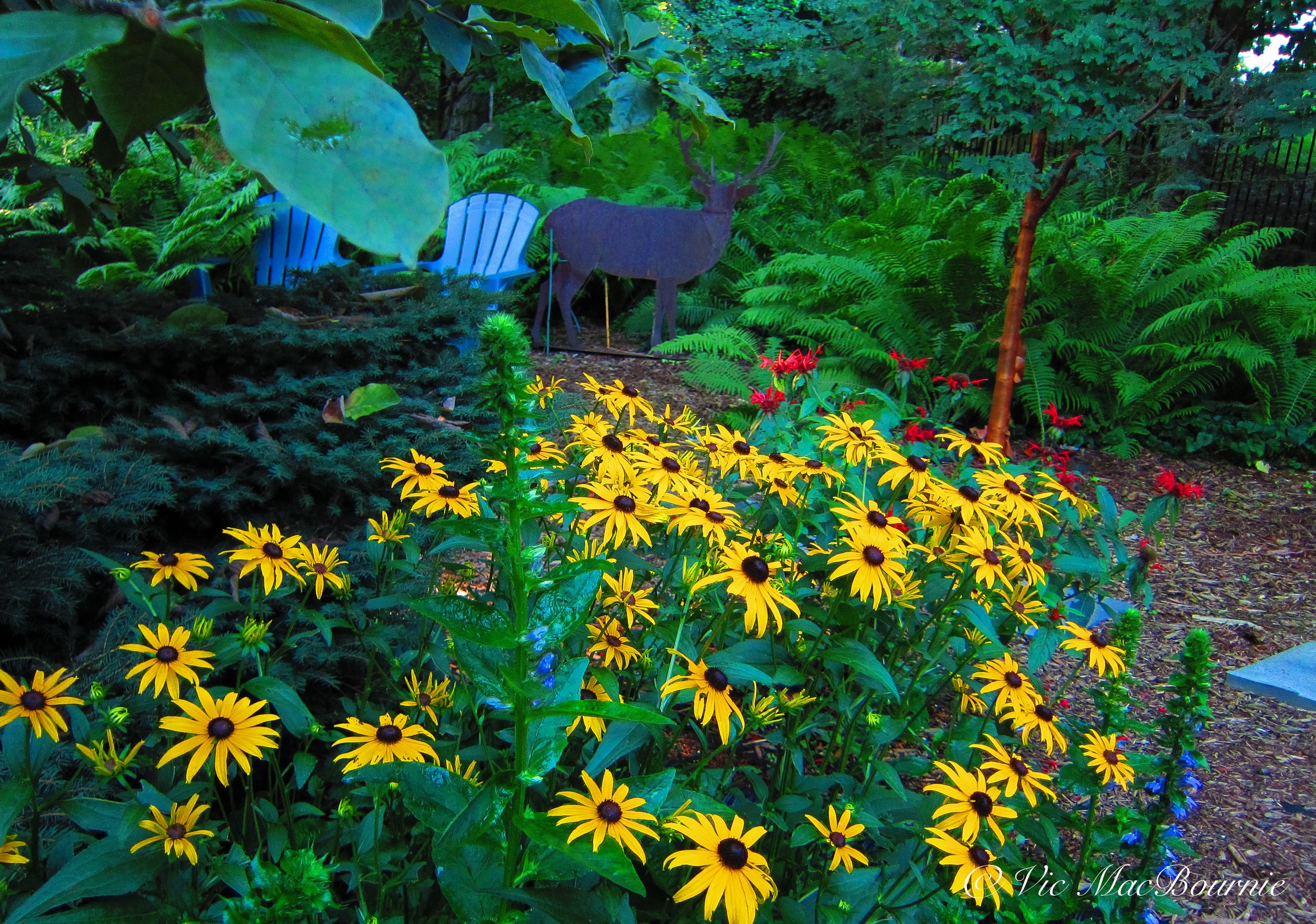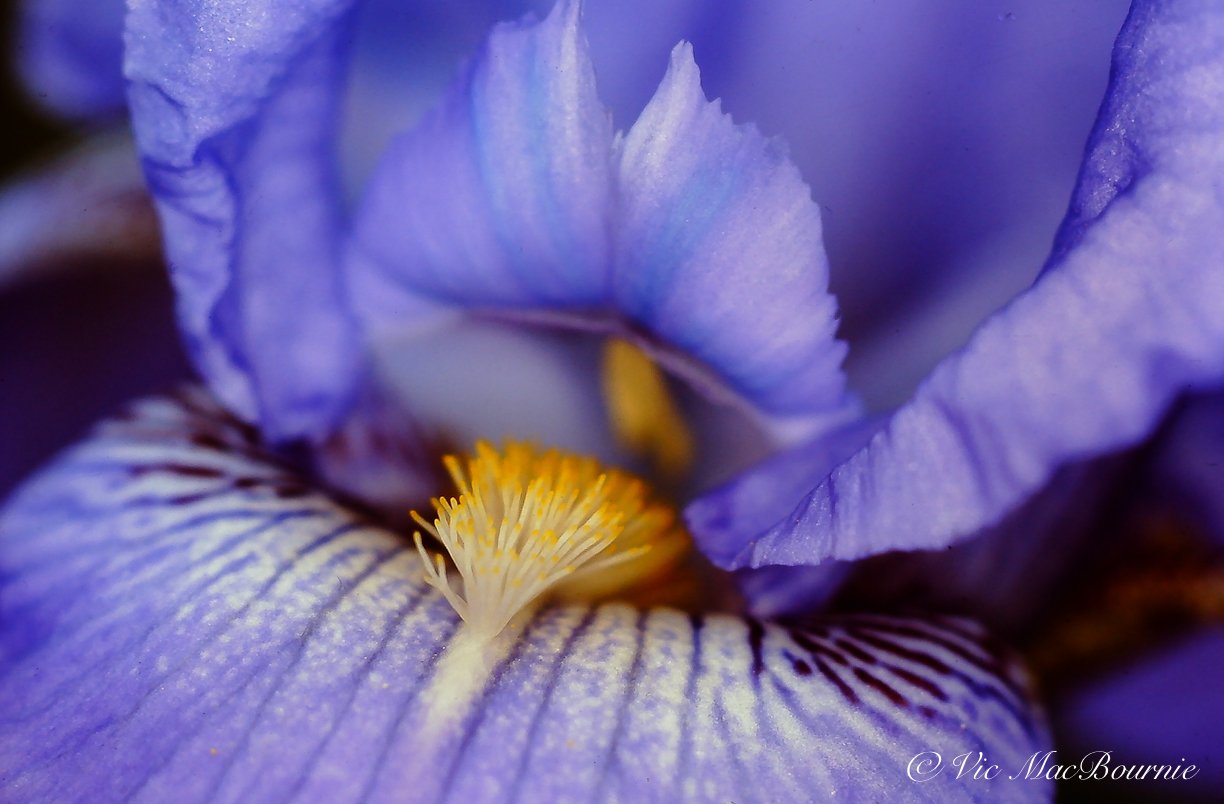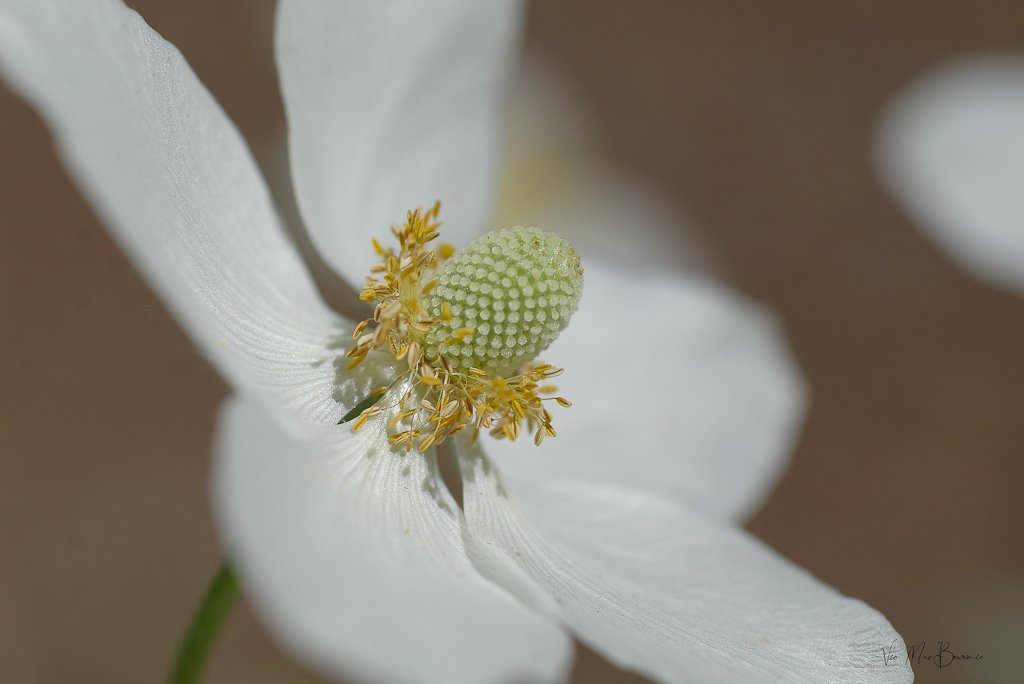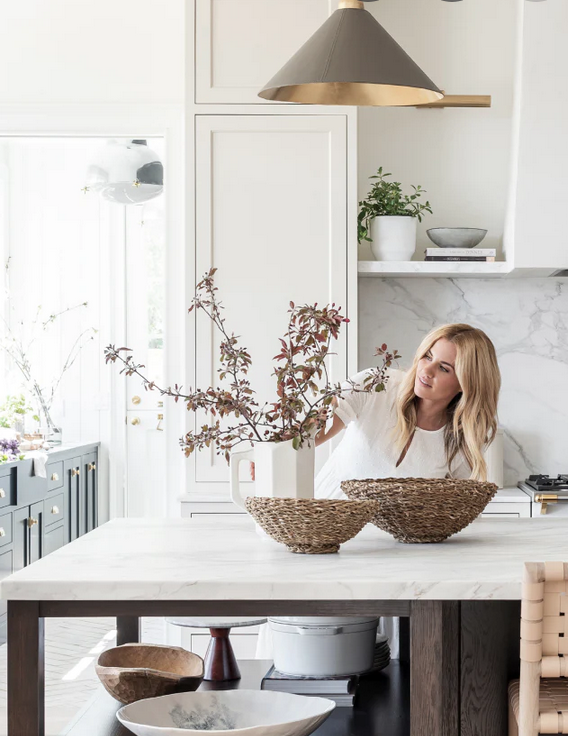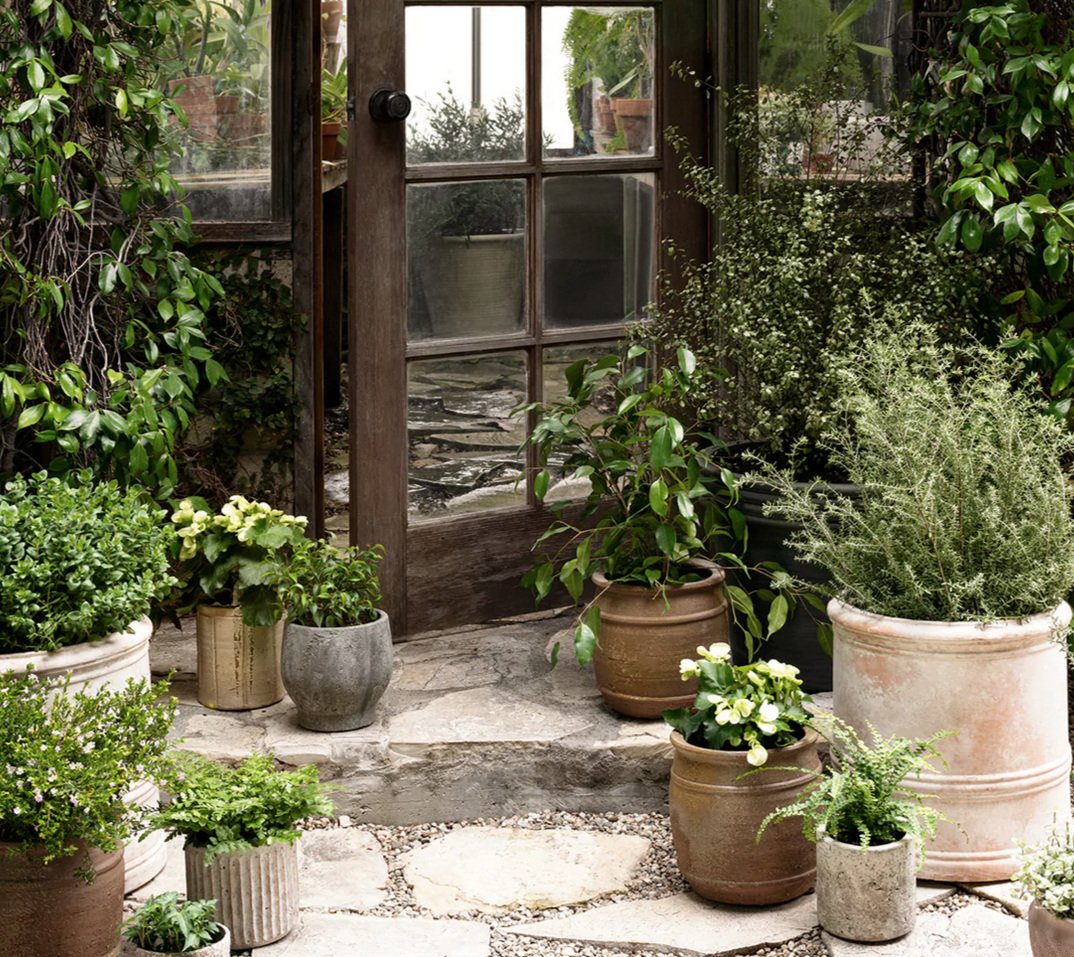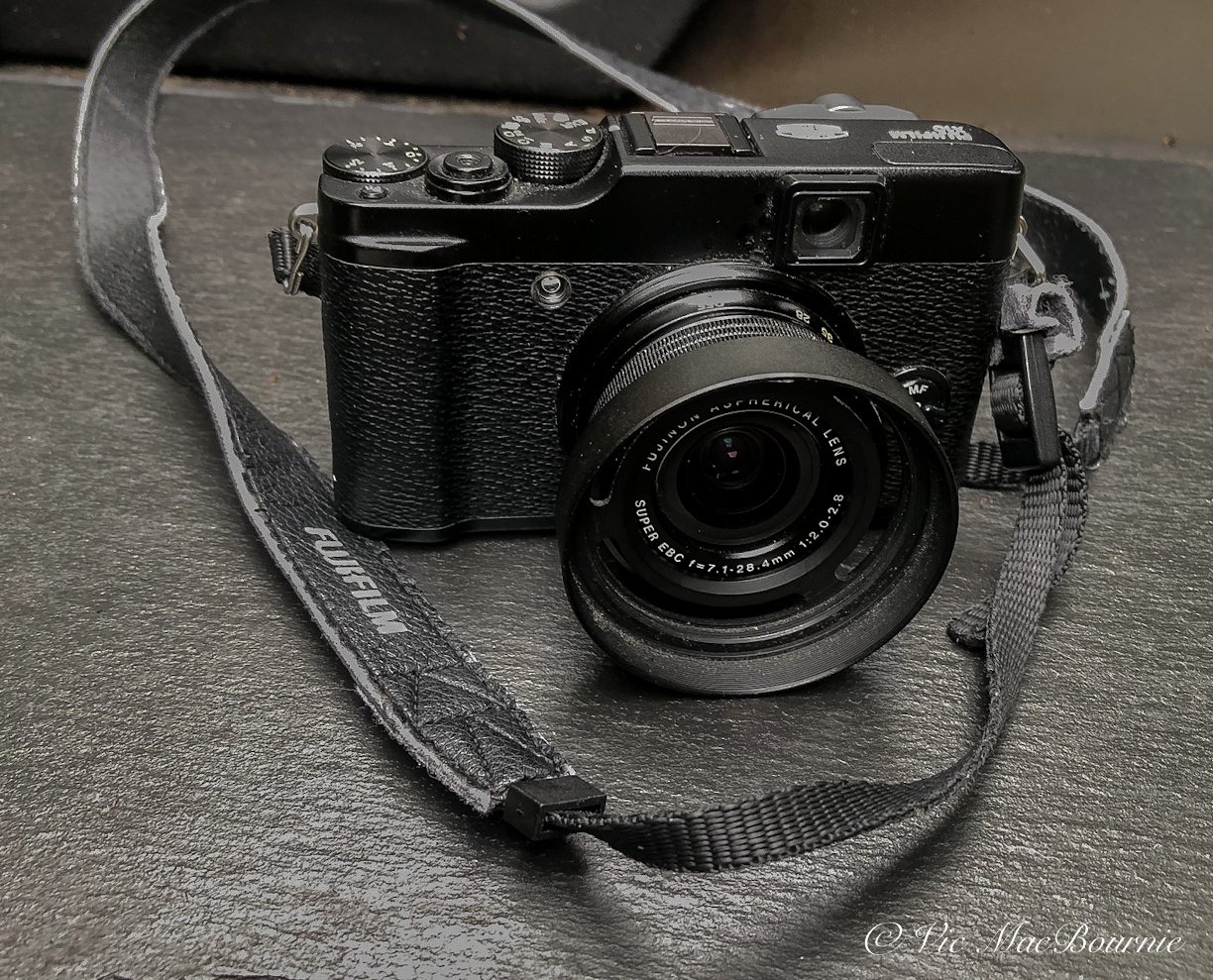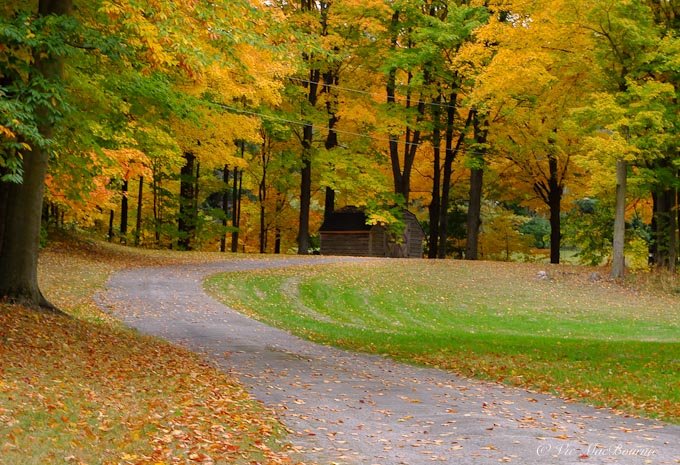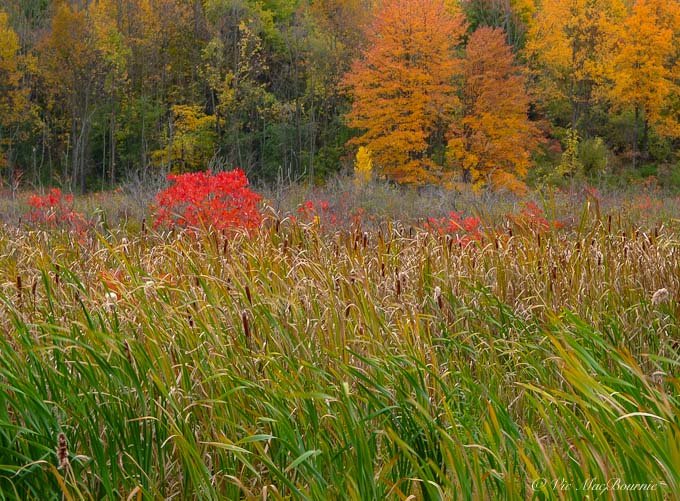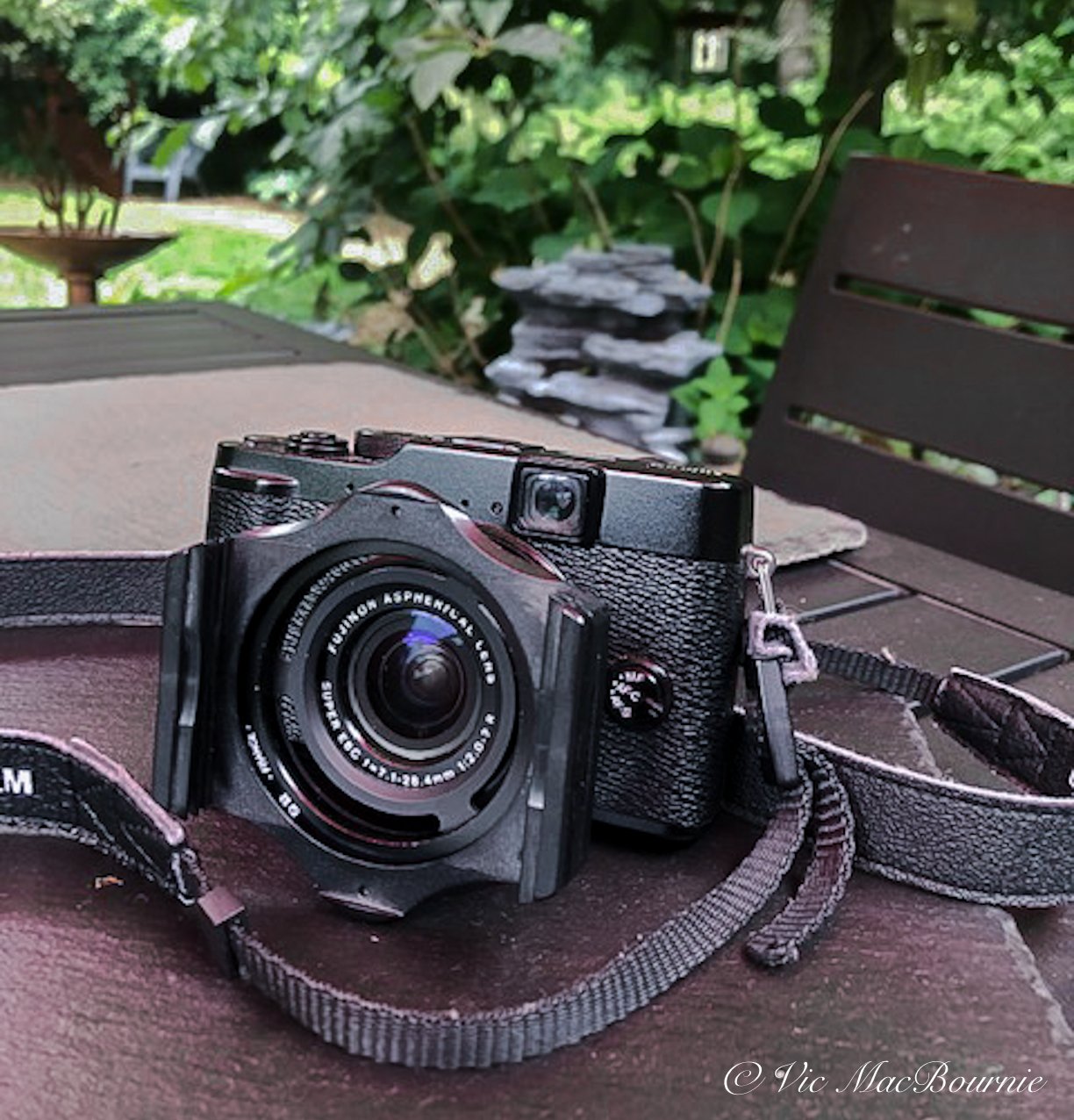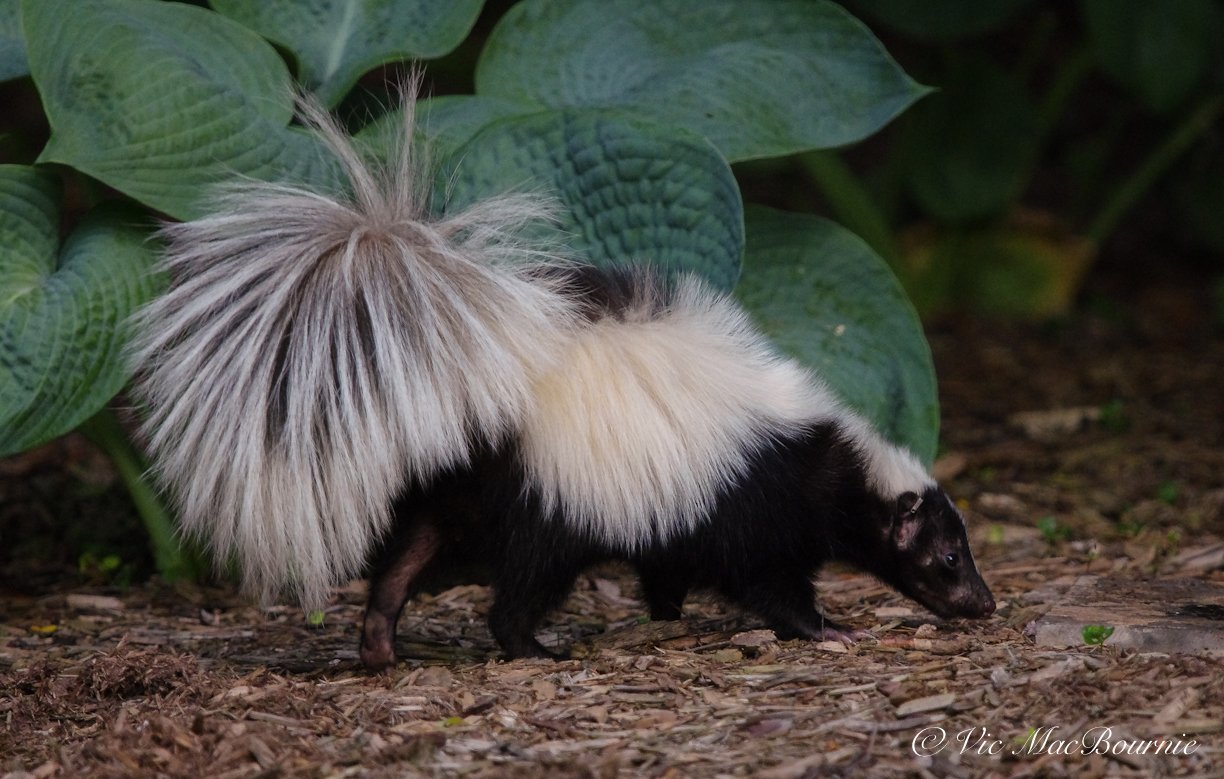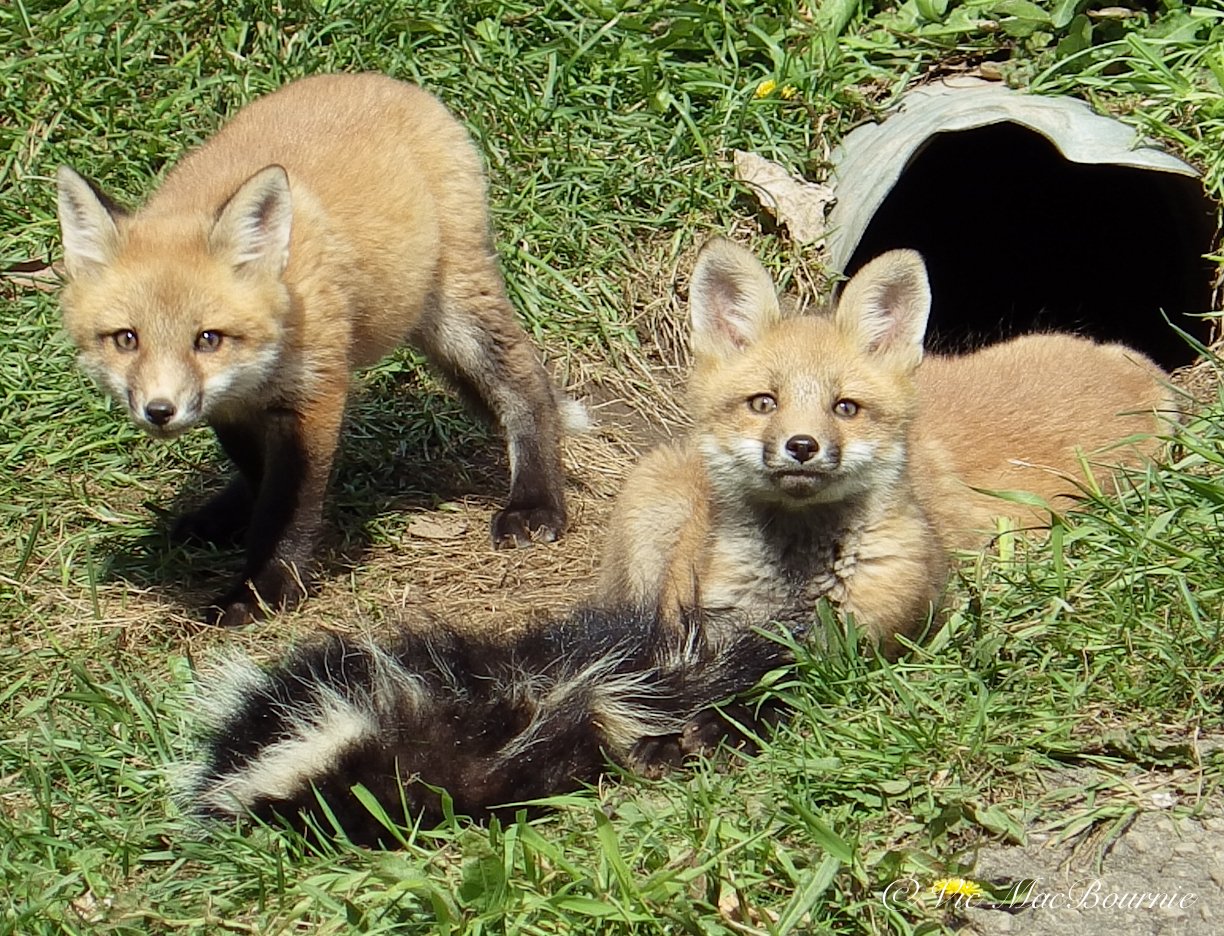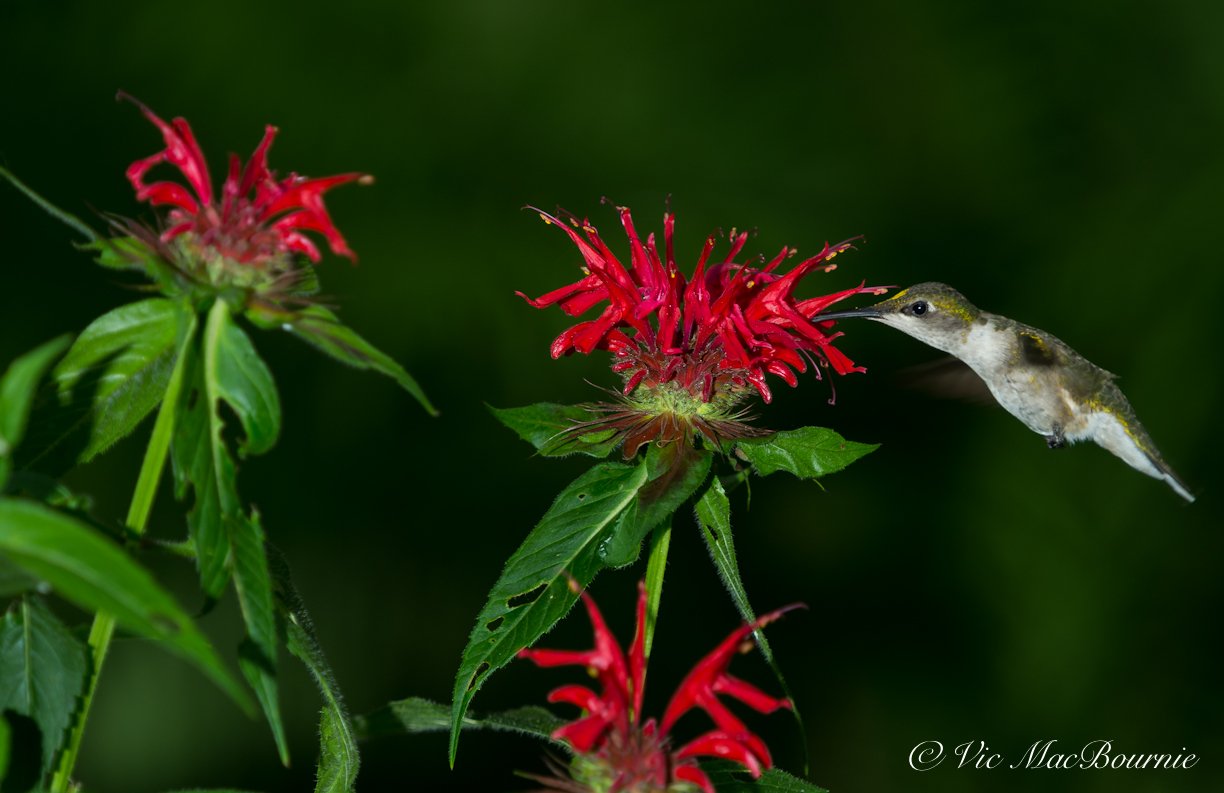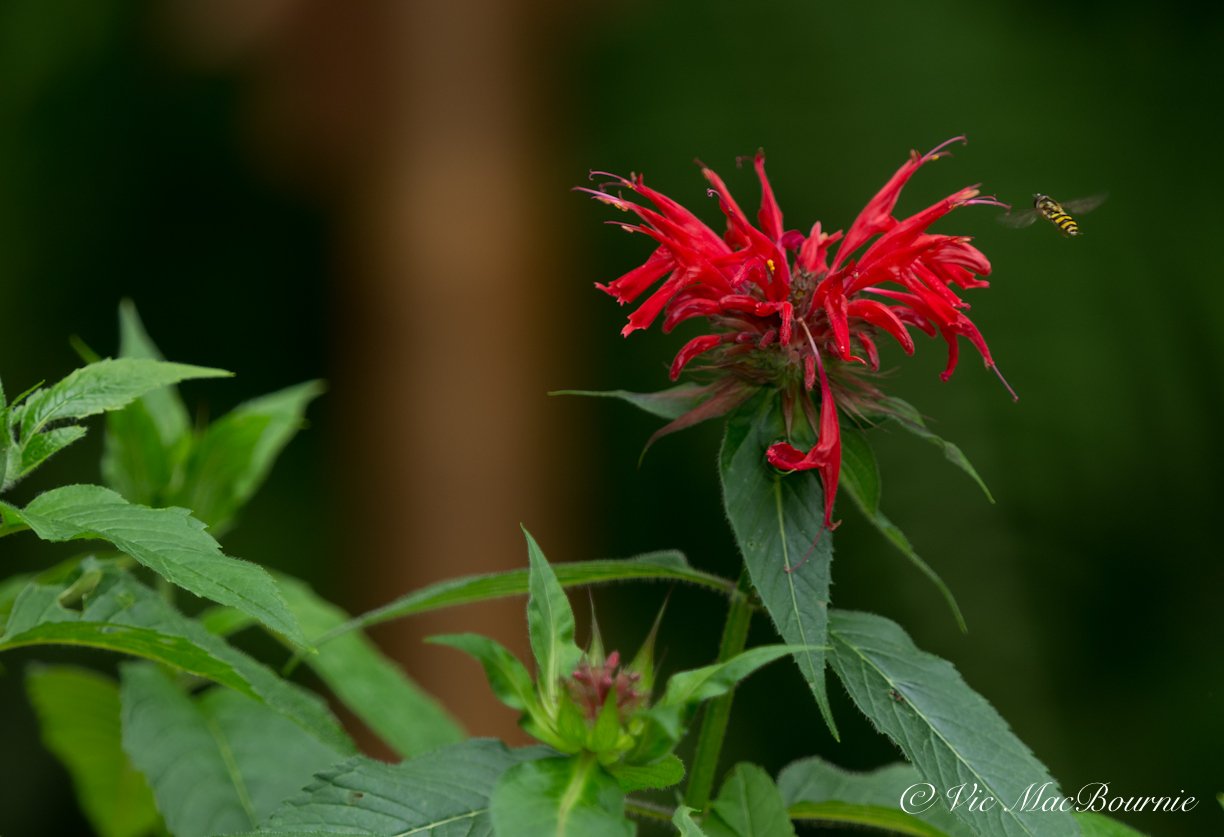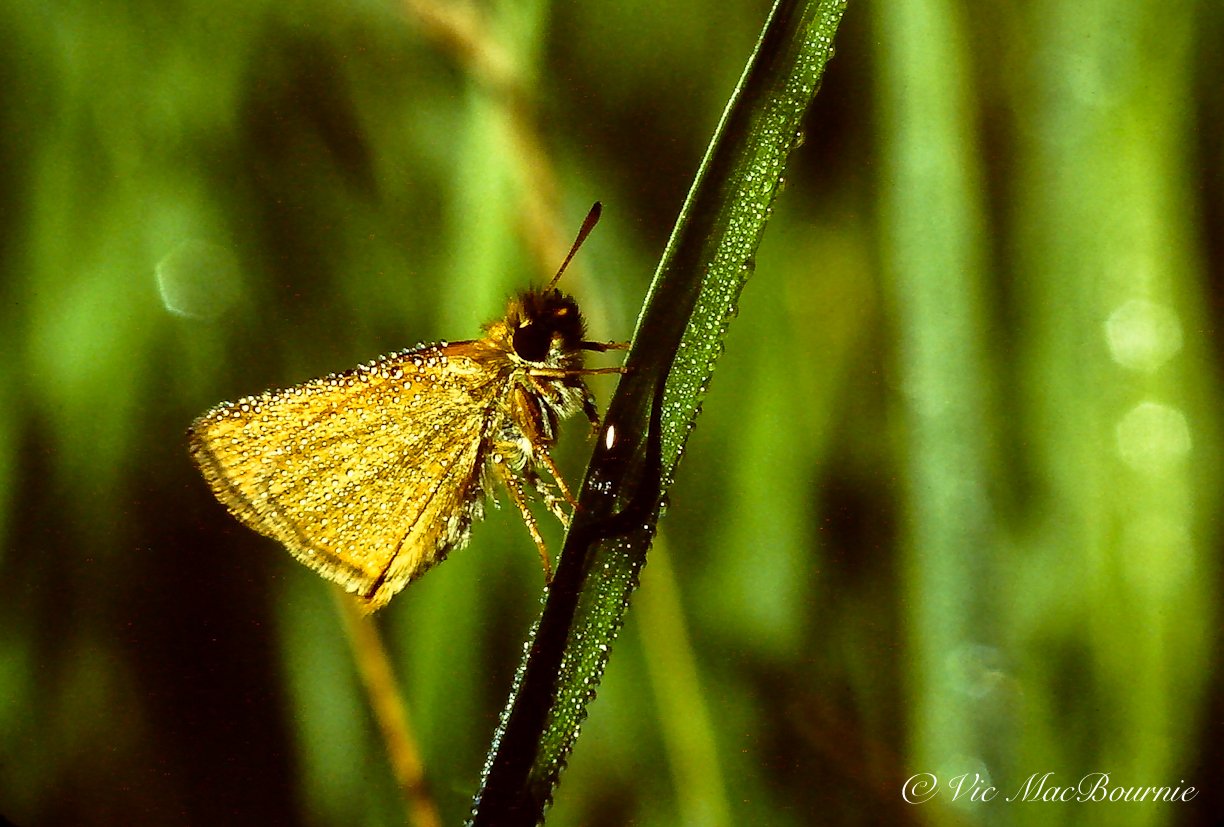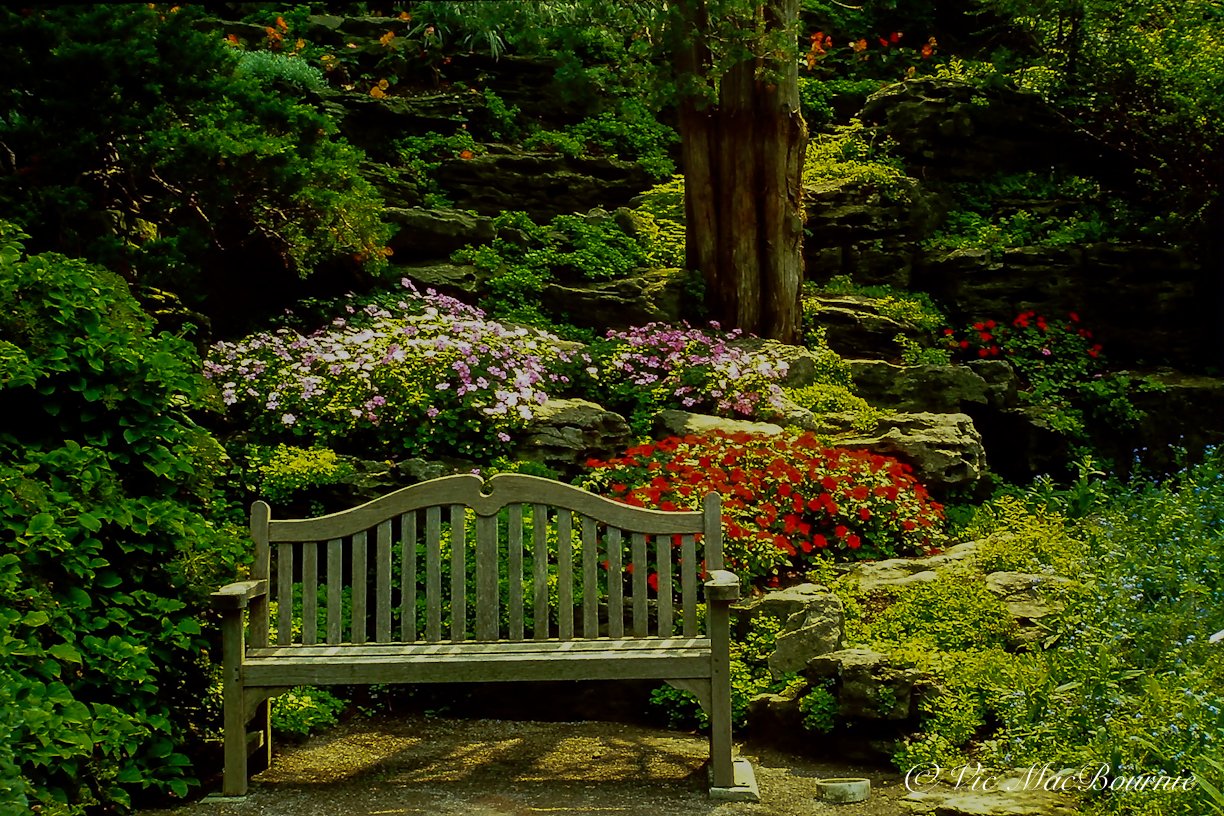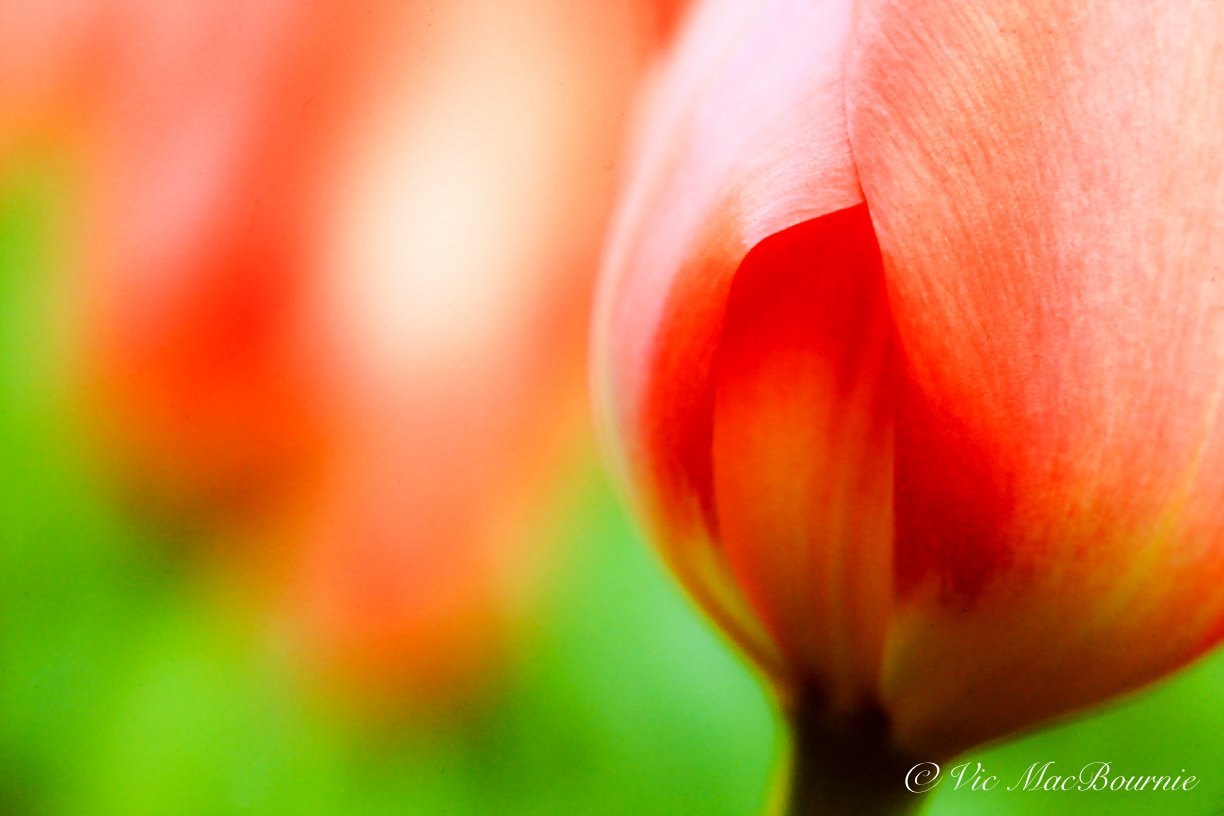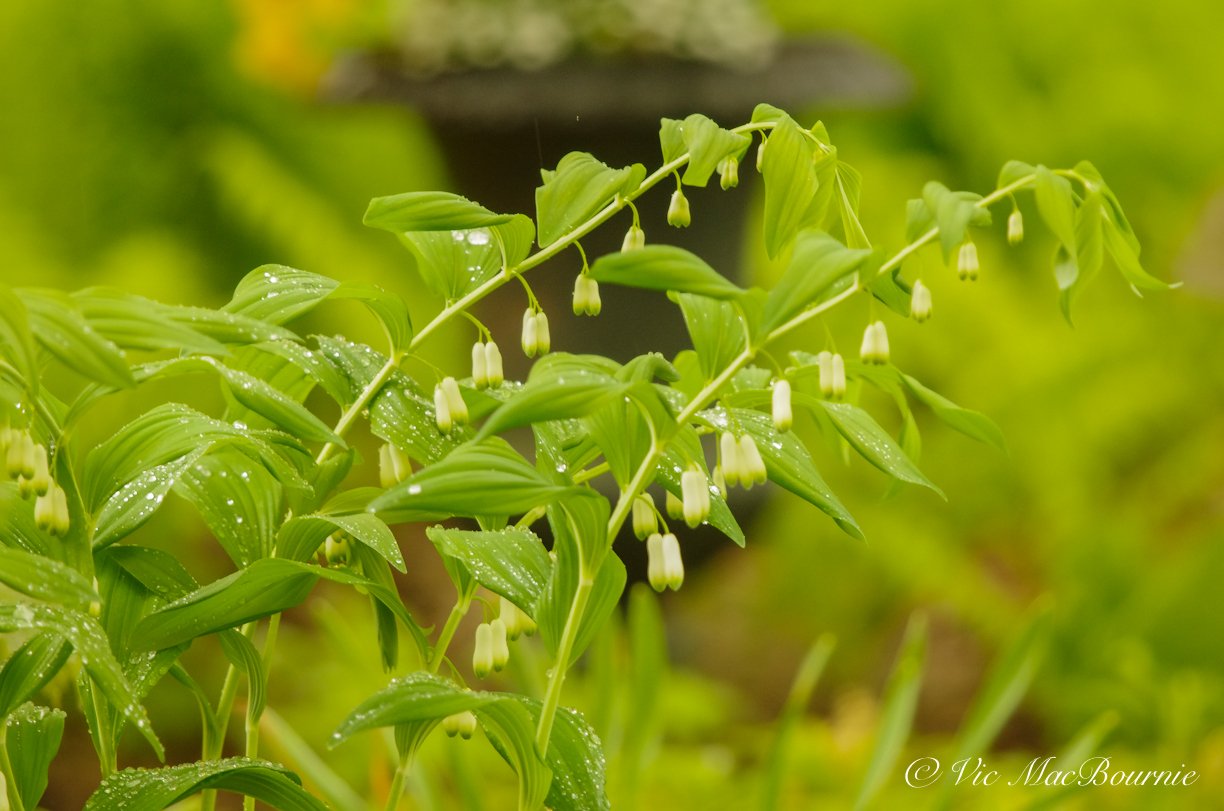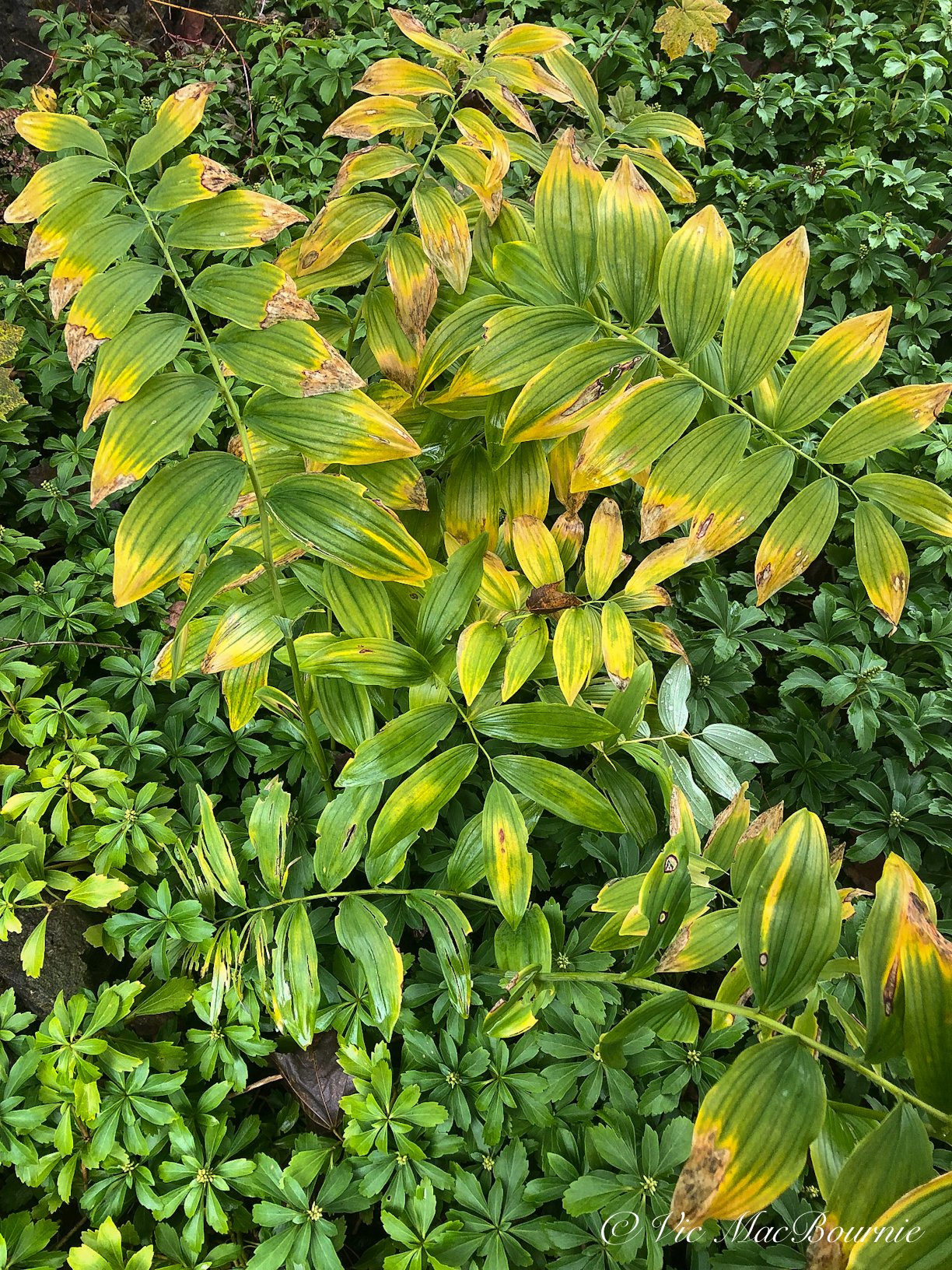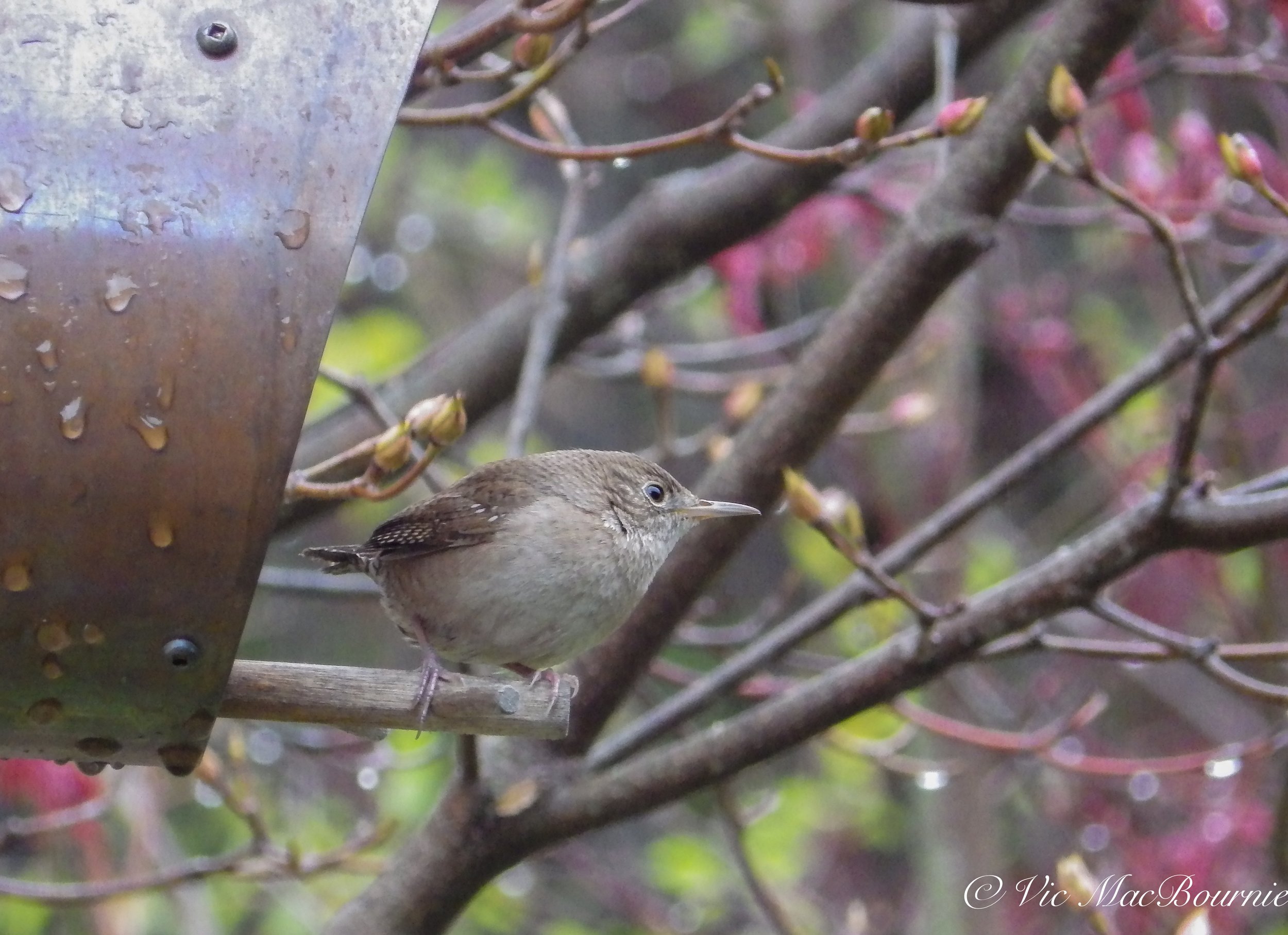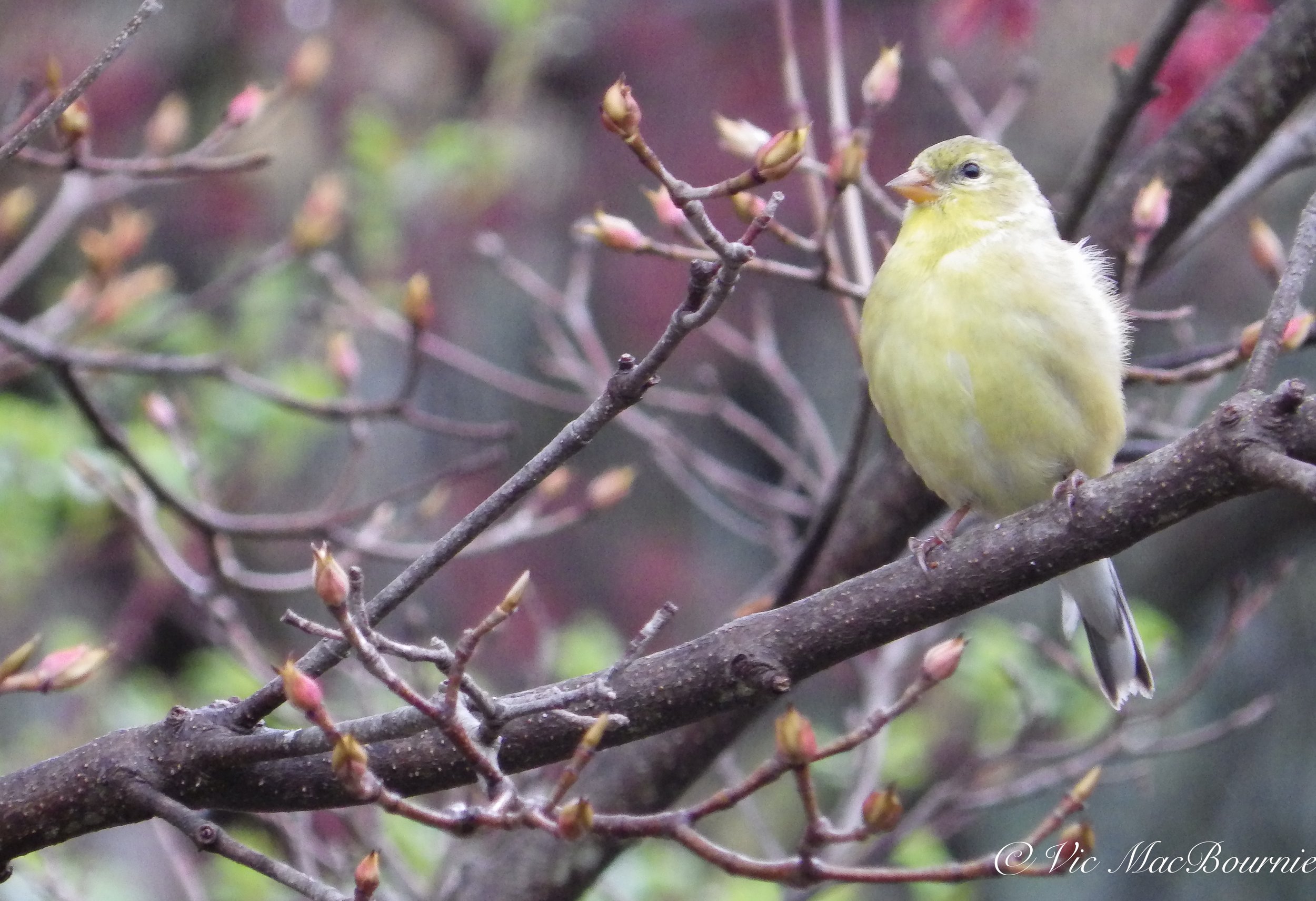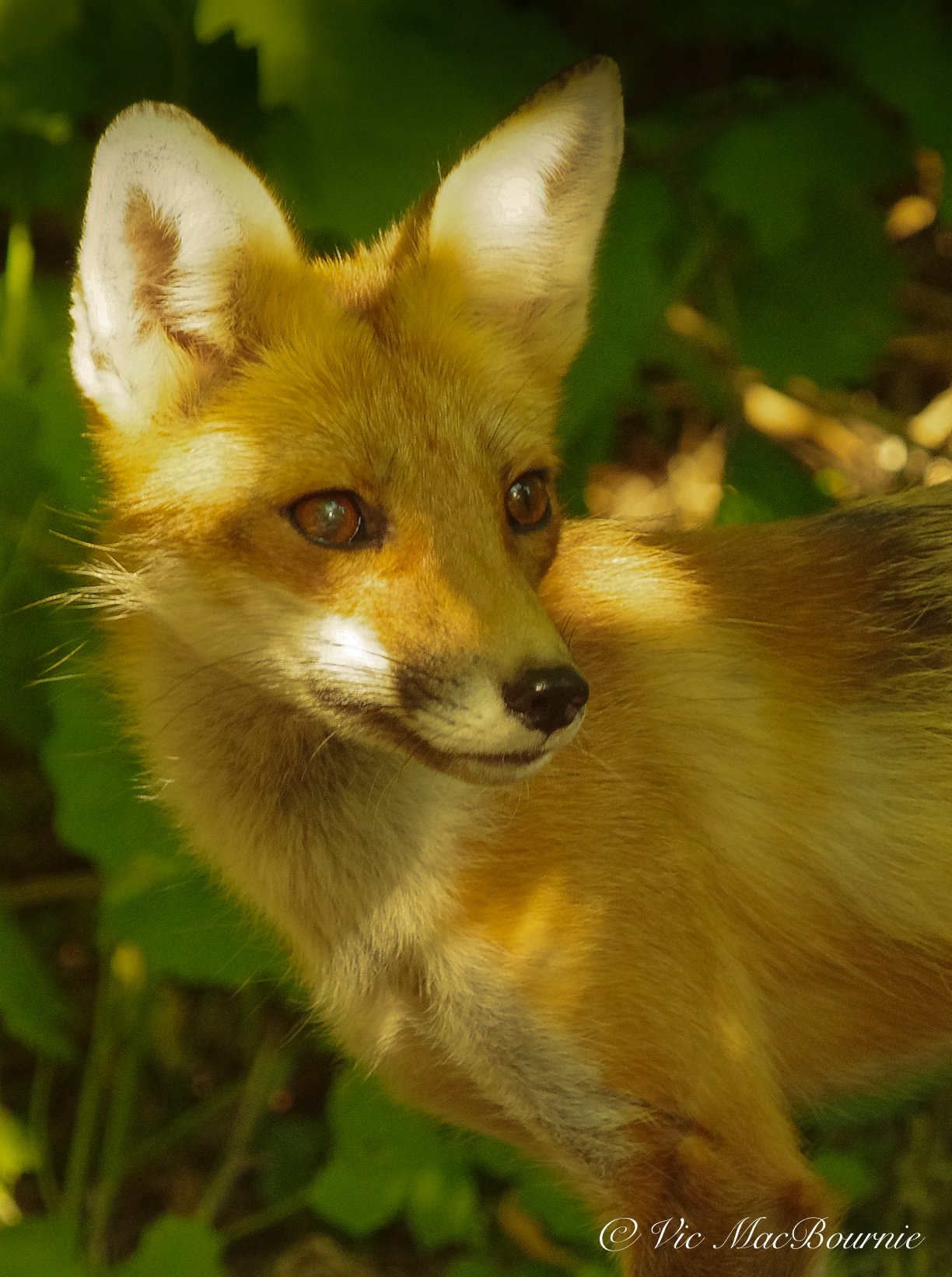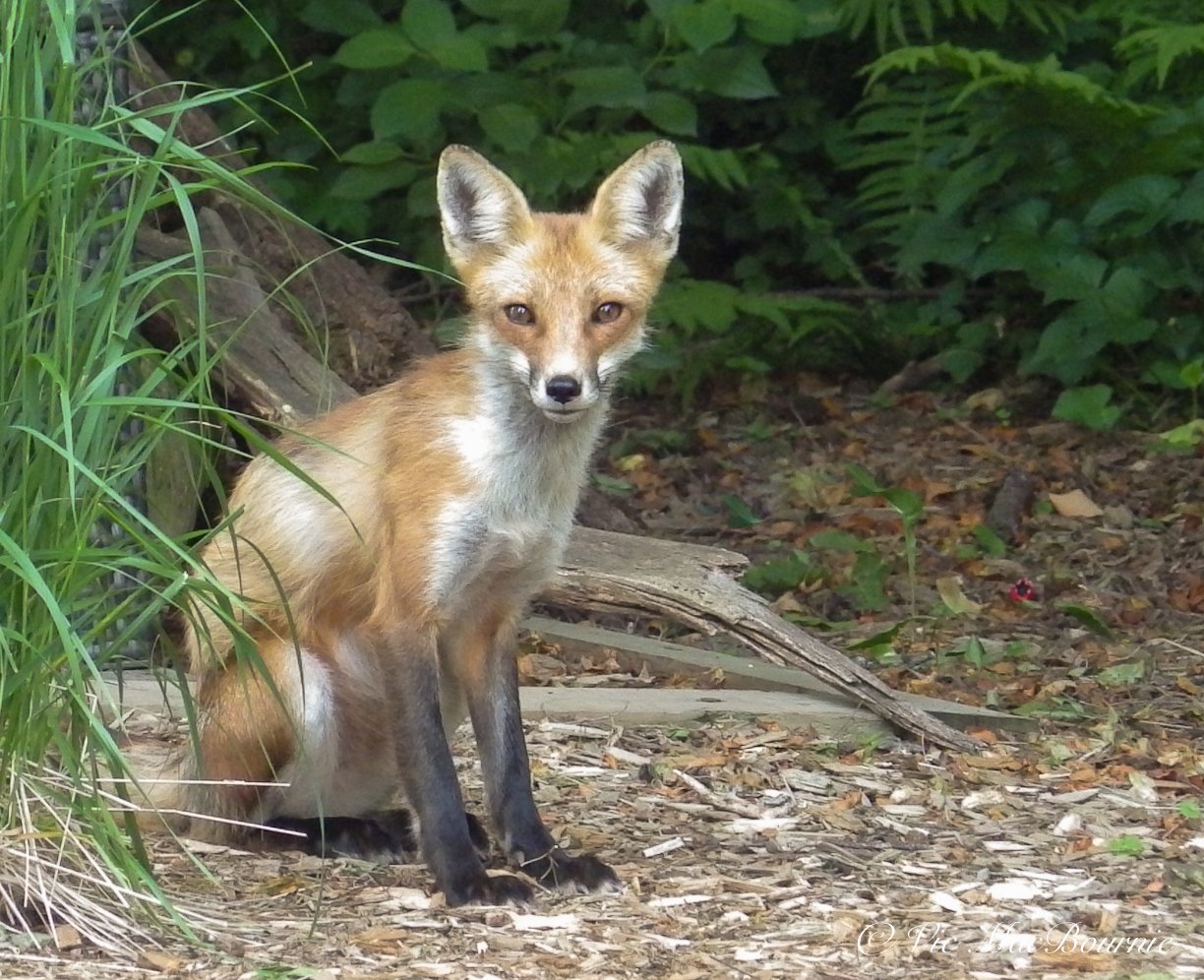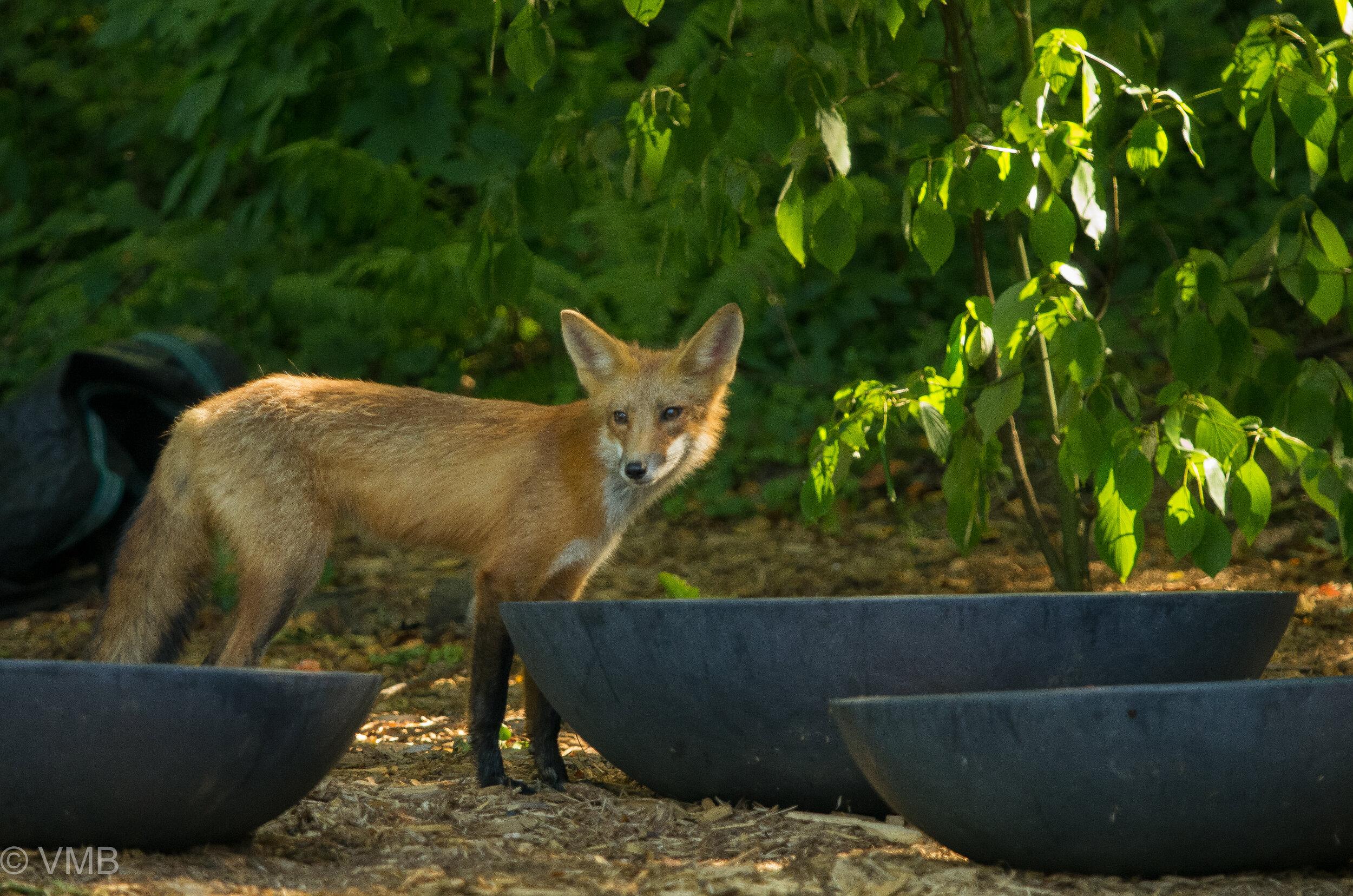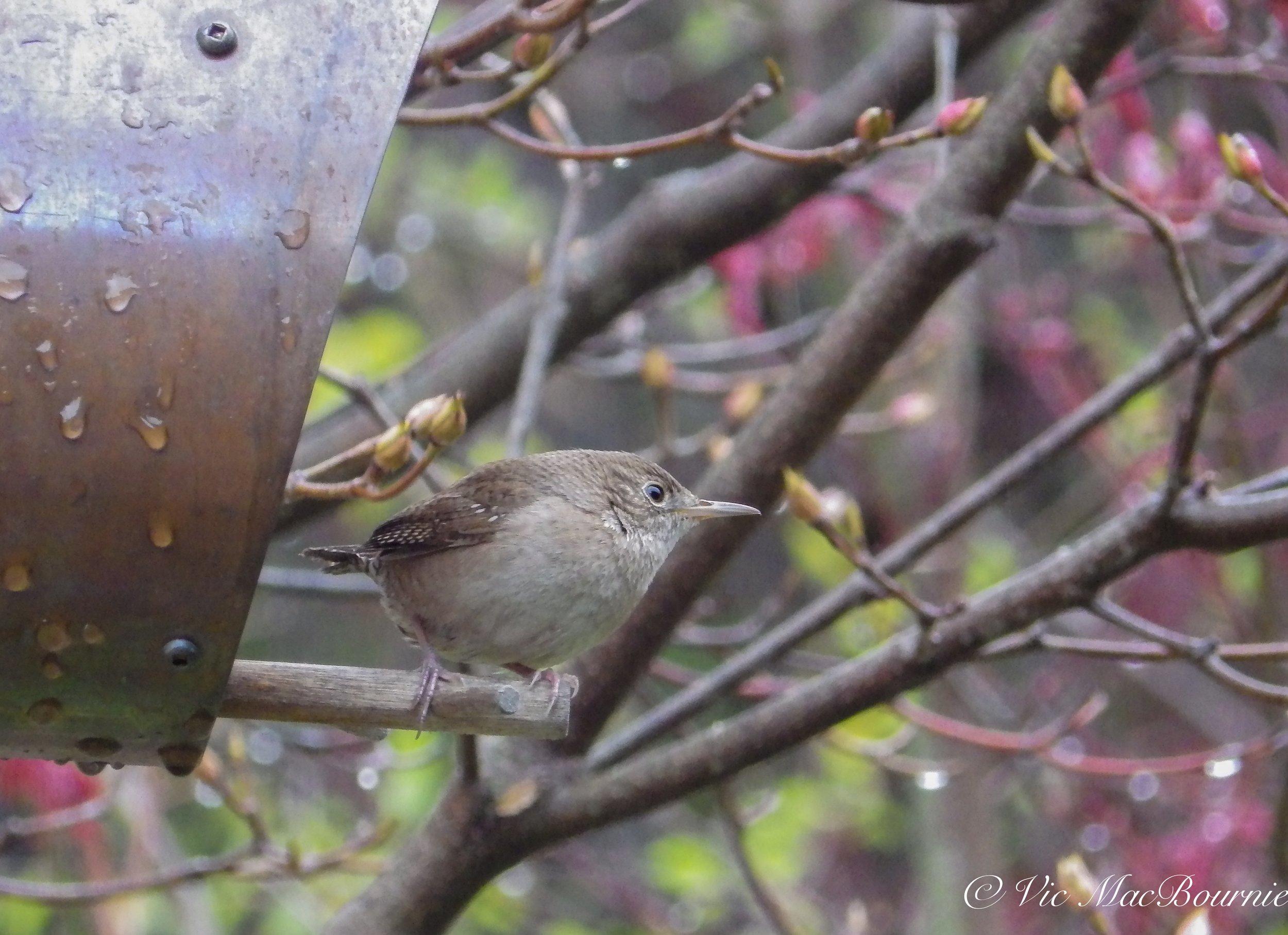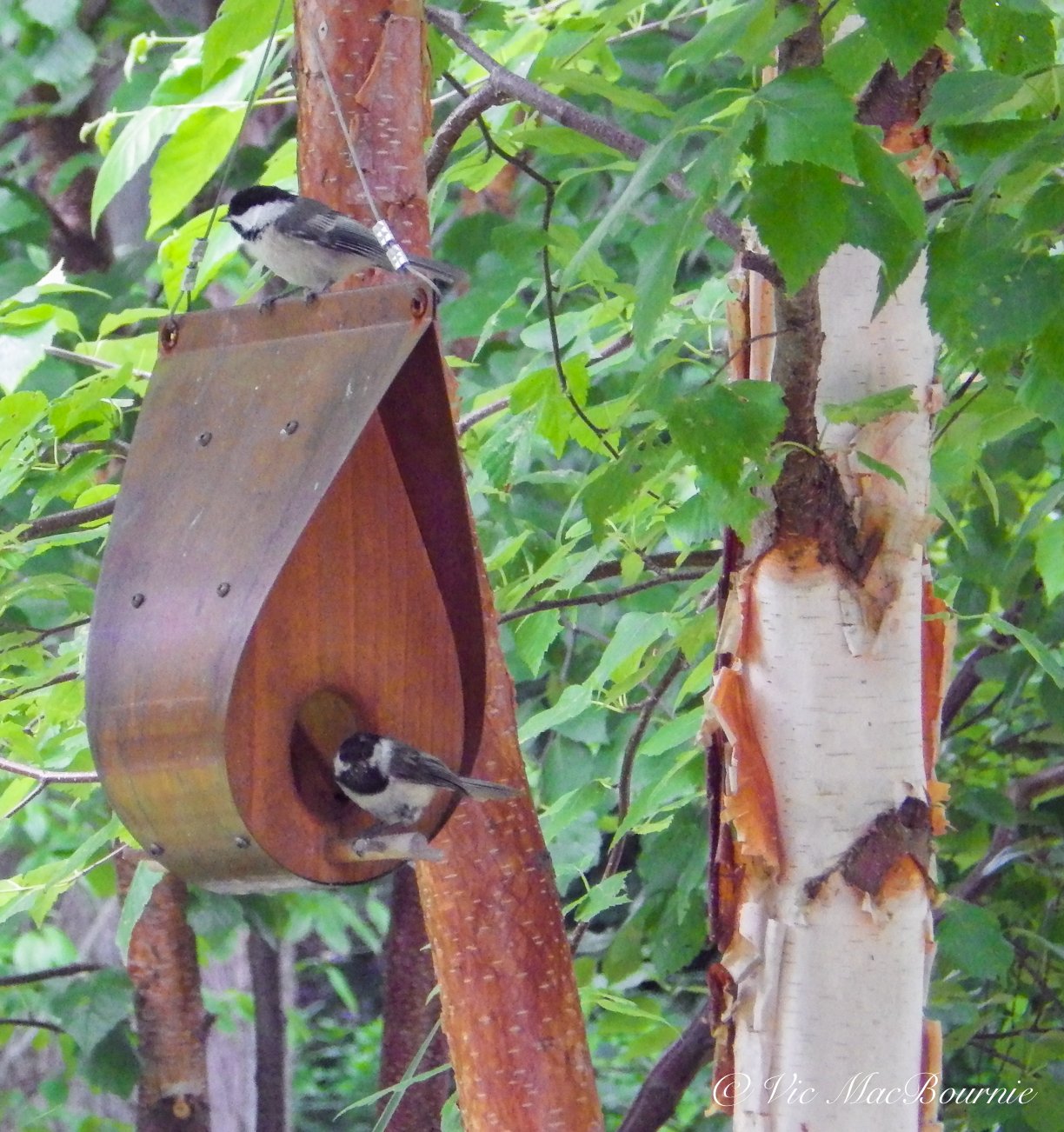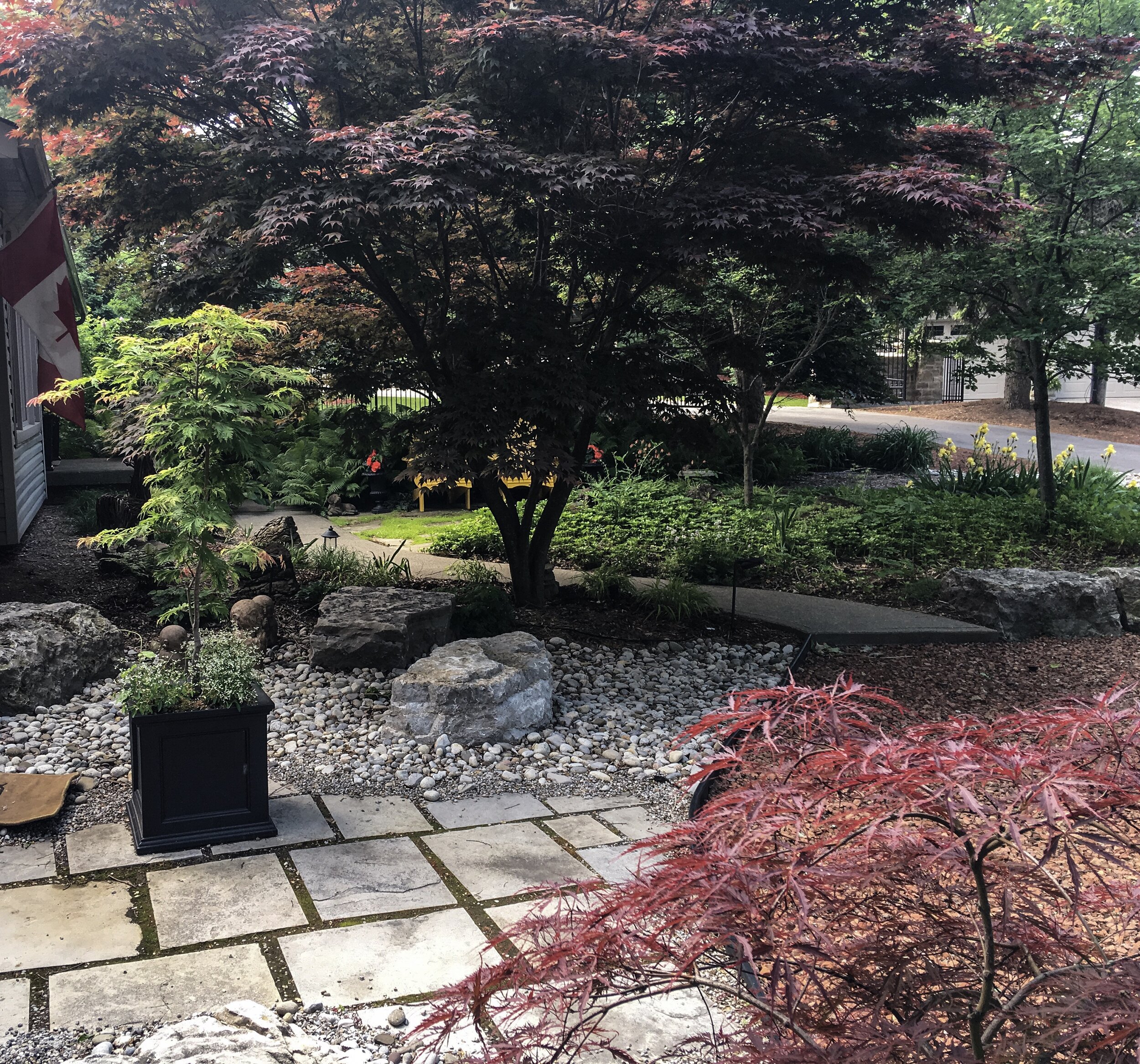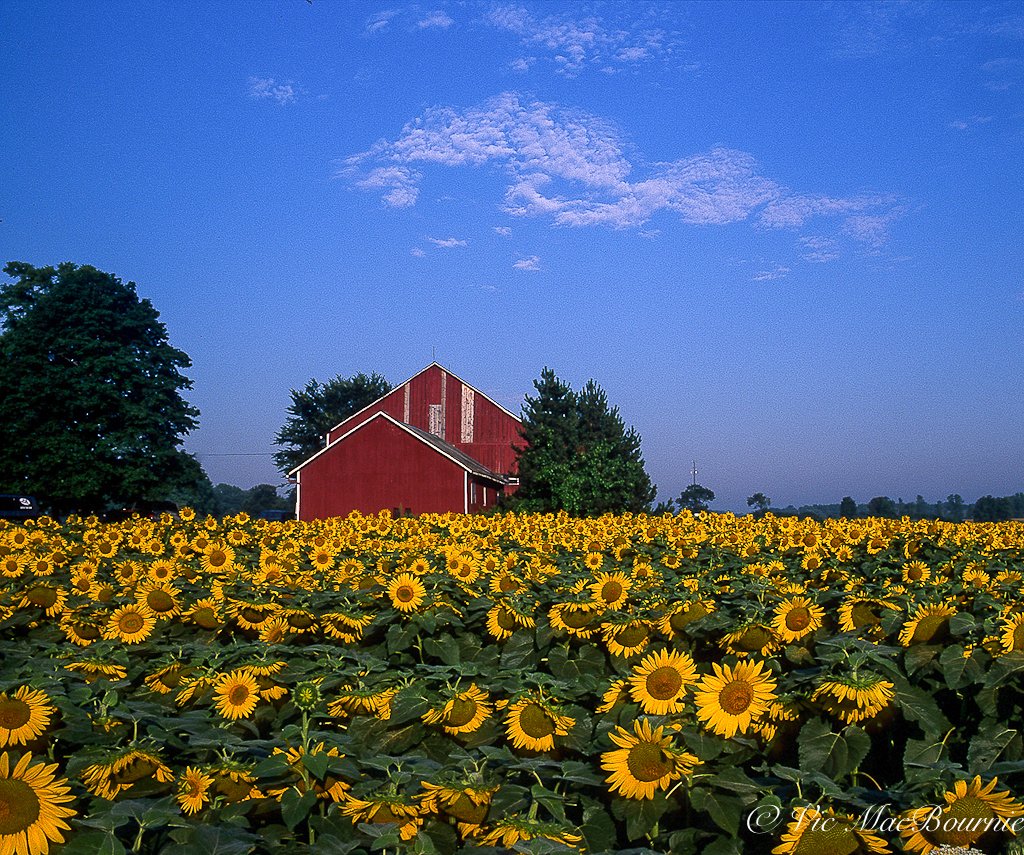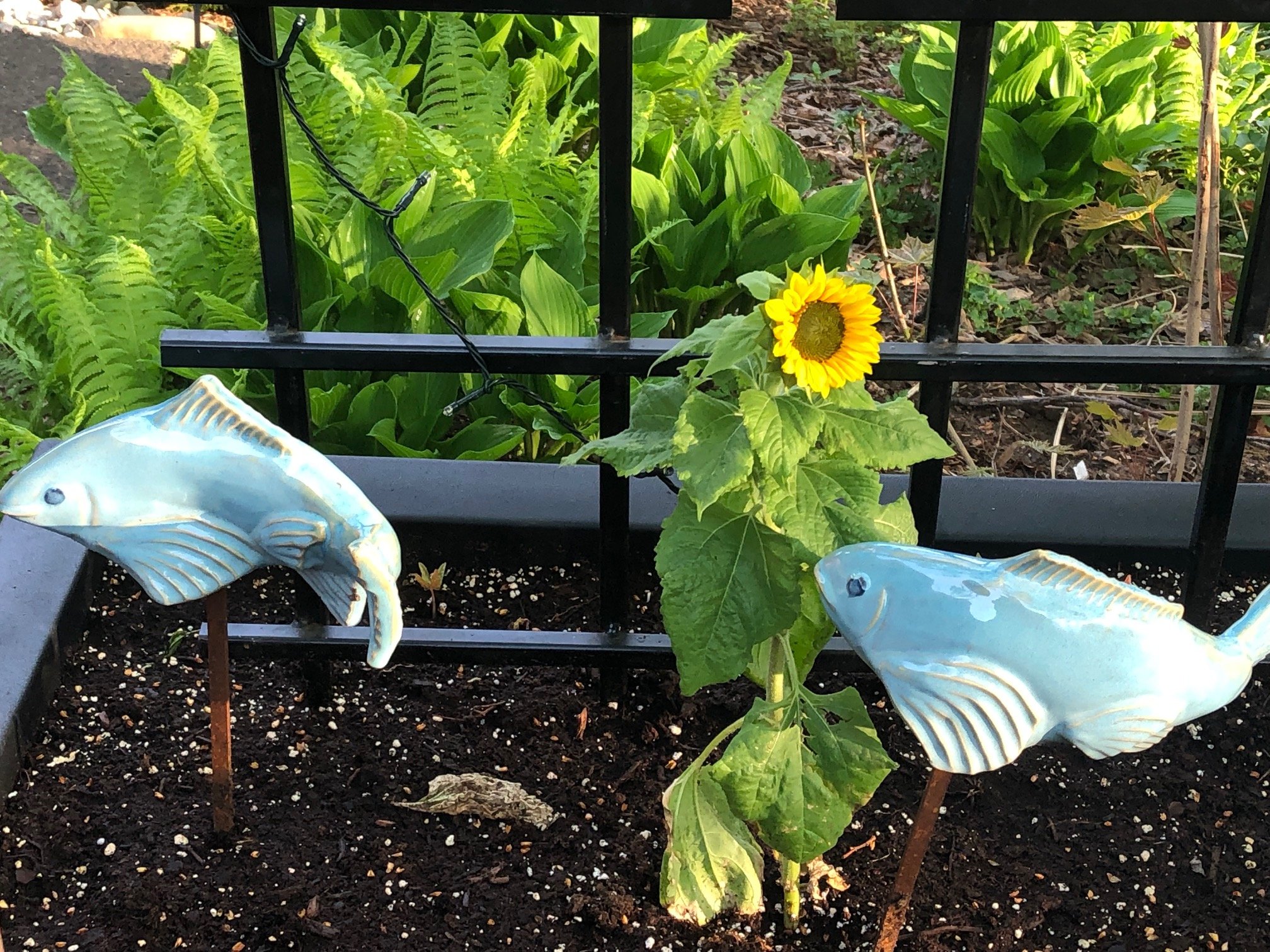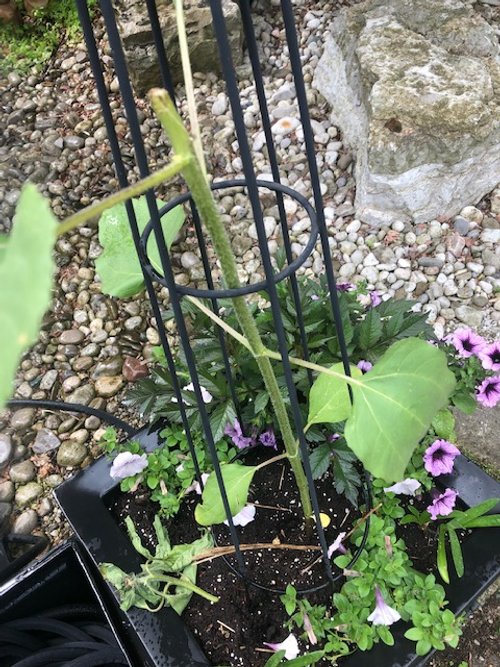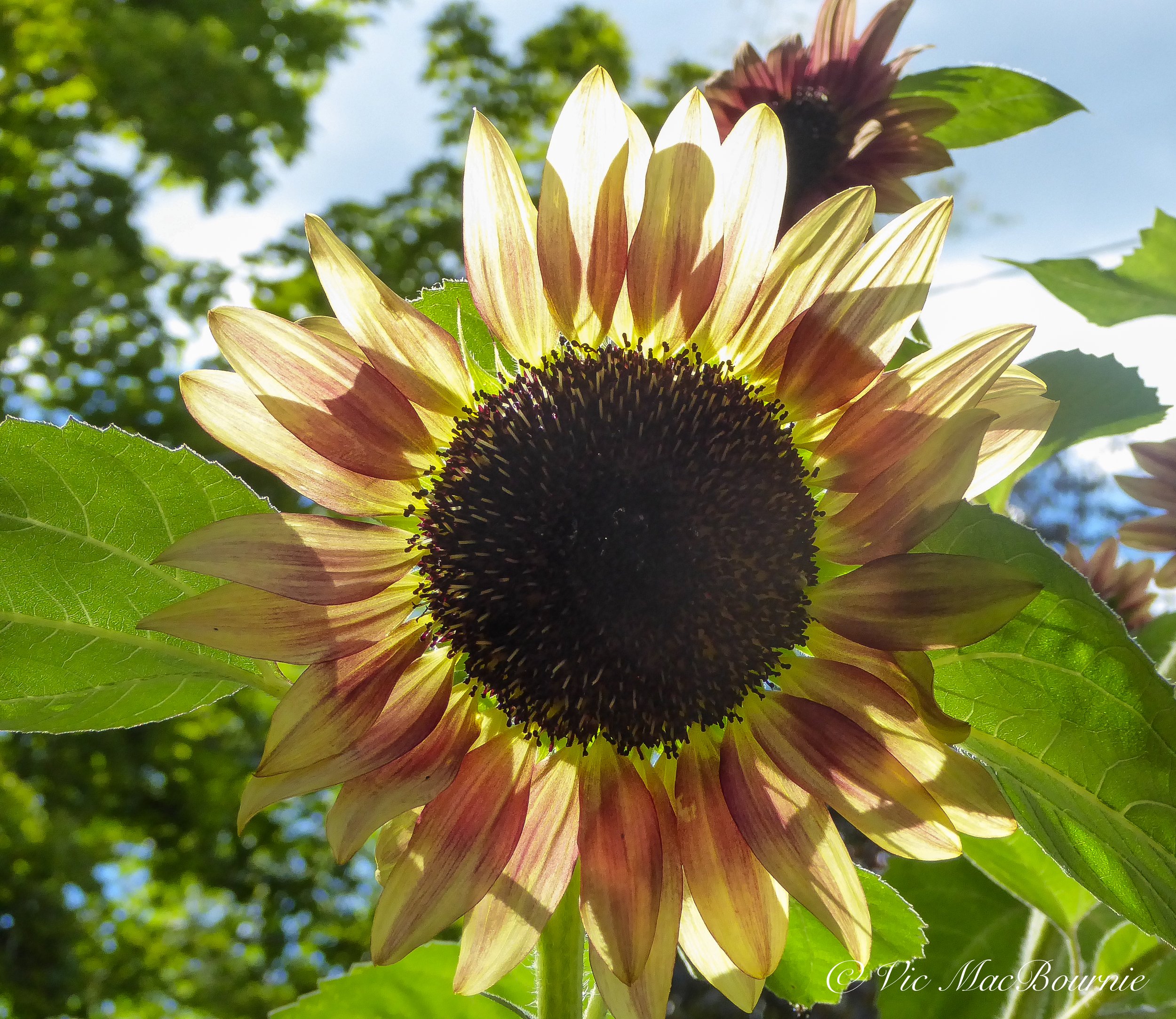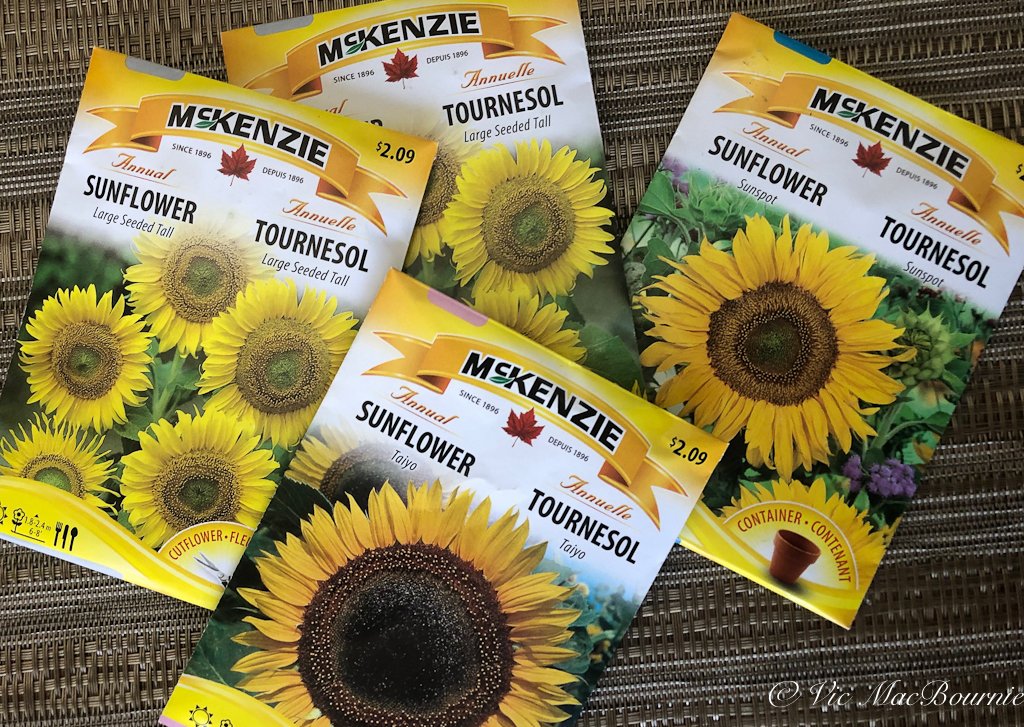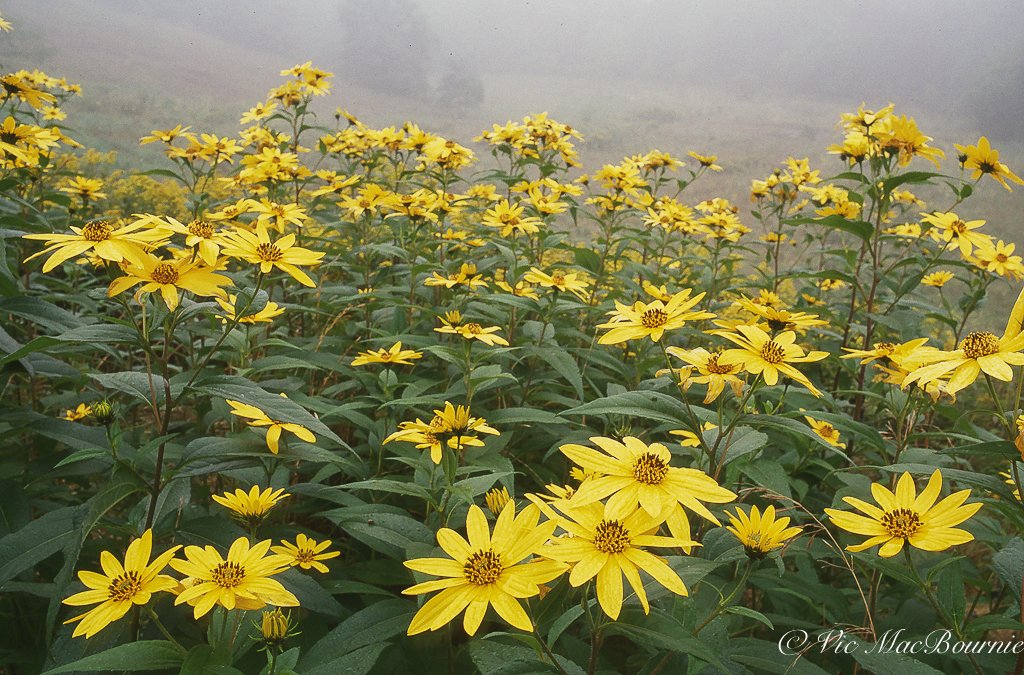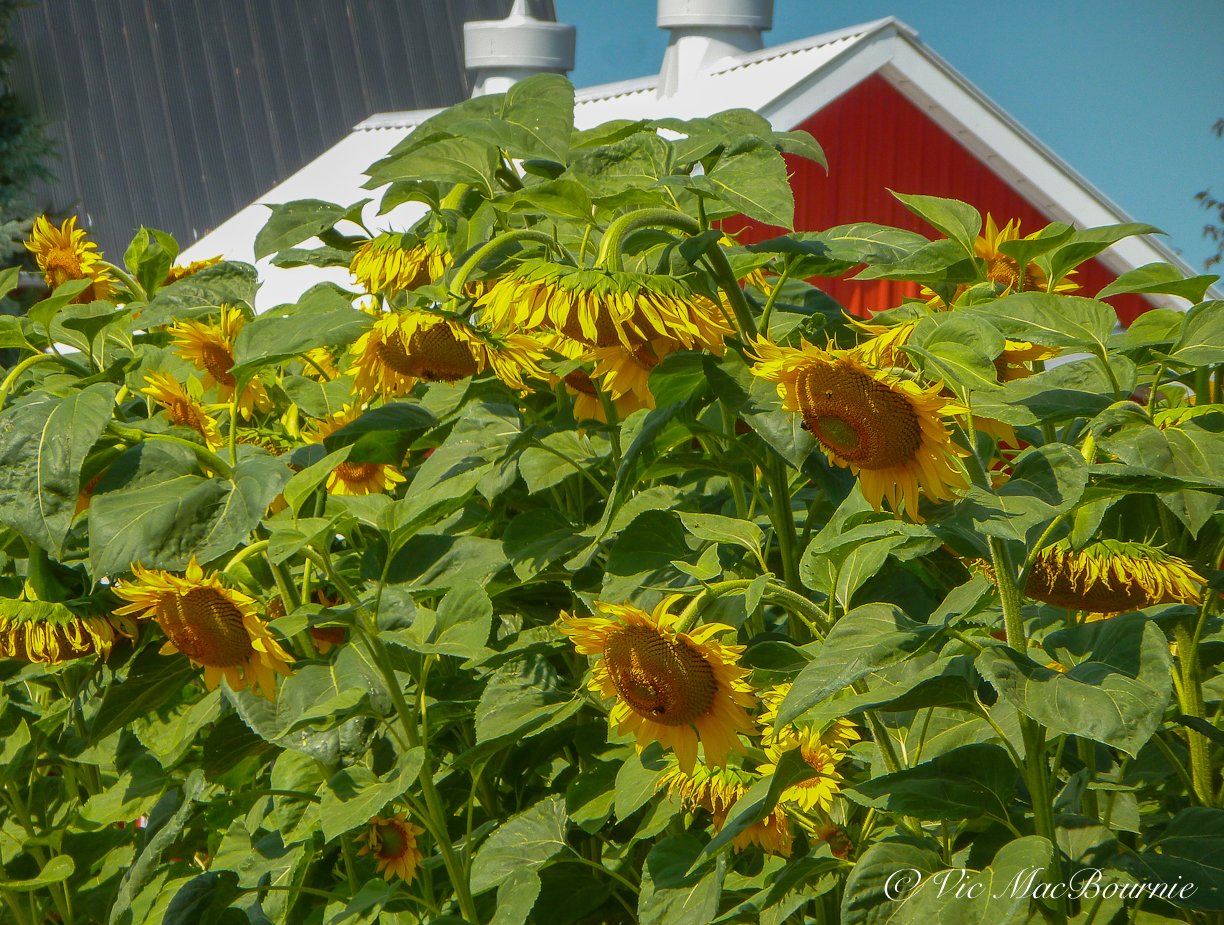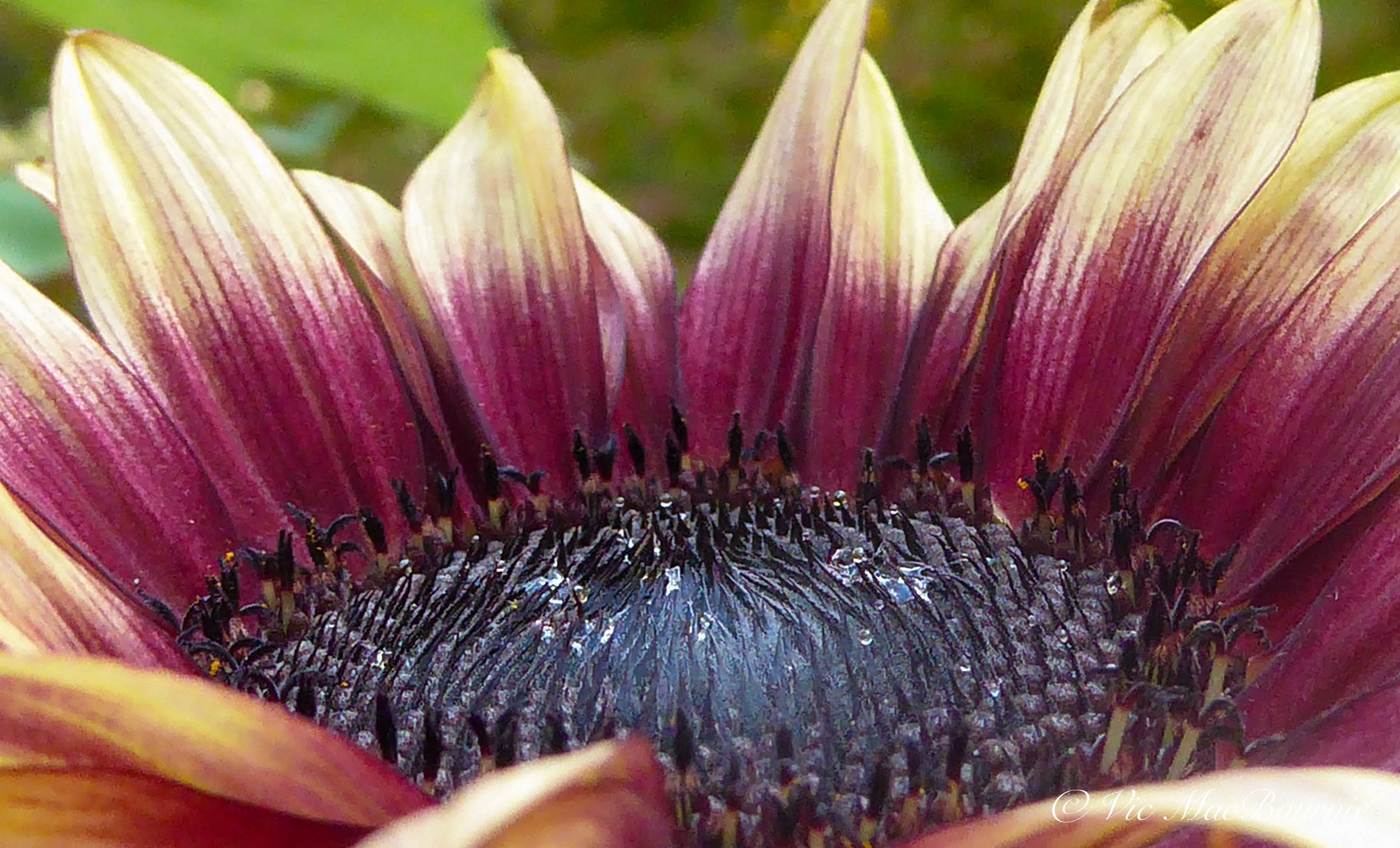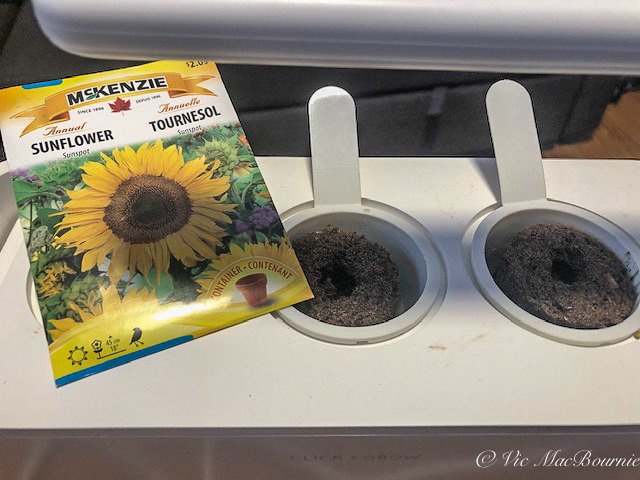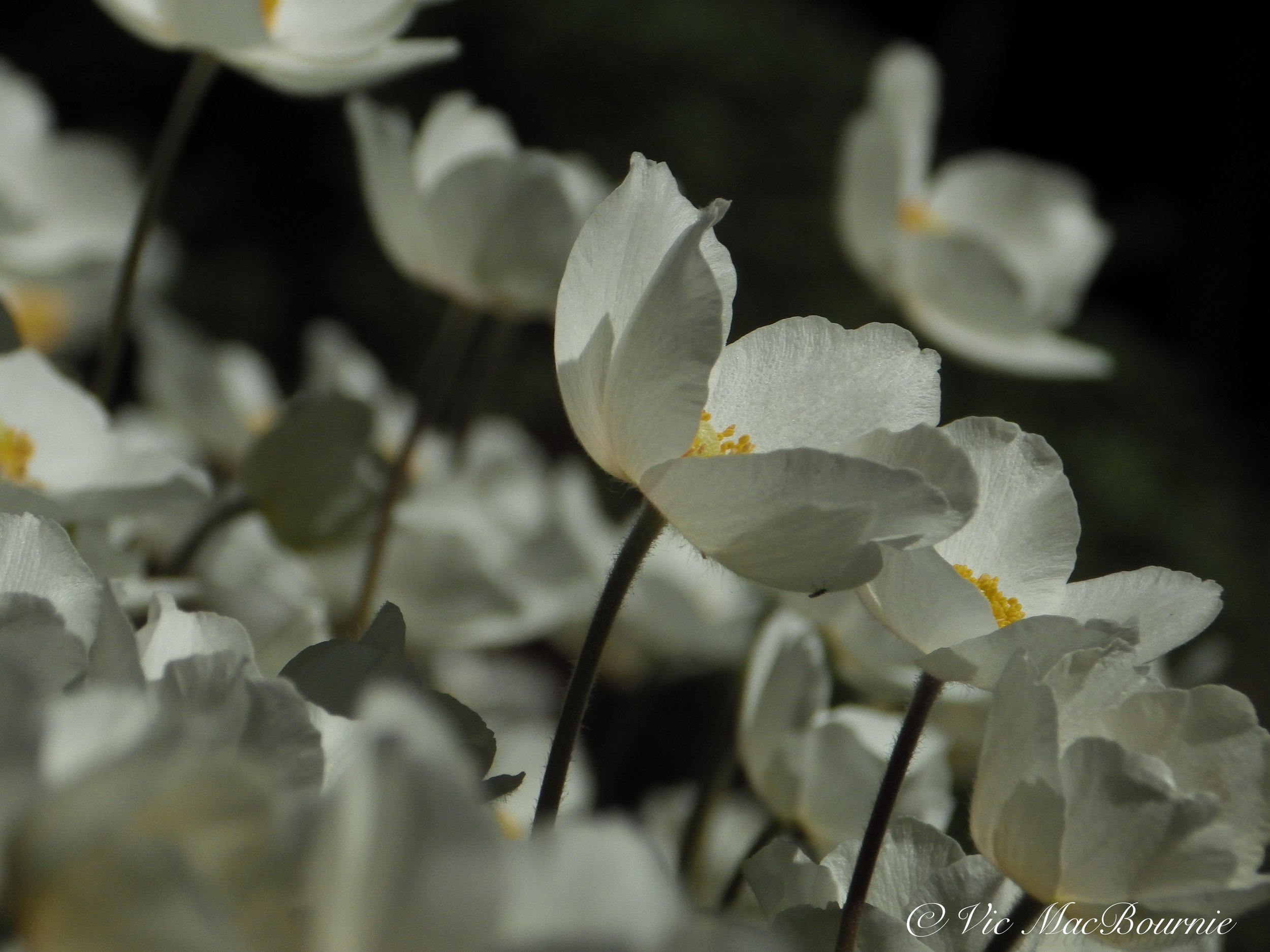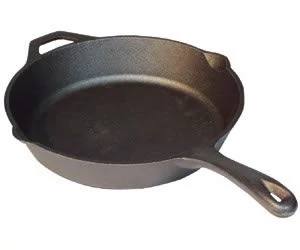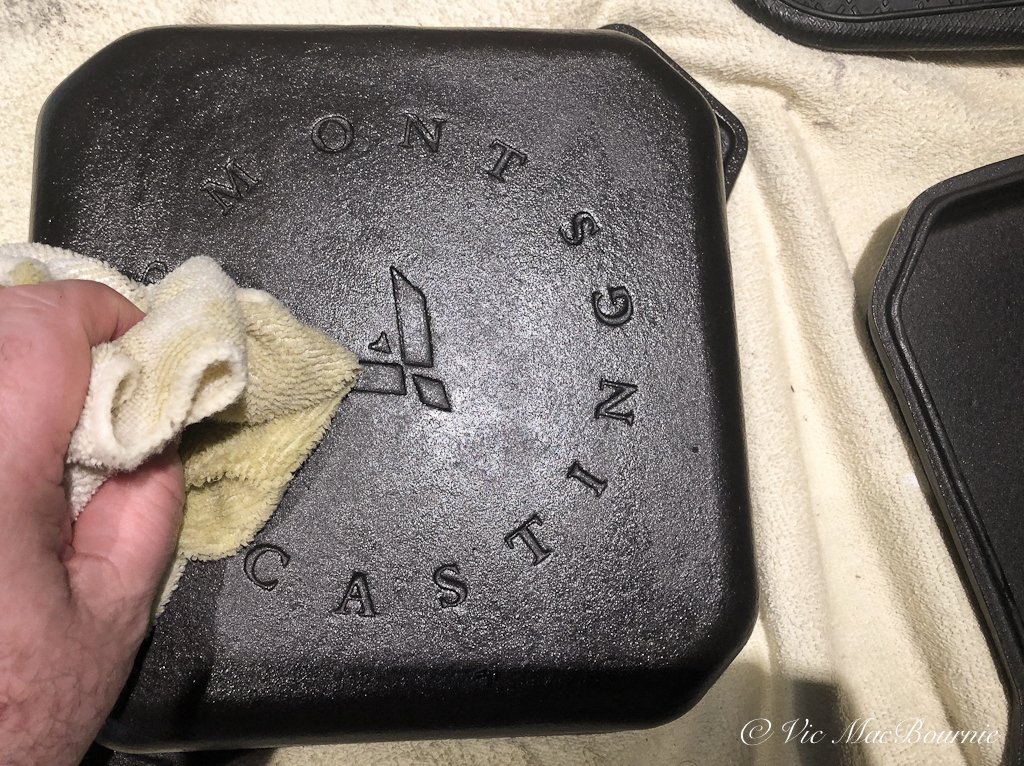Why is the tree in my front yard stressed and losing its leaves?
We are not the only ones stressed out about climate change. Our suburban forests are feeling the heat too and many homeowners are not doing enough to ease that stress. The result, trees that probably won’t make it past adolesence before a lack of water kills them.
Why is the tree in our front yard dying?
It’s a question that is asked on gardening groups daily especially in the heat of summer.
The simple answer is almost always a lack of water getting to the roots of the tree, but that is an oversimplification of a series of complex problems many inner city and suburban homeowners are facing and most are, unfortunately, choosing to ignore.
Chances are good that the tree is not dying, but under stress. Chances are also pretty good that, if action is not taken, the tree will begin to show more serious signs of decline. Over time, a lack of action will result in such decline that the tree will eventually die or have to be cut down or left as a snag for birds and other wildlife. It may take several years for the tree to finally give up and give itself over to the borers and woodpeckers.
But that tragic ending is not inevitable.
For more on dealing with trees showing stress, check out these posts:
• Why Birch Tree leaves turn yellow and fall off prematurely
• Birch clumps at home in the woodland
• Do not cut down that dead or dying tree
Don’t give up on your stressed tree too early
In a recent Facebook post a homeowner showed a picture of a maple tree in her front yard. She had already concluded that it was dying, and it appeared nothing anyone was going to say would change her mind. Despite assurances from others that the tree was just under stress and needed help, she maintained it was too late. The helpful posts from other gardeners were simply ignored because "other maple trees in the suburban neighbourhood,” according to the poster, “had already died or were in the process of dying.”
I don’t doubt that most of the neighbourhood trees were dying out.
One look at the picture, and it was clear the tree was a good example of a “street kid tree,: an orphaned tree, if you like.
Chances are, most of the trees in the neighbourhood were suffering from the same problem and dying off one by one. Their deaths certainly pointed to a major problem, but it most likely wasn’t what the homeowners all believed – that a disease was running through the neighbourhood.
In a woodland garden, there are more trees to cast shade. Here a large shade tree casts a delicate shade on smaller, understory trees and help them get through times of less rainfall. In addition, the ground is covered with a mulch to hold the moisture in the ground and ferns grow around the larger shade tree to help hold the moisture in the ground.
Now, there are many factors that could cause the trees to die off – including a disease spreading among them – but judging from the picture and what I could see on neighbouring properties, I’m pretty confident that the problem was water.
To be more specific, a lack of water getting to where it needed to go.
I’m also confident that the neighbourhood residents would tell you that they water diligently and assure anyone who asked that “there was no way watering was the problem.”
Make no excuse, the real problem is water and the role it plays on our suburban and inner city “Street trees.”
Watering the grass is not the same as watering a tree.
Five reasons suburban trees may not make it to adulthood:
• Most of the trees being pushed at local nurseries are meant as understory trees, meaning growing under the shade of larger trees like maples, oaks and other shade trees. Growing alone in the middle of a lawn means full sun. These trees are not prepared to deal with that much sun, especially these days when temperatures are soaring to new heights and staying there for weeks instead of just a few days. If the trees survive it’s likely because they benefitted from the two-storey home that might shade them for a period during the day.
• In most of today’s new neighbourhoods, water is diverted from the roofs of homes to underground pipes and shipped directly to the waste water plant where the already clean water is “cleaned” and fed back into lakes and rivers offering nothing of value to the plants and trees it was originally meant for. Again, it points back to a lack of water. In addition, these same trees are often planted close to a paved driveway that blocks any water from seeping through to roots that may have travelled under the pavement.
• The tree is often planted in the middle of a sea of grass that also sucks up what little water makes it to the ground, leaving little to no water for the tree. And, because it is planted in grass, it is susceptible to the gas-powered whipper snapper that trims the grass around the tree while it carves out the tender bark of the young tree and leaves it unable to send water and nutrients up its trunk if it could even find any.
• The volcano effect where homeowners pile up mulch around the trunk of a young tree sentencing it to a slow death.
• Finally, our little tree is an orphan in a sea of well fertilized and pest-free turf grass. Unlike its cousins in the forests that have a mother tree, siblings, cousins and a whole community to support it, our little guy is on its own to face the weather, harsh conditions and a lack of shade all on its own.
“Not only is turf grass a non-native species offering little to nothing of value to wildlife, pollinators and other insects that feed our birds, it’s sucking the life out of our suburban trees by stealing most of the water meant to give them life.”
Are suburban trees in trouble?
What’s a “street” tree you ask?
The term is explored in great detail in Peter Wohlleben’s best selling book, The Hidden Life of Trees, where the author uses it to explain the complex association and communication that a healthy woodland or forest exhibits and compares it to the everyday struggle inner city and suburban trees face.
The Hidden Life of Trees was clear about the benefits of forests over singular trees planted on a front yard surrounded by non-native grass and facing the world – the beating sun, the cold winds, freezing temperatures – on their own. He compares the “street trees” that are found in most urban environments, to “street kids.” These lone trees face difficult and almost always shortened lives compared to trees that share resources as a family group in a proper forest or woodland setting.
(You can read all about this excellent book in my earlier post The Hidden Life of Trees, and more here on Dr. Nadina Galle and her revealing work at her website “The Internet of Nature.”)
Dr. Galle, a Canadian living and working in the Netherlands, is focused on how we protect the urban forest into the future and she wants technology to be leading the way.
“Roughly 50-70 per cent of the urban forest in any given city is on private/homeowner land, which means only 30-50 per cent is actually in the maintenance area of the city,” Dr. Galle tells Ferns & Feathers from her home in the Netherlands.
“This is crucial because it shows the massive role homeowners can have in the development and longevity of the urban forest,” she explained via email.
That “role homeowners play” begins with taking care of the “street trees” on our properties that are part of the urban forests.
The importance of “community” in the natural world is brought home by the work of a group of women in Ireland who have taken the term micro or “pocket forest”to new heights.
By planting intensive miniature forests on tiny lots, some as small as a single shopping mall parking space, the team are proving that a full grown native forest does not have to take hundreds of years to grow into maturity, but can be done in as little as 20 years. For more on their work, check out my earlier post here.
City trees just need a little help
To better explain the concept of “street trees,” think about a teenager trying to grow up in the inner city without parents, a real safe place to call home and no friends or support to help them get through difficult times. Chances are that “street kid” is not going to make it to adulthood, but that doesn’t mean that without a little help that the same kid can’t become a successful adult.
The same can be said for our “street trees.”
Street trees under stress need our help to survive more than ever.
Our lonely trees are struggling
Let’s get back to the tree under discussion.
The picture showed a well-established maple tree surrounded by a sea of grass and a tiny garden around the base of the tree trunk edged with larger river rocks.
It’s a recipe for disaster that, unfortunately, is not that uncommon in many subdivisions.
(Just for some background, Street Trees in the inner city have a life span of as little as nine years. In human terms, that’s not much older than a toddler.)
The homeowner assured readers that the little garden around the tree was not the problem because other maple trees in the neighbourhood had died and had not had a garden around the trunk.
Wrong. The little garden wrapped tightly around the trunk may not have caused the tree’s decline, but is certainly another part of the bigger problem. The garden was climbing up the trunk suffocating the tree and possibly bringing disease to its trunk.
Removing the grass around a tree is an excellent idea that should be encouraged, but make it large. If you can spread it out beyond the drip line of the tree’s canopy. Every few years make it larger as your tree continues to grow and the drip line spreads out. This will allow water to travel to the roots much easier than having to penetrate the fibrous, thirsty roots of turf grass.
Remember that street kid. Let’s compare the garden to taking a winter coat away from the street kid in the middle of winter. Probably not the only reason the teenager is going to struggle during the winter, but a significant contributing factor. If the teenager gets sick, has no support structure and the temperatures continue to drop, there is a good chance the child will perish from the cold and sickness. The coat would certainly be considered a contributing factor, but death would likely be the result of pneumonia or hypothermia.
A little help with a warm coat and chances are the teen would have not gotten ill and survived winter just fine.
The right amount of water for our struggling tree will result in the same life-saving result.
Many homeowners, think a quick watering of the front lawn is all that the tree needs.
In other words, if the grass looks good, we are good to go,
Nothing could be further from the truth.
A need for deep watering
Trees need water and the bigger they are, the more they need. So as a tree grows in your front yard you need to take this into consideration. This doesn’t necessarily mean you need to water more and more as the tree ages. It does mean, however, that the tree needs to be able to access water deeper in your soil. Tree roots will find that water, providing there is sufficient water to find.
A huge problem in suburbia is, you guessed it, those acres of turf grass so many homeowners like to worship from the sidewalk.
Not only is turf grass a non-native species offering little to nothing of value to wildlife, pollinators and other insects that feed our birds, it’s sucking the life out of our suburban trees by stealing most of the water meant to give them life.
Even a heavy rain is likely only going to water the grass and the first few inches of the soil.
That’s likely not enough.
We need a deep watering. The kind our suburban trees often get in spring when 3 feet of snow slowly melts and the water works itself slowly and deeply into the ground.
That’s a deep watering.
How do you deep water a tree?
In other words, pull out your garden hose, turn it on to a little more than a trickle (not full open,) put it at or around the drip line of the tree (approximately where the outer leaves of the tree are located) and let it run for three hours. Then move it about a quarter of the way around the tree and let it go for another three hours… and then do that at least two more times until you have watered around the entire circumference of the tree. Yes that’s up to 12 hours of watering, but not 12 hours of all-out watering.
You don’t need to do this on a weekly basis.
On a good year, where we get lots of rain, you may not have to do it at all.
If you have a woodland garden where the tree roots are shaded for most of the day and enjoy the company of other trees, you may not have to ever do it.
But if you are going to plant a tree, in the middle of your yard, in the blistering sun, with turf grass all around it sucking up what little moisture there is, plan on doing it several times over the summer.
That’s the reality.
If that’s too much to ask, be prepared to lose your priceless tree just when it is beginning to look good and add value and some shade to the property.
What other factors cause stress in trees
One look around a typical suburban neighbourhood these days and you would be hard-pressed to find a property with more than a single sad tree growing in the front yard.
Too often the properties are small and the thought of a large oak or maple tree growing in the front yard is too much for new homeowners to imagine. They worry about the roots heading straight for the foundation, or worse, the tree falling on the home and demolishing it in one full swoop. Needless to say the oak tree won’t reach anywhere near that size in the homeowner’s lifetime.
Instead, miniature trees (more properly named under story trees) guaranteed to grow no more than 10 or 12 feet, are purchased and proudly planted in the middle of the grass where they are exposed to 12 hours of searing sun day after day, are open to salt spray from the roads and freezing winds in winter.
They have no protection, are usually non-native trees so likely can’t deal with the harsh conditions we throw at them, and they are asked to do this all alone. But, and this is important, they have pretty double flowers that are infertile so they don’t bear fruit and make a mess (sorry for the sarcasm). Some, in fact many homeowners, would unfortunately call that a win-win. Not for wildlife it isn’t.
Unfortunately, the chances of that under story tree surviving are slim. If it does survive, it will most likely struggle its entire life and never perform the way it was originally meant.
And the more of them that are planted, the more our suburban forest is threatened. As our large native shade trees slowly give way to weeping whatevers, so too will the birds, insects and mammals that depend on the large native trees for the caterpillars and other insects they provide.
If you live in a typical new subdivision, take a drive to an older, nearby neighbourhood where the houses are older and lot sizes are also on the small size. Notice the large Maples and Oak trees growing and recognize the character the surviving trees provide to the neighbourhood. These trees were likely planted at a time when today’s miniature, weeping variety of trees were not yet available. Imagine, one of these in your front yard or towering over your patio in the backyard. Imagine the shade, the birds singing and the whisper of the leaves in the evening.
Now go out a plant one for the future. The under story tree can go in next year or the year after when the shade tree can protect it from the heat of our ever increasing mid-day sun.
Can Canon’s PowerShot Elph 500 hold its own in the garden with flower photography
Eleven years after its introduction the Canon PowerShot Elph 500 HS continues to shine when it comes to garden photography.
Garden Elph is great for flower photography a decade after introduction
It was 2011 and Canon released its PowerShot Elph 500 HS complete with a modern touch screen to help combat the popularity of the emerging smartphones equipped with some pretty decent built-in cameras. About two years earlier, Apple had unleashed its iphone and it was gaining popularity in the world of point-and-shoot cameras. Something had to be done.
It was also the year of uprisings in Egypt, Libya, Syria, a devastating tsunami in Japan and the death of Osama bin Laden. On a lighter note, The King’s Speech and Toy Story Three were big hits, the St. Louis Cardinals won the World Series and the Bruins won the Stanley Cup.
It was also the year we bought our daughter a Canon PowerShot Elph 500 HS. For the next couple of years, that camera would travel the world with her throughout Europe, the United States and Canada taking thousands and thousands of pictures of her synchronized skating adventures, concerts, vacations and who knows what else.
Be sure to go to the end of this article for links on Canon’s refurbished items as well as cameras that competed with the PowerShot 500 back in its day. Also, at the end of the article are new cameras you might want to consider purchasing if a used camera is not what you want or you cannot locate a good used camera.
It served her well during those first few years but eventually the iphone more or less made it obsolete. The camera wasn’t actually obsolete at all, but it was no longer cool for young people to carry a point-and-shoot camera around when a phone made sharing on social media so much easier.
Be sure to check out my comprehensive post on Getting the Most out of Your Compact Camera.
If you want to see more garden images taken with the Canon Powershot, please check out my Canon Elph 500 Gallery of images.
For more on photographing flowers, check out my post on Flower Photography in your Garden.
The impressive back screen of the Canon PowerShot Elph 500 HS showing its menu.
The Canon Elph with its simple yet elegant front face.
Looking down from above on the Canon Elph’s top plate.
So it was tucked away in a drawer and almost forgotten.
Camera is ideal for flower photography
Fast forward 11 years and this little point-and-shoot that cost my wife and I more than $400 from Costco way back then, is a high performing part of my garden camera arsenal and a stellar performer when it comes to flower photography.
The tiny Canon Powershot Elph 500 HS is more than capable of capturing exquisite images in the garden. It’s extremely wide 24mm equivalent lens is fast and sharp. Eperimenting with the filters including the vivid colours used here can make the images really pop, especially considering the camera is approaching 12 years of age.
Who said an 11-year-old, high quality point and shoot digital camera is no longer usable?
In fact, this little blue-grey and silver beauty with its 12.1 megapixel CMOS sensor and 4.4x optical zoom lens (equivalent of 24-105mm lens) is becoming the perfect companion for me on my morning strolls around the garden. The fact it takes a regular SD card and shoots HD movies means it continues to challenge even the most modern point and shoot cameras.
The Canon Elph’s 24-105mm lens has the pulling power to capture detailed garden vignettes in vivid colour.
Some Key Features in the Canon PowerShot Elph 500 HS
12.1MP CMOS Sensor
4.4x Optical Zoom 24-105mm Lens (35mm Equiv)
Optical Image Stabilizer
Good Low Light/High ISO capability for its age
Full 1080p HD Video complete with stereo sound
Hi-speed burst shooting that can take up to 8.2fps
Slow Motion Movie Mode – at 240fps
Effects Include Toy Camera, Monochrome, vivid, portrait and foliage settings
Smart AUTO Has 32 Scene Modes
Movie Digest Mode that automatically records a short video clip every time you shoot a still image. The camera will then combine the clips into a single video. Perfect for a day of shooting in the garden with your children or grand children.
The lens allows a close approach to fine garden details like this moss growing between stepping stones in the Japanese inspired garden.
Is this little Elph worth buying today?
A quick search on Ebay and used camera outlets puts this little gem of a camera at between $50.00 for a well used model to almost $300 for a new-in-the-box-model. Expect to pay about $100 for a good used one. You may be able to get one much cheaper if you keep your eye on Kijiji and other more local on-line marketplaces.
Capturing more intimate scenes in the garden is easy in the auto mode where you let the camera recognize the scene and provide the best settings to capture it.
That’s a lot of camera for under $100. Its performance in low light makes it great for everything from travel photography to, of course garden photography. Its multiple frame bursts and best-image-capture settings make the camera ideal for parents and grandparents to grab shots of children, pets and vacation images. Set it on auto and it’s good to go but if you want more control it’s there for the taking.
What features does the Canon Elph 500 boast?
The fast f2.0, 24mm lens is more than enough to take in long garden vistas, in early morning light, while the 105mm has enough pull to capture more intimate garden vignettes, and with a little effort some garden wildlife.
It all comes in a package so compact that it slips into my pocket so easily that I forget I have it with me at times.
But what about the pictures?
The Canon PowerShot Elph has the ability to capture garden images in fine detail.
These images should speak for themselves.
The Canon spits out sharp images, with punchy colours and features enough built-in filters to keep the creative juices going year round.
I particularly like the “vivid” setting which gives the images the look of Fuji’s Velvia film on steroids. Add to that, an impressive “foliage” setting that enhances greens and fall foliage colours, a B&W setting, Cyanotype setting (blue cast), sepia setting, colour accent and poster settings just to name a few.
It would be easy to think this camera is nothing more than a simple point and shoot with very little extras to offer.
Afterall, there are no knobs and wheels on the camera’s exterior, and very few buttons outside of the on switch and image review button. The smartphone may have made the camera obsolete in some ways, but it wasn’t because it lacked the latest touch screen technology. Hidden inside the large LCD screen on the back of the camera is a wealth of settings buried in the settings menu.
A foliage setting on the camera is perfect for capturing the subtle colours of green in the garden as well as the pop of fall colours in the woodland.
Once you get into the menus, this camera is loaded with all the settings; Program, AV aperture value, TV time value, a portrait setting, pets and children setting, a total of 32 scene settings… . It even has a smart setting where the camera automatically selects the best shooting settings for optimal quality based on subjects and environmental factors to provide point-and-shoot simplicity.
It also features optical image stabilization, hi-speed burst shooting at up to 8 frames per second and full 1080p HD video with stereo sound.
What’s not to like about the camera?
I like lots of exterior buttons and dials to control the primary functions of a camera. This camera has none of these.
In fact, there are only a total of three buttons on the exterior of the camera: one to turn the carmera on and off; the shutter button to take the picture and an auto switch that allows the user to put the camera in complete automatic mode. If you are happy letting the camera make most of the decisions, put the camera on auto and snap away.
The camera’s functions – and there are a lot of them packed into the camera – are all accessed through menus from the large screen on the back of the camera. If you are comfortable sorting through digital menus to find the settings you need, than this camera is for you. It only took me about a half hour of playing with the camera to get a good feel for where the various modes and features were hiding, but when I needed to find burst mode quickly, I struggled to find it buried in the menus.
Who should own the Canon Powershot 500 Elph?
Anyone looking for a high quality, pocketable point-and-shoot camera and are not put off by sorting through digital menus rather than using old-school dials, will enjoy this camera. If you are looking for a camera that pushes you to be more creative then you will love the camera’s extensive filter capabilities from Black & White images to vivid, toy camera effects, portrait and even a foliage feature that brings out the best in greens and fall colours.
What more could you ask for?
The vivid feature in the camera results in nice punchy colours reminiscent Fuji’s Velvia slide film.
Can’t find a good used Elph, here are some new and used alternatives
If you like what is possible with a good point-and-shoot camera, but can’t find a good used version of the Canon PowerShot Elph 500 HS, here are a few recommendations you might want to consider.
Around the same time as the Elph 500 was released, Canon released the Powershot S100. Almost instantly, the camera took on a cult following and was considered by many to be the pro photographer’s backup Point-and-shoot camera.
This was also released in 2011 and sported a 12.1 megapixel sensor, a slightly longer 5x telephoto lens ranging from 24mm up to 120mm, a better performing sensor similar to the one used in its EOS SLRs including an on-chip noise cancellation system, and microlenses that improve its light-gathering characteristics. At the time, Canon said the improved sensor results in reduced noise and increased dynamic range; improving the the maximum available ISO to 6400.
The camera is elegant wrapped in its black case and it relies much more on a host of buttons and wheels for photographers who like the old-school approach to photography. A lot of these cameras were sold so finding one used should not be that difficult. Expect to pay a premium for this fine photographic tool.
If you are looking for a good deal on a Canon camera, consider checking out the company’s refurbished models on their website.
Here is a complete review of the Canon S100, from dpreview.
Other cameras on the high end include the Fujifilm X10, (link to my earlier review) released around the same time and also sporting a 12 megapixel sensor.
In addition, here are links to earlier Photography articles you may be interested in reading
• Macro Photography in the garden
• Ten tips for great garden photography
New compact point-and-shoot cameras to consider
Fujifilm X100V (Amazon link) (Henry’s link) that looks much like the X10 and handles like a Leica rangefinder.
Olympus Tough TG-6 (Adorama Link)for those who want to take their camera underwater for some real cool shots. Known for its excellent macro capabilities. Amazon Link.
Sony Cyber-shot (Adorama link) DSC-RX100 Vll for those who like the Sony brand Amazon link.
Ricoh GR lllx (Adorama link)for those who like to shoot with a prime lens. Amazon link
Canon Powershot G7 X Mark lll (Adorama link) (Henry’s link)for those looking for a high-end point and shoot that both fits in your pocket but carries a large 1-inch sensor, a fast zoom lens and 4K video at a price under $1000. Amazon link
Saving our native Humble Bumble Bee
The Bumble Bee needs to be celebrated for the work it does quietly and without a lot of fanfare. You can thank this native bee for the spaghetti sauce on your pasta and the toasted tomato sandwich that you ate for lunch. Unfortunately many of the native bees face an unsure future.
What’s the big buzz about Bumble bees?
Could there be a better bee than our humble Bumble?
A tireless worker that really does not get the credit it deserves. While the non-native honey bee gets the spotlight in the media and just about anywhere climate change comes up, our native Bumble Bee just keeps going about its business and getting the job done.
And quite the job it does.
The Humble Bumble Bee deserves a lot more credit for the work it does in our gardens and agricultural fields.
In case you are not aware, the Bumble bee is the one that brings those juicy tomatoes to your table. In fact, without them, there’s a good chance you wouldn’t be chowing down on that spaghetti or toasted tomato sandwich.
It’s the Bumble bee that is the primary pollinator of tomatoes, not the honey bee.
Why? you may ask.
Bumble bees, unlike honey bees, are capable of buzz pollination. The problem with pollinating tomatoes is the fact that on most flowers the pollen is located out on the end of a stalk on the anthers and easily accessed by most pollinators.
However, explains Paige Embry in her informative book Our Native Bees, “some flowers, including those of tomatoes, hide their pollen inside the anthers so it has to be shaken out. A Bumble bee does this by grabbing the flower in its mouth, curling its body around the anthers and rapidly contracting muscles in its throax, causing vibrations that shake the pollen right out of the tiny holes in the anthers, like shaking salt from a shaker. This activity makes a buzzing noise, and so, buzz pollination.”
So the next time you pick a tomato from your garden, you can thank our humble Bumble Bee.
For more on how we can help save our native bees, check out my story on making a lawn for native bees.
But most tomatoes these days are grown in greenhouses throughout the year. The challenge that faced commercial growers was how to pollinate these tomato plants in a greenhouse, in the winter when there are no Bumble bees around to get the job done.
Going back to 1891, scientists tried to unlock the secret to pollinating tomato plants without the Bumble bee, to very limited success.
Then, according to Embry: “in 1985, Roland de Jonghe a Belgian vet and bee enthusiast put all the bee rearing information together with the fact that a colony of Bumble bees could pollinate a greenhouse full of tomatoes way better than a bunch of people with vibrators or blowers. Since Bumble bee nests only last a few months, people would need new nests every year, and de Jonghe saw the business potential of those Bumble bees. In 1987, he started the first business rearing Bumble bees for commercial use. … By 2004 close to a million colonies of Bumble bees pollinated nearly 100,000 acres of greenhouse tomatoes worldwide, with an estimated value so large that I thought it was a typo accept it was written the same way twice. 12,000 million Euros (about $14 billion) per year.”
Okay, so we now we know the value of our native Bumble bees.
Let’s now take a closer look at these interesting, almost cuddly little creatures with the furry backs.
Do Bumble bees live in hives?
Bumblebees, of the genus Bombus, are common native bees and are important pollinators for many of our woodland wildflowers. Like honeybees, they are social and live in a hive, but one that is the fraction of the size of a honey bee colony – think hundreds rather than thousands.
How many different types of Bumble bees exist?
In the United States alone there are 49 species of these native bees, separated into three different classes depending on the length of their proboscis, or tongue – short, medium, and long. The length of their proboscis will help dictate which species pollinates the various flowers, although some short-tongued Bumble bees have come up with an ingenious way to feed on Long-tube flowers by biting holes in the flowers near the nectar source and feeding through the hole.
Are Bumble bees threatened?
According to the United States Forest Service, Bumblebees have become a conservation issue, resulting from habitat fragmentation caused primarily by human activities, the use of pesticides, as well as disease transmission and the loss of native floral resources.
In the U.S., just in the past few years, two species of Bumblebees have likely gone extinct: Franklin’s bumblebee (Bombus franklini) originally found in a restricted geographic range from southwest Oregon to northwest California; and another species from the eastern United States, which was once found from Canada to North Carolina.
In Ontario alone, there are three at-risk bumble bee species: Rusty-patched (Bombus afinis), Gypsy Cuckoo (Bombus bohemicus) and Yellow-banded (Bombus terricola).
Where do Bumble bees live?
Bumble bees, like most native bees, are primarily ground nesting bees. In spring, the queens begin to emerge from underground where they have spent the winter, and begin to look for a nest site, which can include an already existing but abandoned mouse or rodent burrow.
Bumblebees visit flowers where they feed on the the nectar and pollen. Once their eggs have hatched, they use the plant resources to feed larval worker bees. Unlike honey bees that store large quantities of honey in order to survive winter, Bumble bees may use empty cocoons for short-term storage of nectar.
In a single summer, the Bumble bee queen produces a few generations of workers, which then take over the task of collecting nectar and pollen and help rear the final generation of the colony, which includes queens for the next summer, and males to mate with them.
The colony has all but died out by late fall. All that remains is a few workers and males, as well as the the new queens. These bees burrow into the ground to wait out the cold winter to, once again, begin the process the following spring.
How can we help Bumble bees?
There are reasons you often see native gardeners promoting the practise of leaving your leaves where they fall to help insects and other fauna survive winter.
Well the Bumble bee is a good case in point. Queen Bumble bees overwinter in our gardens in underground burrows and the leaf cover provides protection and helps hold in heat that is vital to their survival.
Check out my earlier post on Why We Need to Leave Our Leaves.
So, in addition to leaving your leaves on the ground in the fall and over the winter, it is also important to provide the native bees with plenty of fall flowers, especially native plants like asters and goldenrods. These late blooming plants are an important food source to enable next year’s queen bees to build up stores of food to last them through the winter in their dormant state.
In addition, refrain from digging up your gardens in early spring to allow the queen bumble bees to leave their underground burrows and begin their new hives.
Macro photography: How to get up close for flower and insect photos
Garden macro photography can open up a whole new world and getting good images have never been easier. Here are some tips on capturing more intimate scenes, from flower closeups to butterflies and other insects that call your garden home.
This image of Aphids on a milkweed plant is a fascinating study in nature. If you look close you can see ants “farming” the aphids while two lady bugs wait in the wings to devour the aphids. These are the fascinating images that macro photography offers photographers.
You don’t need expensive equipment to get great garden and flower close-up shots
Getting up close and personal to flowers and insects in the garden can be an eye opening experience.
Even on the worst of days, when the flowers look spent, the trees are tired and the unbearable heat saps the energy out of any hopes of capturing a beautiful image, there is always macro or closeup photography.
Somewhere out there in the garden – probably very close by – is an insect, a butterfly, a tiny flower, maybe a mushroom just begging to be photographed. And, depending on your expectations, capturing these images is not really difficult. Close-up images are available with almost every camera including more inexpensive compact, point-and-shoot cameras. If you have never used the closeup/macro mode, I encourage you to give it a try.
Closeup photography will open an entire new world to you that maybe you never knew even existed in your garden. The impressive colours in a beetle, the incredible detail of the wings on the butterfly, the daily life-and-death-struggle that largely goes unnoticed in the garden – all open up to us as we move in close.
For more on photographing flowers in your garden, check out my comprehensive post on flower photography in your garden.
For more on garden photography, be sure to check out my Ten tips for Great Garden Photography.
If you are looking to purchase a new or used camera, Check out my article on The Best Camera and Lens for garden photography.
If you are looking to upgrade your equipment, be sure to check out KEH Camera Exchange for excellent prices on used gear. You can also trade in your old gear to help you purchase new gear.
And, if you are wondering how a point-and-shoot digital camera that’s more than 10 years old can perform in the garden, be sure to check out my post on the Canon PowerShot Elph 500 HS.
If most of your garden images are pictorial approaches showing wide vistas of flower beds probably taken with a wide angle lens, or, even more intimate vignettes of groupings of flowers and maybe a birdbath, you owe it to yourself to experiment with macro or closeup photography.
Macro/closeup photography enables you to tell a whole new story in your garden. If you think there are no more images to be taken in the garden, think again.
If you are looking for more information on taking closeup or macro images in the garden, be sure to check out Kelbyone’s many online photography courses.
This native Bumble Bee on salvia was photographed with a manual focus 105mm macro lens on a 20-year-old DSLR camera with a flash equipped with a small, inexpensive flash mini softbox.
The image of aphids and ladybugs on the milkweed is a perfect example of the everyday struggle in our gardens that is easy to overlook. I was on my hands and knees trying to find a monarch caterpillar to photograph when I saw the scene playing out under the leaves of the milkweed. The scene would have gone completely unnoticed if I was not looking for close-up images down low in the garden.
What equipment is needed to shoot garden macro photography
Don’t get confused by the terms macro or closeup photography. Macro technically means getting so close that you photograph your subject at lifesize or 1:1. Closeup photography is simply getting in close enough to your subject to create an image that satisfies you. For example, neither a monarch butterfly, nor a large dahlia, need to be shot at life size for an effective closeup image.
For true macro, a specialized lens or accessories are needed. Most of today’s compact cameras come equipped with a closeup setting that allows you to photograph flowers, butterflies and insects up close.
A macro lens shot wide open probably at f2.8 creates this lovely soft background in this flower photography image. This effect would be difficult to achieve with a compact lens set on close focus.
In the image of the ladybugs and aphids, it certainly helped that I had my macro setup with me that included a DSLR, a manual focus 105mm manual focus macro lens and a flash equipped with a mini-softbox attached to soften the light. Although I consider this setup my more “serious” macro setup, the DSLR is 20 years old, the lens is at least 22 years old and even the flash is an older model. I shoot it all on manual – manual exposure, manual focus. Nothing fancy here.
This is an example of the images that are possible with a high-end point-and-shoot on macro mode. This Bee balm was photographed using the FujiX10 compact camera with a 28mm-110mm (in 35mm terms). Notice the soft background that is made possible by the speed of this outstanding lens.
Garden photographers may not want to invest in a more “serious” macro setup like this. No problem. Chances are you already have a perfectly useable closeup or macro lens on your compact point-and-shoot, travel, or bridge camera. Even your smartphone has the capability of getting up close to most subjects you will want to photograph.
Check out this link for my ten-year-review of the Fujifilm X10 that I used to take the Bee balm image above.
If you are looking to upgrade your camera equipment, be sure to check out the excellent equipment at KEH Camera Exchange. You can also trade in your gear to make the upgrade even less expensive.
The important factor is getting comfortable with using these features on your camera and learning to work with light to capture interesting images. Macro photography is no different than any other types of photography in that light is the key component to capturing interesting images. Harsh, mid-day light may not be the best time to photograph.
This Iris was again shot with a 100mm macro lens to give an extreme closeup. The size of the flower means it could have been photographed with many close focusing compact cameras possibly equipped with a closeup filter accessory.
Digital has changed the world of macro photography
If you are like me and struggled to obtain usable macro images during the film years, you might be surprised how digital has completely changed the approach to macro or closeup photography.
In my film years, I would not have thought of shooting closeup or macro images without the use of a tripod. The combination of wind blowing the subject around and film sporting ISO settings of 25 (Kodachrome), 50 (Velvia), made getting good macro images a real challenge.
Impossible without a tripod.
A monarch feeds on a thistle in late summer. Capturing these images takes time and patience but are beautiful natural snapshots in time.
Today’s modern cameras allow you to pump up the ISO to astronomical levels and still get excellent results without lugging around a tripod.
In fact, if you are shooting with a Fuji camera, you can shoot the digital equivalent of Fuji Velvia at pretty much any ISO you like. Even “Kodachrome”, which Fuji calls classic chrome, can be photographed at pretty much any ISO you like. That’s a far cry from using the ridiculously low ISO settings of ISO 50-64 for the original slide films.
ISO levels of between 1600-3200 would be unthinkable during the Kodachrome and Fujichrome years. Today, these ISO levels can be starting points for many of today’s modern cameras, especially if you use software like On1 NoNoise to reduce the noise in your images.
I like to stay below ISO 1000, but shoot as low as 200 ISO if given the opportunity and when I use flash.
What does all this mean to the garden photographer?
It means you can grab your compact camera, set it on closeup mode and get excellent hand-held images of a butterfly, or a closeup of your favourite flower in full bloom.
With a little more planning, you can set up a tripod beside your favourite flower, move in close and wait for a butterfly or insect to come land on it.
In this macro image you can see the extremely limited depth of field resulting from using the lens wide open (f2.8) with only the eyes being in focus. Today’s modern cameras offer “focus-stacking” which allows the maker to take several images focusing in different areas of the subject and then blending them together to make the entire subject tack sharp.
Modern technology has even made firing the camera from a distance with a wireless remote a whole lot easier. Heck, with some cameras, (a Lumix for example) you can even trigger it with an app on your cell phone while you’re sipping on a glass of wine or your morning coffee 10 feet away from the camera.
Times have certainly changed for today’s photographers wanting to add macro or closeup photography to their arsenal. All we gardeners need to do is take advantage of what today’s modern cameras and lenses offer us.
What accessories are good for garden macro photography?
As noted above, excellent macro images can be taken on anything from a good compact point-and-shoot camera with its built-in lens, to a modern high-end DSLR or mirrorless camera equipped with an expensive macro lens that enables extremely fine detail and close approach.
The quality of the image and your success rate will generally increase in direct proportion to the amount of money you invest in the equipment, but don’t let that stop you from getting the most out of the equipment you already have in your bag.
There are, however, accessories you can add to improve your results significantly no matter what equipment you are using.
• A good off-camera flash, for example, goes a long way to opening up possibilities in the macro world. I’ve added an attachment from Fotodiox that goes over the flash to create a mini soft box. This combination has certainly improved my macro images.
• Small LED lights, like this one from B&H Photo are another example of how technology has changed the world of macro photography. These small, battery powered lights that fit in the palm of your hand, provides a continuous light source that is easily manipulated around the subject even as you are looking through the camera.
• Similar to the LED lights mentioned above, is the Godox RING48 Macro Ring LED Light that fits around most lenses a provides perfect, but controllable light.
• Collapsible reflectors, like these from B&H photo, are available in gold, silver and white, and allow you to reflect light into dark areas of the image.
• Closeup lenses, like this kit made by Lensbaby at B&H Photo that thread on to the front of your lens are an easy way to turn any lens into a close focusing lens. I like to use one of these on the Fujifilm X10 which, although the camera already has an excellent close-focusing capability, only gets better with the Nikon close-up filter.
• Extension tubes can only be used on cameras with interchangeable lenses. Extension tubes like these at Adorama photography have no glass elements inside of them, are inexpensive and do not degrade image quality. Their prime duty is to allow any lens to focus more closely. That makes them a useful addition whether you are using a 50mm or a longer telephoto lens. Using them with a telephoto lens is exceptionally helpful to allow you to get images of small subjects from a distance.
Just get out in the garden and give macro a try
There was a time when macro was a specialized area of photography. It involved expensive lenses and approaches that required meticulous attention to detail and exposure. That’s no longer the case. Getting great shots of your garden up close has never been easier with today’s modern cameras and accessories.
Take a few mornings to wander through the garden and catch the light skipping across your favourite flowers. Move in on the insect waiting for the sun to raise the temperature enough for it to begin its day.
Focus on what you want to capture up close in your garden and consider adding accessories that make it possible to capture those images. Close-up photography can open up a new world for you and hep you become much more intimate with your garden and the critters who call it home.
The Garden pond vs. Container pond
A garden pond is likely the single most beneficial act you could do to attract wildlife to your backyard, but not everyone wants to make that commitment. An alternative is to use a garden container pond which brings water into the yard and allows you to grow many of the plants that woul grow in a pond.
Adding water offers opportunities to grow new plants
Everyone loves a little water in the garden, but not everyone wants a full fledged garden pond.
For some, it’s the potential danger a pond might pose to children or grandchildren. For others, it’s the perceived maintenance a full in-ground pond requires to keep it looking and performing its best that convinces them not to install a garden pond.
No matter large, small or simply in a container, a natural pond will transform your garden probably more than anything else you can add to your garden and attract more wildlife to your yard than you could ever imagine. Install it right, and it will perform and look spectacular for years to come with minimal maintenance. If it’s a container pond, lower your expectations, but don’t be surprised if you find yourself falling in love with your tiny container pond and the plants that call it home.
I would love a pond in our current backyard.
In fact, at our previous home, I installed a lovely little in-ground pond complete with a waterfalls. It was the focal point in a massive backyard DIY landscaping project that took an average suburban backyard surrounded by pools, outdoor decks and acres of grass, and installed an island of natural plantings. To say it was a magnet for backyard birds would be an understatement.
It’s difficult to not love the beauty of a water lily in a pond. The same lilies can be grown in a container pond.
Installing a backyard oasis
My little backyard oasis began soon after we moved into the home. I noticed the builder was digging up massive boulders around the neighbourhood and looking to get rid of them. I was more than happy to take them and asked him to drop them in a corner of the yard. The massive boulders weighed close to a ton but through a series of levers and a whole lot of muscle (which I had back then) I was able to manipulate the boulders into a semi circle that became the perfect little secret garden in corner of the yard.
The circle of boulders in the corner of the yard became the “source” of the perceived water that would eventually run along a dry river bed surrounded by birch trees and grasses before flowing over some rocks and spilling over a small waterfall into a pond.
The recirculating waterfalls helped keep mosquitoes at bay and the moving water created sound in the yard to drown out much of the typical noise related to suburban gardens. Fish and frogs were added to the pond that eventually resulted in more fish and tadpoles and frogs. Insects, dragonflies and lots of birds visited the small pond in the middle of suburbia.
A full-sized pond really needs a proper combination of plants to keep it healthy and looking its best. The large pond needs a mix of plants including:
• Aquatics – a group of plants that have their roots submerged. Aquatics include water lilies, and lotuses as well as golden club, water hawthorn, and water violet.
• Floaters – plants include water lettuce and duckweed, which float on top of the water. This group of plants help reduce algae by blocking sunlight and competing for nutrients. Unfortunately, they also block you from seeing the water and can quickly overwhelm a smaller pond because they reproduce so quickly.
• Oxygenating – plants are mostly submerged, though it’s not unusual that part of them protrude above the water. Their ability to add oxygen to the water is particularly important if you include fish in the pond. Look for plants such as cabomba, anacharis and myriophyllum.
• Marginals – these plants take up residence in the shallower areas of the pond, along the edge or in the boggy area around the edge. They include both deep- and shallow-water plants and include cattails, forget-me-nots, sedges and rushes.
• Bog plants – These are the moisture-loving plants that thrive in extremely soggy soil and include Irises and sweet flag, ferns, astilbes as well as shrubs including dogwood varieties.
Container water gardens really only need a few of these plants to maintain a healthy balance. Most often an Aquatic plant like a water lily is combined with a few floaters like water hyacinth and an oxygenating plant.
Getting back to our former home and small pond. I truly loved that pond and was particularly proud of how it turned out. Eventually, I added a large overhead pergola with random flagstones that overlooked the pond. Large pines and cedars across the back increased the sense of being in a natural environment.
But there was no hiding the fact we were in the middle of suburbia.
So we moved.
The container pond is an option that can allow the gardener to grow plants they would not have been able to and attract wildlife at the same time.
Going from a garden pond to a container
In our current home, although I would love an in-ground pond, I knew that unless the pond was large and deep, it would be an ongoing battle with local wildlife to keep the pond from becoming a playground for racoons and other critters. I also did not want to fence off our large property partially for the cost, but more important, it would keep out much of the wildlife I was trying to attract to the yard.
Therefore, I settled for a patio pond container which I was able to find used on Kijiji . The pond involves almost zero maintenance but still gives me some of the benefits a full, on-ground pond brings to the landscape.
Let’s not kid ourselves, however, there is no comparison between an on-ground pond and a container pond.
I also installed a small DIY bubbling rock to give wildlife access to fresh water at ground level without the maintenance of a pond.
If you can and are willing to install a pond in your yard, I can guarantee that you will not regret it. I will add though, make the pond bigger than you think you want it. You will thank me later.
But, even a small pond will create an environment in the yard that is attractive to all types of fauna – frogs, toads, snakes and dragonflies – not to mention the birds and the mammals that will come to depend on the reliable source of water.
If you live in an area where winter brings freezing temperatures, keeping even a small area of the pond ice-free could become a lifesaver for a number of animals and birds. A small bubbling device is usually all it takes to keep an area of the pond ice free.
The benefits of a garden pond to area wildlife is undeniable, but for many it’s the ability to grow water plants and possibly even bog plants that make ponds and container ponds irresistible.
Marsh marigold, one of our native plants, are just one of the beautiful plants that can be grown in a bog area on the edge of a pond.
Water lilies in the garden
Water lilies (Nymphaea) are a good case in point.
In her informative book Natural Landscaping, Gardening With Nature To Create A Backyard Paradise, Sally Roth writes: “It’s amazing how satisfying even a tiny water garden can be. If you only have room for one plant, grow a water lily. They may seem costly when you compare the cost to perennials , but even the most common types are exquisite. A single water lily, partnered with a glimpse of dark, shining water, is a delight to the soul.”
Water lilies grow to between 3 and 6 inches tall and can spread out to between 4 and feet wide. Full sun will bring out more flowers which can vary in colour from blue, purple, yellow, red, white and even pink. Hardy waterlilies can survive in zones 4-10, whereas the tropical varieties, which often have larger flowers and a better range in colours, need to be brought in during winter or treated like annuals. The tropical varieties tend to be more fragrant and are available in day-blooming and night-blooming varieties. Hardy varieties only bloom during daylight hours.
I remember the first time a water lily bloomed in my pond. (see image below) That was an exciting time. Water lilies alone offer a wealth of possibilities for the gardener.
You don’t need a huge pond to grow one or two of the colourful flowers. Even a small pond will allow you to experience the joy of these plants.
But don’t think a large pond in the only way to grow a water lily. I have successfully grown them in my container pond.
What can you grow in a container pond?
Many of the plants that can be grown in a large on-ground pond can also be grown in a small patio container pond.
But, as Sally Roth writes in Natural Landscaping: “The biggest problem with container water gardens is that they’re too small. Water plants move faster than Napolean, an their aim is the same – to expand theri empire. Even if you choose well-mannered plants, you’ll soon run out of room for more than a few. What to do with the rest? If you are still not ready to install a pool, try a metal horse trough,” she explains.
She suggests painting it black with a can of matte-finish spray paint. I’m not sure how that would look in every garden but it certainly would give you the room to grow more plants.
Unlike a traditional pond, our container pond is always emptied at the end of the season. Mine is concrete based so leaving it full all winter could result in damage. I empty the container, turn it over for the winter, and refill it in the spring.
I try to store the plants over the winter from year to year. Some survive the winter in the shed, others do not and must be purchased each year. The good news is that the container is small and takes just a few plants to fill it up.
Duckweed and Water hyacinth help to quickly cover the pond and create shade which helps to keep the water free of algae.
Besides water lilies, I always grow Water hyacinth, (Eichhornia crassipes) whose roots help to keep the water clear and whose purple blooms can be stunning in the container pond.
Ruffled Water Lettuce (Pistia Stratiotes), Water Mint (Mentha aquatica), Corkscrew Rush (Juncus spiralis), Creeping Jenny (Lysimachia nummularia) and Pitcher Plants (Sarracenia spp.) are some of the best plants for containers as suggested by the website Pondinformer.
Build a bog garden for the ultimate in plant varieties
A bog garden is the ideal addition to a backyard pond, but it can also be installed in isolation by using a perforated plastic liner that holds water for an extended period of time and keeps the soil moist (almost wet).
Better still, if you have an area in the garden that stays wet just plant bog plants and let them take care of the wet area of the garden. Consider adding Cardinal flower for a dramatic effect and lots of hummingbirds and pollinators. The bog garden opens up a whole new world of opportunities.
Marsh Marigold is a local native plant that also does well in a bog garden. Also consider plants like the Ligularia with its tall yellow spikes.
Staying in the yellow family, Iris pseudacorus ‘Variegata’ can be a good choice.
Another plant to consider if the bog area is large, includes Cornus Alba a dogwood shrub with bright red stems.
Conclusion: Be sure to include a pond in your garden
A good size garden pond is an outstanding addition to any garden and one that will likely change the relationship you have with your backyard. The wildlife that the pond will bring into the landscape, the new plants and the movement the pond creates is difficult to overlook.
For the most part, the ponds are too shallow to pose serious danger to older children. My first pond was installed when my daughter was about six years old. The pond quickly became a hit in the neighbourhood with my daughter’s friends who took turns searching for the frogs, fish and other wildlife. Rather than being looked at as only a danger to children, consider them like an outdoor science classroom and an incredible learning experience for our children and grandchildren.
And, if the pond makes you too uncomfortable, consider the benefits of a container pond, which offers many of the same benefits a full-fledged pond brings.
Either way, a pond will be a great addition to your deck, patio or even in a corner of the yard where you enjoy taking in the early morning sun.
McGee & Co. brings indoor style to the garden
McGee & Co. take home and garden decor to new heights in their impressive on-line marketplace. A little elegance, a touch of rustic and some fine house decor add up to year-round inspiration.
Gift, design and accessory ideas for the home and garden
If the name Shea McGee is unfamiliar to you, it may be time to become familiar with this outstanding young designer. Her decor style is comfortable, cosy and yet has a nice touch of modern that easily transitions into today’s most beautiful home decor style whether its indoors or in the garden.
I first discovered her on the company’s YouTube channel, but it wasn’t long before her decorating show was picked up by Netflix. Good news for Netflix subscribers and Shea lovers, the second season of shows were just picked up by Netflix.
Her Southwest roots brings a style to her work that makes the transition from inside the home to the outdoor garden totally seemless.
Shea McGee brings timeless decor design to the home and garden. Now Ferns & Feathers readers can enjoy discounts from Shea’s impressive on-line market.
So, it’s no surprise that McGee and Co. markets an outdoor line of garden decor elements ranging from beautiful garden pots and other accessories, to outdoor rugs and furniture, to incredible exterior lights that bring an elegance to the garden. Her indoor accessories are also beautiful, but we’ll focus on the garden.
Take a moment to browse through her extensive lineup of beautiful outdoor decor and garden items. Her decor elements are meant for the most distinguished and elegant garden rooms and patios, but even if you are not a buyer, we can all be inspired by the exceptional offerings.
The small, handheld garden shovel is a just one example of the exquisite garden tools that, in themselves, worthy of hanging on a wall of the most luxurious she shed.
“With quality and craftsmanship, we bring beauty into everyday spaces. Our collections of furnishings and decor inspire you to live well.”
The McGee & Co website greeting says it all: “With quality and craftsmanship, we bring beauty into everyday spaces. Our collections of furnishings and decor inspire you to live well.”
In my mind, living well begins in the garden and McGee & Co. has that covered. Below are three garden utensils that are exquisitely made and have a made-to-last look and feel to them.
Click on the images below to get information on the items.
Let me introduce you to a few of my favourites. Unfortunately, at this time, McGee & Co. does not ship any large goods outside the United States. They did inform me that they will ship smaller items such as pillows outside the U.S.
We’ll start with some small items and go from there.
These brass garden tags add a sophistication to any container planter while helping forgetful gardeners remember what was planted. They make perfect gifts for gardening friends, but order two sets to make sure you have a set for yourself. This year, for example, I planted a number of natives from Ontario Native Plants and I can’t remember what I planted where. When the flowers come out, I’ll know what’s what, but in the meantime the tags would help and look good in the process.
The striped, handmade Clay Planter is just an example of the many containers available (see below image for more). These containers are a good example of the simple rustic style that is so prominent in Shea McGee’s decor style.
Again, simple elegance takes centre stage in these Striped Clay Planters finished with a coloured glaze to create this rustic look that is perfect, in its inperfection. McGee & Co. say the material is not entirely waterproof and recommend adding a saucer or using an insert to prevent damage. I can see the pieces taking on a mossy look over time if they were simply filled with soil and allowed to age gracefully.
If you are in love with rustic pots be warned. McGee & Co.’s selection of charming, rustic pots are hard to ignore. Imagine a collection like these gracing your patio or front entrance? Spend a few moments on their site exploring various combinations that the on-line store offers.
These Wood-handled-secateurs are another example of combining beauty in an item that looks as good in your hand as it does on the patio table. If you are like me, having these handy for a quick Chelsey chop is important when you just can’t let it go until tomorrow. The secateurs are just an example of the outdoor accessories available on the website store.
The Hamlet Hanging Chair just might be the perfect spot for a morning coffee or evening glass of wine. It’s an example of bringing the indoors outdoors. McGee & Co. describe it as “an intricately woven rattan design, that is crafted from a semi-sanded frame and natural Kubu Core. Providing extra seating from kids rooms to outdoor covered spaces, this unique and eclectic chair envelops you with its rounded form and comfortably soft cushion.
Finally, no backyard is complete without a comfortable spot to settle into with a glass of wine, the birds and a cool breeze rustling through the leaves. McGee & Co. offers a line of outdoor furniture that brings style and elegance into the garden, sun room or patio. Whether you are in the market for outdoor furniture or just looking to add a piece or two, these designs are certainly an inspiration.
Fujifilm X10: Ten years on, can it still compete with modern compact cameras?
The Fujifilm X10 is a 10-year-old high-end compact camera that still has everything a garden photographer needs to capture beautiful garden images.
Camera review 10 years of use in the street and in the garden: Sample pictures
Back in 2012, I decided to simplify my photographic life and purchase a Fujifilm X10 high-end compact camera.
To this day it continues to be an important part of my photographic arsenal and a camera that is often beside me in the early morning when I’m out in the garden. Fuji’s X10 is really the ultimate street photography camera, portrait and travel camera, but many of the same qualities that make it a great shooter for street photography and portraiture also make it ideal for garden photography.
There is something inherently satisfying about the feel of it in my hand; the smoothness of its mechanical zoom ring and the click of the shutter when I find a subject that piques my interest. But what most Fujifilm fanatics will tell you is that the camera’s multiple film simulations provide the ultimate in creative possibilities. More on Fuji’s brilliant film simulations later in this article.
The small rubber thumb grip and the perfect weight in your hand reminds you that this is no cheap compact camera.
And it wasn’t cheap. In fact, despite its age, it continues to hold much of it’s value on the used market. There is a reason for that and it has to do with the build quality of the camera and the fact it has developed somewhat of a cult following in the world of Fuji lovers.
If you are considering upgrading your camera equipment whether it’s a new camera body or new lenses, consider checking out what KEH Camera Exchange has to offer. Their equipment is all fairly rated so you can rest easy knowing that you are getting exactly what you are paying for in your used cameras and lenses purchases.
An afternoon with this chipmunk and fun setup in the garden resulted in this adorable image. The colours and sharpness of the images is a tribute to Fuji’s fine 28-112mm lens and the 12 megapixel, '2/3" type' CMOS sensor.
Be sure to check out my comprehensive article on Getting the Most out of Your Compact Camera.
For more images from the Fujifilm X10 please check out my Fujifilm X10 gallery.
The 10-year-old Fujifilm X10 is an excellent camera for street photography and just as good for capturing the activity in the garden.
“My goal is to show gardeners what they can expect if they purchase a used, decade-old Fujifilm X10 or even a similar high-end compact camera from that era.”
Who is the market for the Fuji X10?
I think the Fuji marketing team had me in mind when they designed the camera. Back in 2011, Fuji marketers set out to design a camera meant to bridge those of us looking for a digital compact camera that retained the feel and features we enjoyed in our traditional film cameras.
As the highly respected dPreview website wrote back in July of 2012 when the camera was introduced: “Its retro design aesthetic bears the DNA of the company’s X100 and X-Pro1 models with a magnesium alloy body, sleek rangefinder-inspired design and a wealth of external dials and buttons.”
The Velvia setting in the Fujifilm X10 helped to make the colours in this scene pop, to say the least. ISO 200, f2.5, 1/140 sec.
And, if you are wondering how a point-and-shoot digital camera that’s more than 10 years old can perform in the garden, be sure to check out my post on the Canon PowerShot Elph 500 HS.
In fact, one of the features that drew me to this camera in the first place was the quality of the dials. All steel, all with an extremely satisfying click with each turn. The under/over exposure wheel is exquisite. To be honest, the entire camera reminded me of one of my all-time favourite cameras – the renowned Pentax 35mm LX film camera of which I owned many over the years.
Is it possible to capture garden wildlife images with the 28-112mm lens and the FujifilmX10. This sample image helps to answer the question. It was shot from a Tragopan photo blind on my homemade reflection pond. Wildlife images are possible even with a compact camera and a little planning.
Can the Fujifilm X10 be used to capture wildlife images?
Fujifilm’s 28-112mm lens is really not long enough to capture wildlife images, but with a little thought and a little more work, it’s possible to make solid garden wildlife images as the sample image of the chipmunk above illustrates.
You either need to befriend the animals or birds so that they allow a close approach, or use a blind to get in closer than usual.
The good thing about garden photography is that most of the animals in the garden recognize you as a friends rather than a threat and some will allow a close approach. Some effort on your part to befriend backyard wildlife will go a long way. In the above image of the chipmunk, I used a Tragopan photographic blind to help get in very close.
In fact, I was maybe 3 feet from my homemade reflection pond. Add a few peanuts to the scene and there’s a good chance you’ll get opportunities to catch wildlife.
Still, the Fujifilm X10 does not make catching active wildlife easy. Shutter lag and slow auto focus means that the animal is often gone by the time the photo is taken, but it can be done and done well with some practise.
My first move will always be to grab the DSLR and my 300mm F4.5 lens, but I like the challenge of turning a terrific street shooter and garden photography camera into a wildlife camera/lens.
This series of images shows the intelligent digital zoom in action. The above image is taken with the 112mm optical zoom. The image immediately below shows the above image cropped in Lightroom to approximately 233mm image. The final image shows the intelligent zoom at 233mm. All the images are straight out of the camera.
Cropped to 233mm in Lightroom.
Intelligent zoom image at 233mm.
How to turn on the intelligent digital zoom feature
One feature that makes it easier to capture backyard wildlife is the intelligent zoom feature which increases the range of the lens from 112mm to a whopping 233mm. Granted, it’s digital not optical, but whatever “intelligence” Fuji has used to more than double the lens length certainly works.
Turning on the digital zoom feature can be a little tricky. First off, it only works in jpeg mode and single frame mode. The feature is easily assigned to the tiny function button on top of the camera beside the shutter button.
You can assign Intelligent Digital Zoom to the Fn button by holding the button for 2 seconds, and then selecting the feature.
Once it is assigned, you turn it on by pressing and holding the Fn button again briefly for about a half a second. You will know it is turned on when a sliding zoom scale with a magnifying glass icon appears in the upper left of the LCD screen.
More Great Garden Photography posts
If you are looking for more great Garden photography content, take a few minutes to check out some of my other posts including:
Where was the Fuji X10 made?
It should come as no surprise that the Fujifilm X10 was made in Japan. And, in case you might not have noticed, Fuji proudly stamps “Made in Japan” right in the middle of the back panel where it is impossible to miss.
After my initial purchase, I immediately ordered a lens hood that came with a filter thread that allows me to use 52mm filters, including the all important circular polarizer that removes glare from leaves and other reflections including those in water. In addition to the polarizing filter, I have used a Nikon close-up filter that allows me to use the 112mm focal length in a macro capacity, and a series of Cokin filters that bring even more of an old-school feel to the camera. (For more on Cokin filters, go to the end of this post.)
All this is great, but can Fujifilm’s X10, with its 12 MP, 2/3-inch type sensor, still compete with today’s modern cameras when it comes to the quality of the photographs and, in particular, when it comes to garden photography? The answer to that question is a resounding yes. However, there are several areas where the camera is showing its age and may not be the ideal choice for every photographer.
In this post, I’ll review the camera ten years after purchasing it brand new. Over the course of one week, I am going to put the camera through its paces in the garden and elsewhere to decide whether it can still hold its own against the competition. Unlike many camera reviews, this is not aimed at photo geeks or pixel peepers. I am including real-life sample images that help provide realistic expectations. My goal is to show gardeners what they can expect if they purchase a used, decade-old Fujifilm X10 or even a similar high-end compact camera from that era. It’ll be a hands on review with lots of example images and still enough geeky camera details to leave you with a solid understanding of the camera and why it’s still being used by thousands of people in the field.
If you ever wondered how sharp the Fujifilm’s X10 lens is capable of being, this critically sharp sample image of a very mobile chipmunk should help answer that question.
Ten years photographing with the X10
After ten years of using the camera – it’s been with me on vacations to Boston, New Orleans, Nova Scotia and two cruises – I have developed an understanding of the camera’s strengths and weaknesses, but I’ve never really explored the full menu of features the camera offers.
It’s just too easy to put the camera on Auto, Program or even Fuji’s unique EXR technology setting and let it do all the work. I’ll admit, setting the camera on auto is what I do most on vacation and I’m not against using these settings in the garden for quick shots. The results are always excellent so why dig deep into the menus on the camera’s 2.8-inch, 460,000 dot LCD screen?
This camera has too much to offer not to dig deep into the menus and maximize the opportunities the camera offers. Too often on auto the camera is set to wide-open aperature, which can give a pleasing background on this outstanding image-stabilized, 28-112mm F2 to 2.8 (35mm equivalent) built-in lens. But, the shallow depth of field can be too easily mistaken for a soft lens if too many of the images are set wide open.
By moving the main control knob to Aperture priority, we can begin to see the real potential of the lens and realize truly sharp images. (see the image of the chipmunk with the peanut in its mouth to appreciate the sharpness of the lens.)
“Okay great,” you say. “What about the images?”
Expect warm vibrant images. Beautifully toned B&W photography, gorgeous soft portrait’s and, most importantly, vibrant flower, garden and nature images. How the heck does Fuji do it?
Fuji X10’s digital film simulations are brilliant
For photographers who still remember the film and transparancy days, Fuji has developed in-camera settings that are digital simulations of their former films – Provia for everyday use, the softness of Astia for portraits and the vibrant colour so many of us nature photographers remember of Velvia for nature. For lovers of B&W photography, Fuji not only gave us a B&W setting, they also gave us Yellow, Green and Red built-in filters to provide dramatic skies, softer skin tones and more contrasty foliage.
All this to say that using these historical films is just too much fun not to go into the menu and dial them in.
Sample images from the Fuji X10
Below is a series of sample images taken in the garden and around my home.
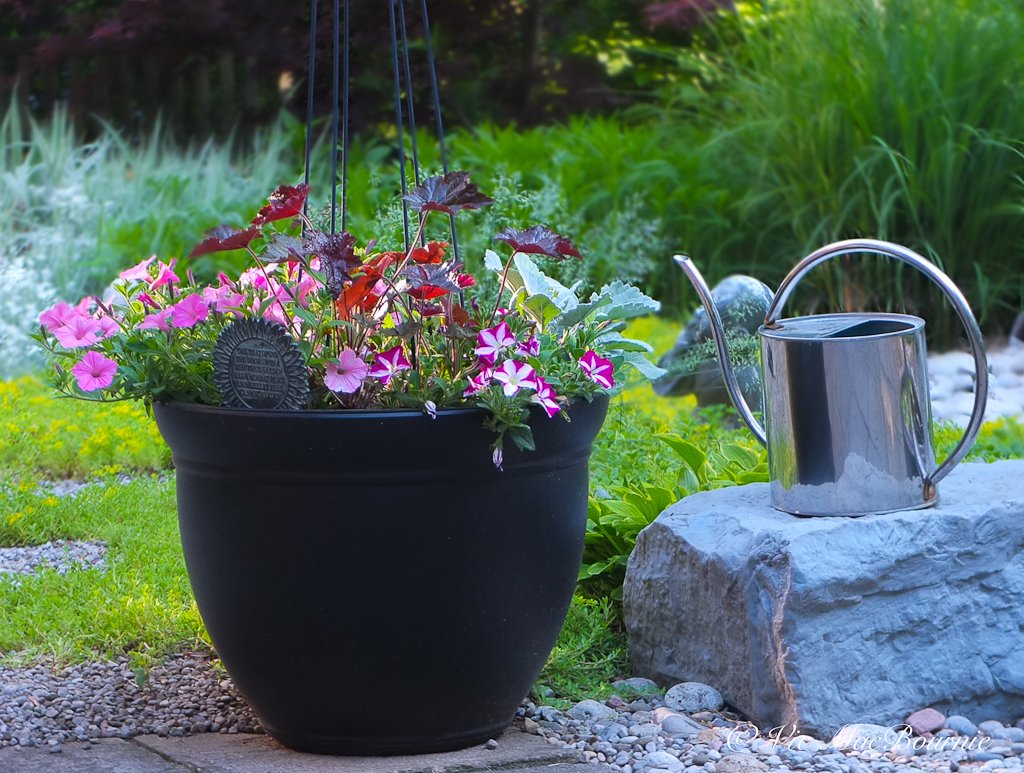
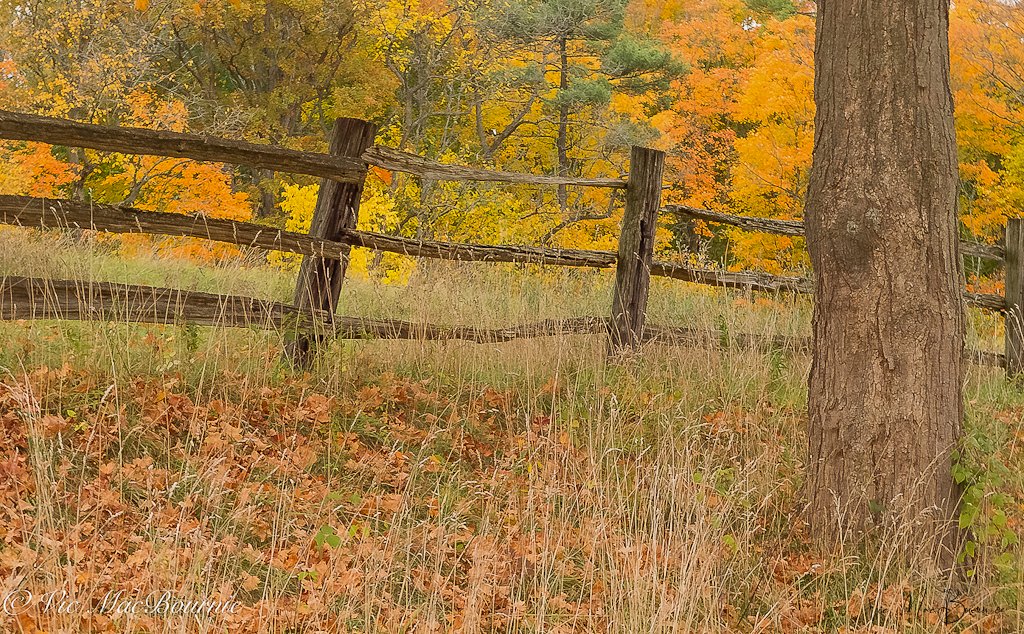
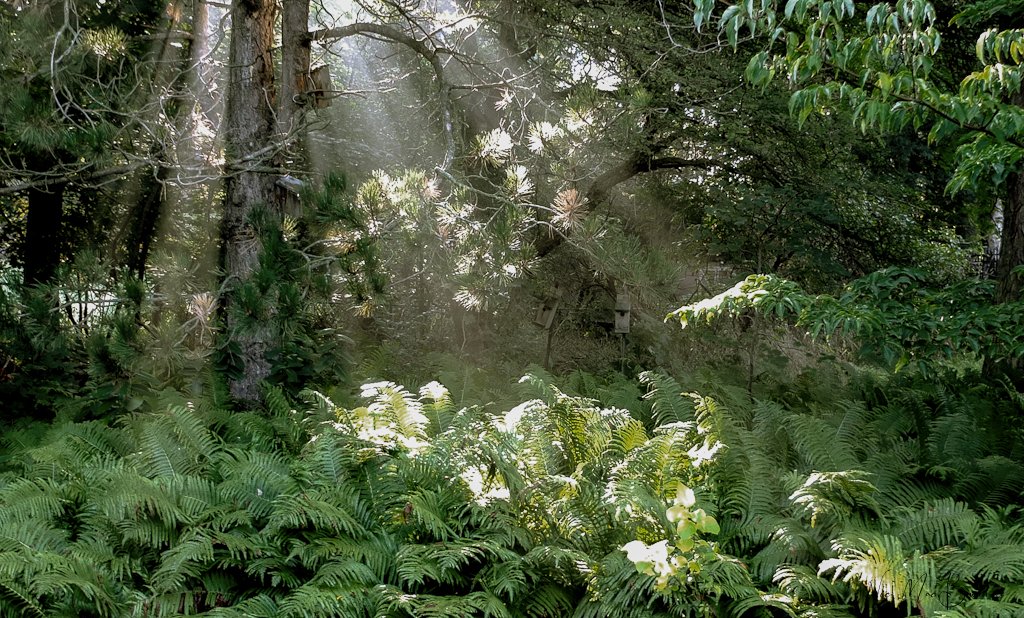
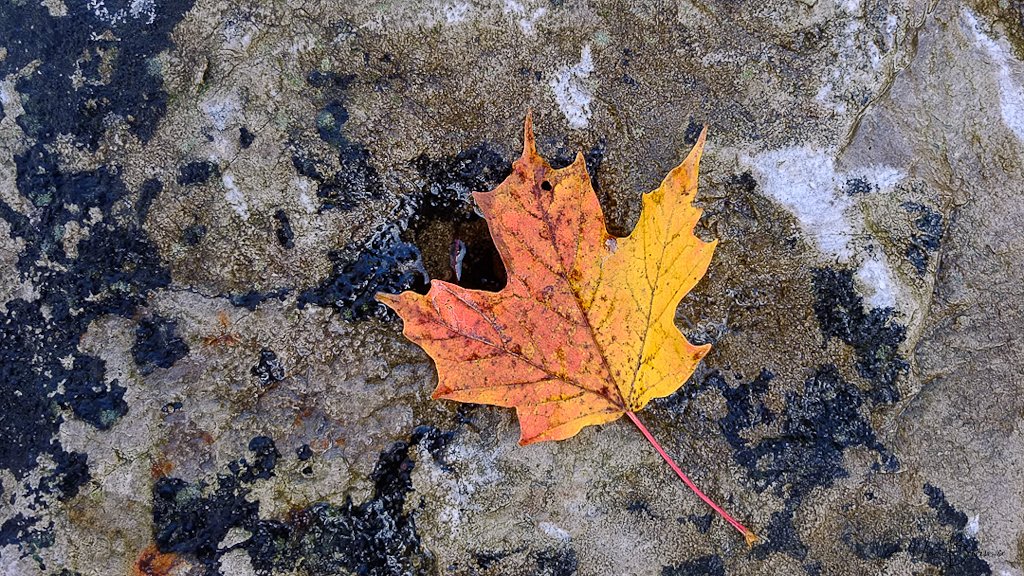

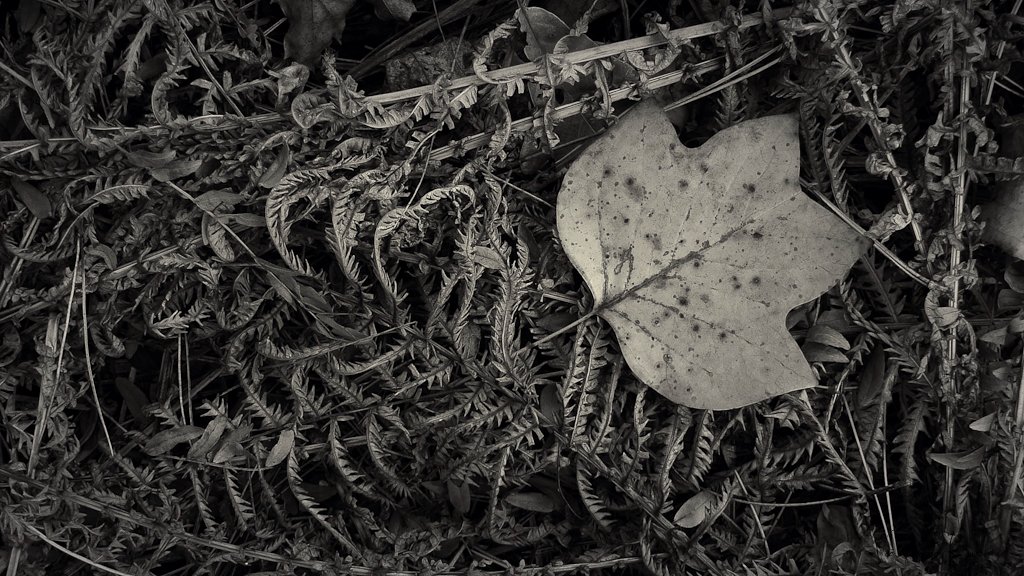
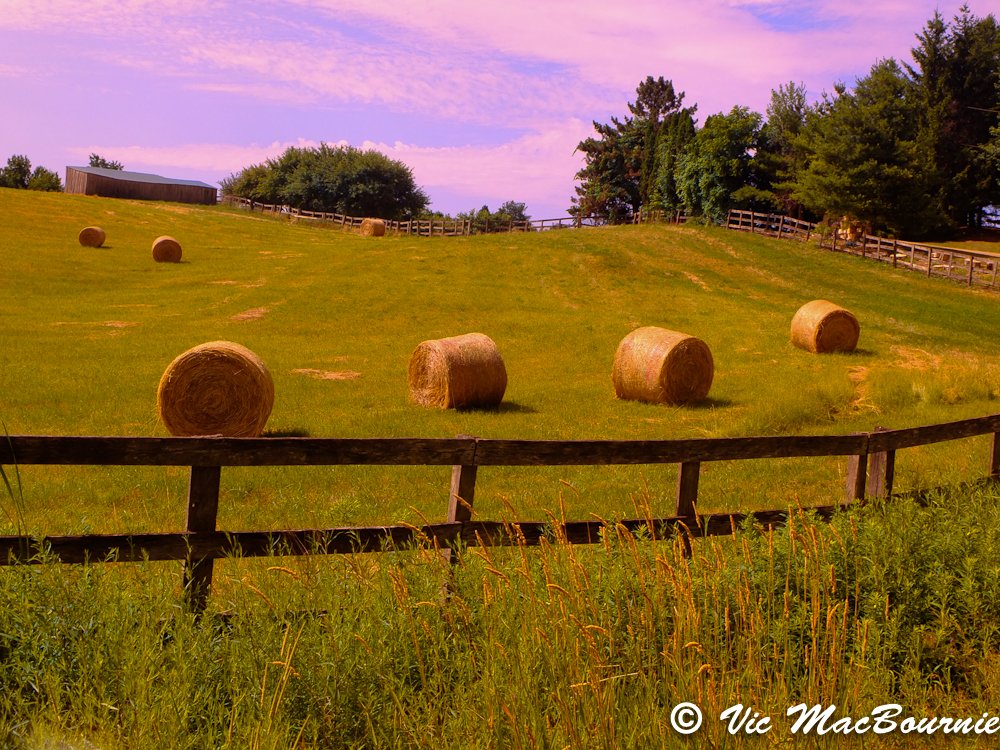
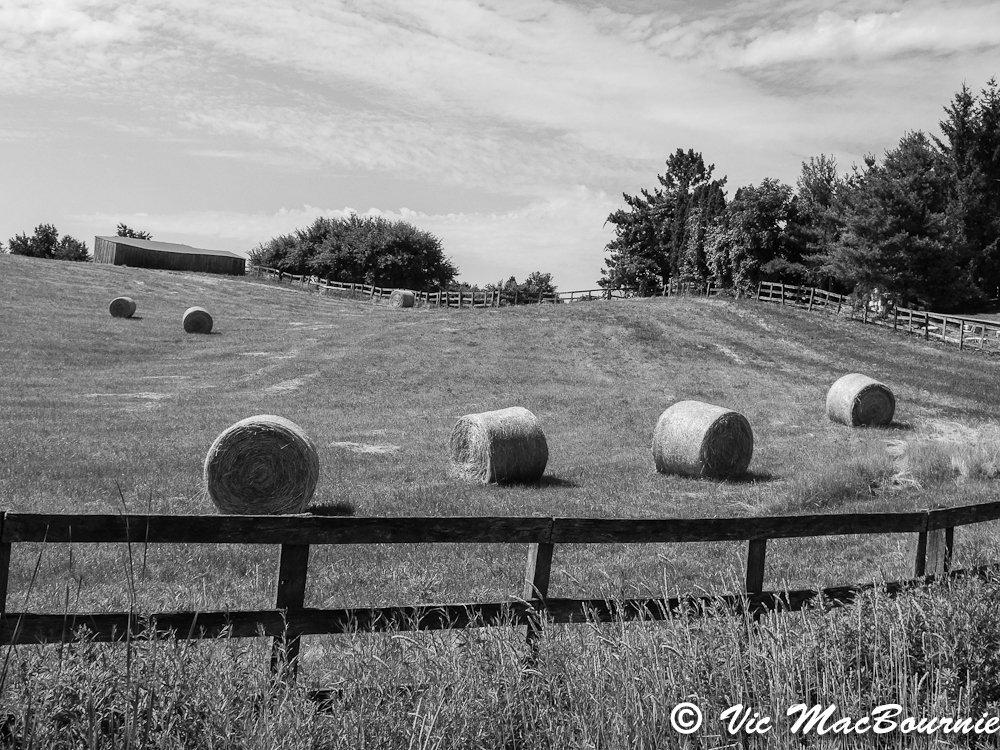
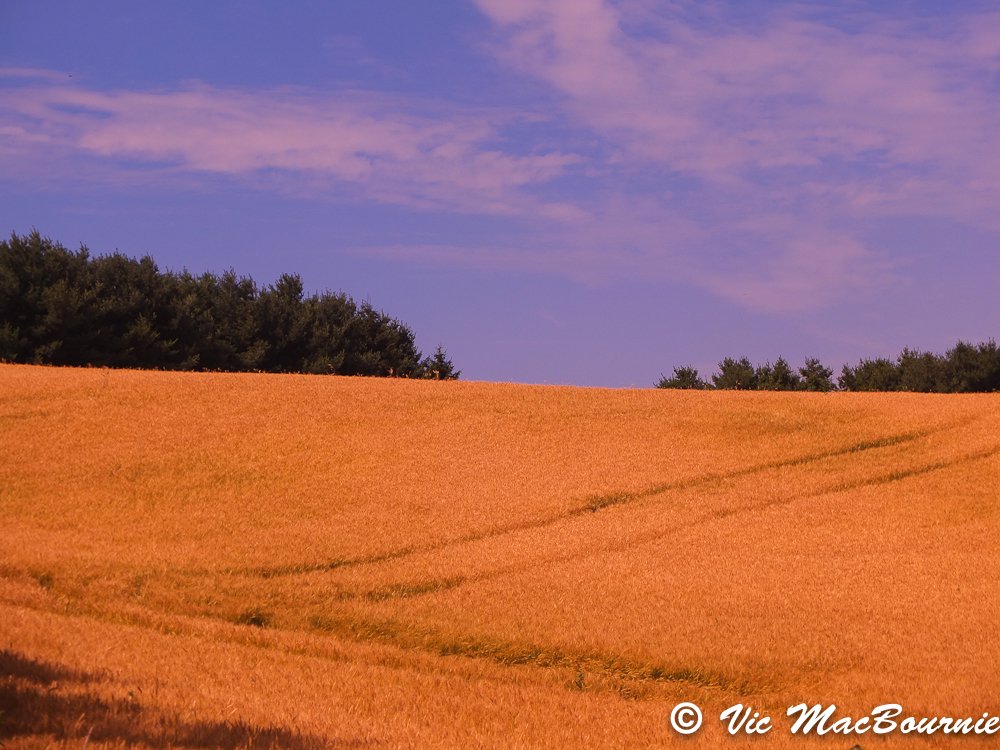
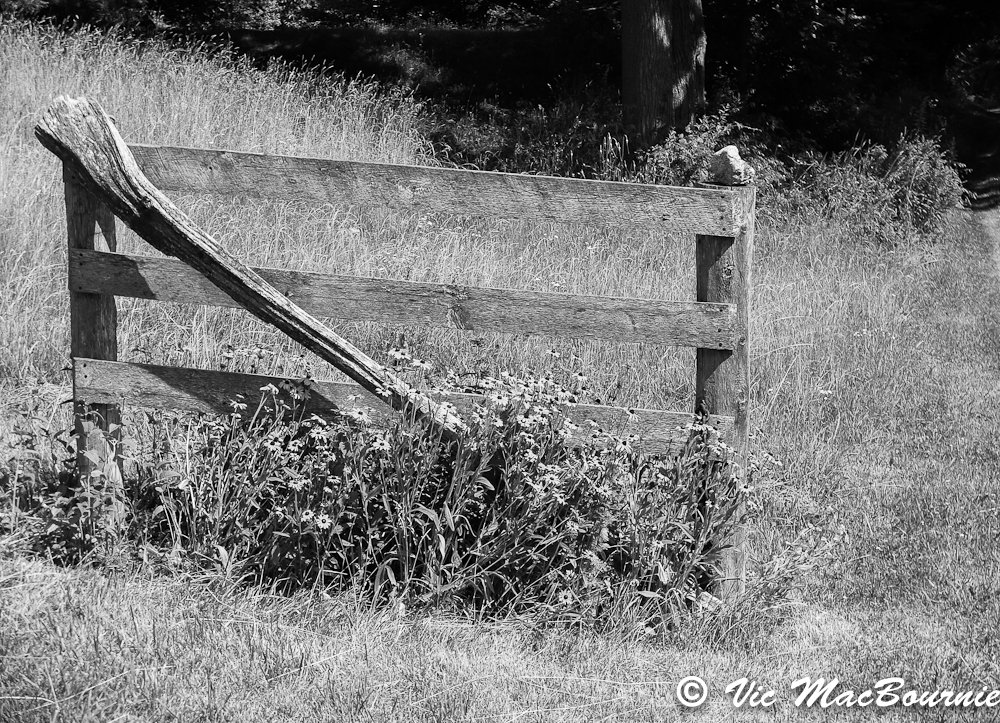
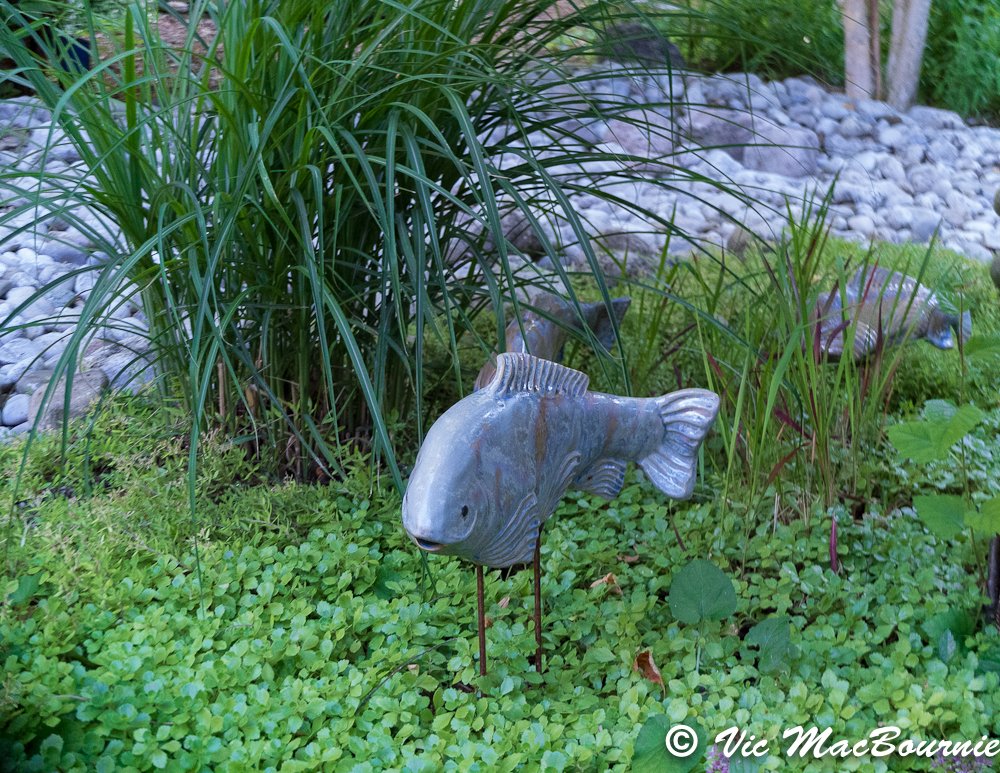
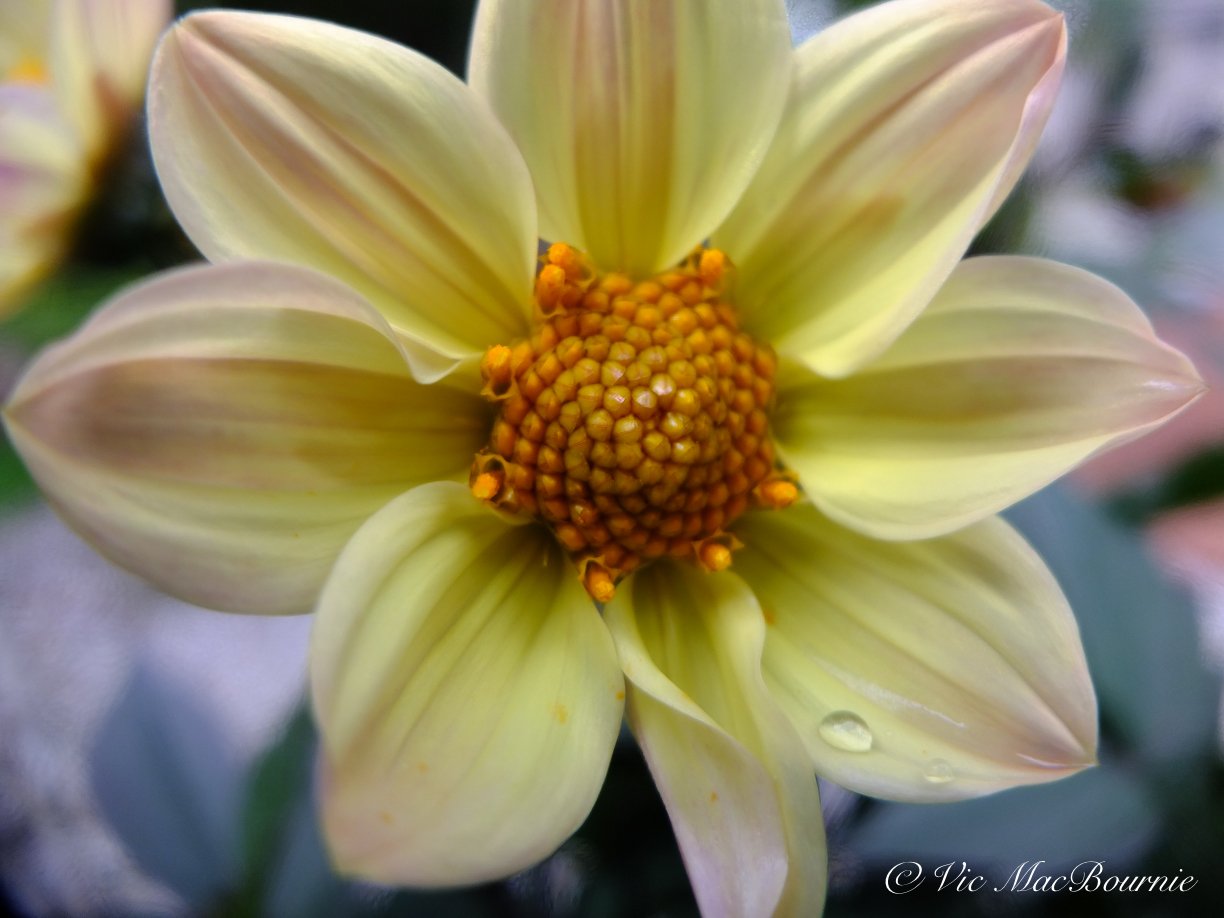
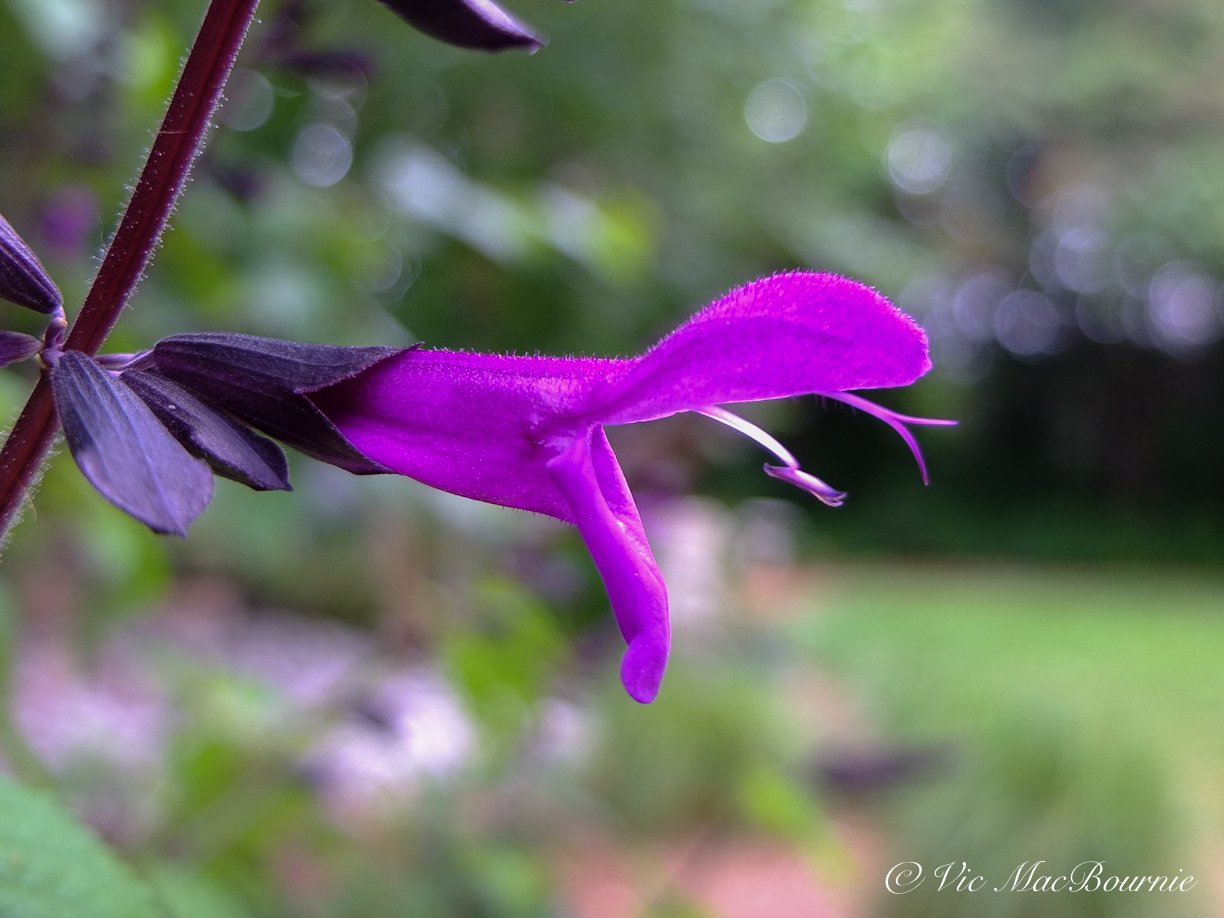

There are also two macro features that let you get absurdly close to let’s say flowers or insects on flowers, multiple drive modes to capture fleeting subjects, “best picture” mode that takes a series of images and helps the photographer pick the best one. There’s a handy feature that takes an image with flash and without flash so that you can compare which is best. In addition, dig into the menu to find the feature that takes a series of images (very quickly) in and out of focus to create a blurred background (bokeh) in an image that never had one.
To get a little more specific, the CMOS sensor means the camera can shoot up to 7 frames-per-second at full resolution, and 10fps at 6MP. The sensor also enables 1080p 30-frames/sec movie shooting. There’s also a panorama mode to capture the entire sweep of your garden.
Can the Fuji X10 shoot RAW?
Add to the list the fact the camera shoots RAW and can process it in camera, and you are left with, even in today’s exacting standards, a camera that is capable of delivering seriously great results in the woodland, on vacation and especially on the street if that is what you enjoy shooting when you’re not photographing your garden.
All this seems just too good in a 10-11-year-old camera.
This sample image of a Monarda flower shows the intense colour that can be achieved by the Fujifilm X10 on the Velvia setting.
Fuji X10 28-112mm lens is all a garden photographer needs
A garden photographer really needs a camera/lens to excel in three different areas: wide angle with the ability to capture large vistas, medium telephoto with the ability to move in close to a group or a single flower, shrub, butterfly or even a small mammal or bird, and Macro to move in close or very close to a flower, butterfly or insect in the garden.
The Fujifilm X10 excels in all these categories. The image above of the scarlet Monarda is an example of the camera’s macro features combined with the Velvia film setting to maintain the flower’s vivid colour.
With the macro setting, and a Nikon closeup filter, I was able to capture the chipmunk and roses.
The 28mm (35mm equivalent) at the wide-angle end of the Fuji lens is more than enough to capture wide vistas of a garden bed or interesting section of the garden. It’s also wide enough to accentuate a foreground element, such as a bird bath or colourful grouping of flowers, in the foreground while still including a wide expanse of the garden.
Is the FujiX10 good for portraits?
The moderate telephoto is great for moving in closer to a grouping of flowers, but it really takes its place at the head of the table when it comes to garden portraiture.
Let’s face it, our gardens are the ideal place to capture family members – children, grandchildren and pets – in a natural setting, and a fast 112mm lens is the perfect tool to capture garden portraits.
Fuji obviously recognized this and added additional features to the camera to make portraiture a focus of the camera, the most important being the built-in feature that enables a soft background in images. The camera takes a series of photos and then merges them together to reveal a sharp main image with a lovely soft background. This is important for nice portrait effects, but more difficult to achieve with smaller sensor cameras like the Fuji X10 and other compact or point-and-shoot cameras. The built-in software, handles this issue beautifully in-camera.
The ability to easily dial in the portrait film Astia, which creates beautifully soft skin tones, and excellent bokeh makes the camera a real asset to portrait photographers.
Would I like to go beyond the 112mm magnification? Absolutely. As a wildlife photographer, I am always looking to get more telephoto capacity to get in closer but that’s just me. If you are more of a traditional garden photographer, extreme telephotos are not likely a critical need. In addition, a longer lens would have forced Fuji to make an entirely different camera losing much that has made the Fujifilm X10 the prized camera it has become.
So, is this enough to crown the X10 a gardener’s camera extraordinaire? I think so. But there is more.
More features in the Fujifilm X10
A tiny, built-in flash that actually kicks out enough flash to fill in harsh, mid-day shadows or light up a patch of the garden when the sun is setting.
A hotshoe that allows the photographer to use a mounted or external flash.
A shutter button that can be fired with an old-fashioned cable release.
A panoramic feature for the ultimate in wide angle views of your garden.
A real and useable optical viewfinder for those who hate using the screen on the back of the camera.
The ability to shoot 7 frames-per-second at full resolution, and 10fps at 6MP.
The ability to use 1080p movie shooting.
A solid tripod socket on the camera to assist in getting a sharp image on the camera.
Fujifilm’s X10 in the garden, in the woodlands on the street and at the party
Is the 10-year-old Fuji X10 the perfect camera on the market for garden photography?
Of course not.
Its sensor is small in comparison to many of today’s compact high-end cameras. Its lens, though exceptionally good, lacks the telephoto pull to being able to easily capture small wildlife and fast-moving birds and butterflies in the garden. Its focus is on the slow side and its ability to take a full range of filters can be a little challenging.
But will you wake up in the morning grab a coffee and head out into the garden with the camera in hand ready to capture everything your garden has to offer?
You bet you will.
Not only will you have it with you, you’ll be fondling the dials and zoom ring like you would the interior of a fine Italian sportscar. And the results will both satisfy you and inspire your photographic aspirations to the point where the pocketable camera will be the only one you take when you go on vacations, out for a day of street photography, on day outings or parties and special occasions.
It’s a camera for gardeners looking to capture their creative vision; for street photographers looking to discreetly capture the spirit of their favourite inner-city; and it’s a camera for parents/grandparents looking to capture the beauty of children and other family members in exquisite portraits.
In other words, the Fujifilm X10 is a camera that will inspire you to be the best you can be, and it’ll do it in style.
New compact point-and-shoot cameras to consider
Fujifilm X100V (Amazon link) (Henry’s link) that looks much like the X10 and handles like a Leica rangefinder.
Olympus Tough TG-6 (Adorama Link)for those who want to take their camera underwater for some real cool shots. Known for its excellent macro capabilities. Amazon Link.
Sony Cyber-shot (Adorama link) DSC-RX100 Vll for those who like the Sony brand Amazon link.
Ricoh GR lllx (Adorama link)for those who like to shoot with a prime lens. Amazon link
Canon Powershot G7 X Mark lll (Adorama link) (Henry’s link)for those looking for a high-end point and shoot that both fits in your pocket but carries a large 1-inch sensor, a fast zoom lens and 4K video at a price under $1000. Amazon link
Cameras that compete with the Fujifilm X10 with 12 megapixel sensors
(Below are B&H Camera links to cameras that are no longer available)
Fujifilm X10 fitted with the Cokin system filter holder.
Cokin filters help bring back the fun factor in photography
In a number of the images in the mini slideshow above, you may have noticed images with a strong yellow/blue cast. These images are the result of using a Cokin Yellow/blue polarizer on the camera. The filter is one of many in the Cokin line of filters that can be effective even in this age of digital manipulation.
Polarizing filters can be critical to getting saturated colours in almost any image, but especially garden images when the sun is reflecting off of leaves. They are also extremely effective when trying to take the glare off of water.
Graduated filters, soft focus filters and other fun filters, if used effectively and sparingly in your photography can add a little fun and an old-school/retro look to your images. Also, although many of the filter effects can now be done digitally with Lightroom or Photoshop, it can take a certain expertise in these programs to make the result look natural. Creating the effects in-camera can be more effective at times and add a fun factor back to your photography.
The Cokin system allows photographers to purchase one filter that can be used on multiple cameras with different filter sizes by simply purchasing an inexpensive step-up ring for your lens. For those cameras that have no ability to add filters, the Cokin system allows the photographer to simply hold the square filter up to the lens to create the effects.
I continue to use Cokin filters in my photography as well as traditional screw-on polarizing filters, and urge readers to consider adding a set to your photographic arsenal.
How important are skunks in our gardens?
Skunks are extremely beneficial in our gardens helping to reduce unwanted visitors. These gentle creatures pose no threat to us and are rarely seen accept at night.
An evening of garden photography with a friendly skunk
There is no reason to be afraid of a skunk in your backyard. In fact, skunks are gentle creatures that benefit nature and our environment by controlling insect populations and other unwanted garden visitors particularly the dreaded Japanese beetle, cutworms, hornworms and grubs, along with small rodents like mice and moles.
So, I was thrilled to recently spend some time in the garden and add images of skunks to my collection of garden photography wildlife images.
The negative publicity these animals have to live with struck me the other day when I was sitting in my favourite chair in the garden waiting for the neighbourhood fox to show up. The skunk came in from behind me, (paying no attention to the guy sitting very still in the chair) and proceeded to walk by on her way to another part of the garden. She went unnoticed until I caught the white tail out of the corner of my eye. A beautiful, white fluffy tail carried proudly above her for all to see.
A few weeks earlier the skunk decided to pay me a visit on the patio. I would have let it join me on the patio accept my dog, Holly, was sitting beside me. Thankfully she did not notice the skunk until I quietly asked it to leave the patio with a gentle hand motion and soft, persuasive voice. As soon as it saw me, it moved away just as Holly noticed her. I had my hand on her leash to keep her from going after the skunk. That was another fun adventure but much more stressful with a dog at my side.
There’s no mistaking a skunk for, say, a black squirrel. Although they look similar, they carry themselves quite differently. Unlike the sometimes frenetic pace of black squirrels, skunks move slowly and deliberately, possibly because of their relatively poor eyesight and possibly to let other woodland animals know that they are around.
Our gentle skunk spent the evening with me showing off her beautiful tail and looking for grubs and other insects.
I was lucky enough to spend a few minutes with the skunk as it rooted about the garden not far from me (but far enough.) She did not seem bothered by my camera and flash going off with her every movement. Although I did not hide from her, and was not in my Tragopan blind, she seemed quite happy to go about her business.
Actually, because of her poor eyesight, I’m pretty sure she didn’t even realize I was there, especially considering she was more than happy to make a bee-line directly toward me.
That’s the time our evening photographic adventure came to an abrupt end. When she started moving toward me through the grass where I was sitting, all it took was for me to wave my hand slowly and speak gently to her for the little skunk to realize it might be better for her to head in another direction. She abruptly turned around and waddled off into the ferns to go dig up some more grubs.
It was a great garden photography encounter and one I’ll not soon forget.
What’s my favourite garden photography wildlife lens?
What made the encounter a little more unusual was that there was still plenty of light left in the sky and, although I used the flash at times hoping to create a catch light in the skunk’s little eyes, I much preferred the more natural images taken without flash on my Pentax K5 DSLR fitted with my favourite wildlife lens – the FA300mm F4.5. Originally built for film cameras, the smaller sensor in the K5 gives users an effective 420mm F4.5 focal length. I have a 1.4 converter that I use occasionally to get in even closer.
The white stripe starts on its head, runs the entire length of its body and explodes on its magnificent tail.
Skunks help rid your garden of snakes
Did you know that, much like opossums, skunks are immune to snake venom and are more than happy to rid your garden of poisonous snakes. We don’t have any poisonous snakes where I live so I’d prefer our little skunk keeps mice and voles and other critters in check rather than kill the few snakes I’ve seen in the garden.
Keep skunks safe in your backyard
In our backyards, as long as we do NOT use pesticides, skunks are safe from their biggest cause of death.
Weak eyesight means that skunks’ greatest threat is being hit by cars and trucks while they are trying to cross a road. The evidence is hard not to notice when out for a drive. If you don’t see them lying dead on the road, you certainly smell the results of the collision.
In our garden, it is more likely they will fall victim to a Great Horned Owl who are one of the few birds or animals that see the little stinkers as prey. Turns out Great Horned owls’ lack the sense of smell needed to be repulsed by the odour skunks use as a self defence. That makes them easy, slow moving prey for the owls massive claws.
These fox kits seemed to enjoy playing with the dead skunk more than anything else. The den was situated beside a road so I suspect that it was killed by a car and salvaged my the mother fox for her kits. And yes, it did smell but not too bad.
Do fox consider skunks prey?
I have photographed a dead skunk outside an active fox den (see above) but I suspect that the skunk was a victim of a car rather than the mother fox. In fact, I have watched on our trail camera video of a fox and skunk interacting, and neither was looking for a fight.
Although coyotes, foxes, dogs, bobcats, mountain lions, badgers and big owls are known to eat skunks, few put it anywhere near the top of their list of fine dining.
So I don’t think skunks need to fear a fox or other large predators despite the fact that they will eat them if they find a skunk as road kill.
Are skunks a threat to my family?
Skunks are not a threat to our families. They can be an annoyance for dog owners if a family of skunks decide to build a nest under our deck or shed. If you don’t want them there, ensure that efforts are made to keep them from getting under decks by installing fencing that reaches under the ground and makes it difficult for them to dig under it.
It’s not fair to the animals to move them once they have had their families under your deck. Take steps to encourage them to eventually move on from under the deck (playing music in the area of the den), in the meantime, keep your dog away from the area until the skunks leave. Your dog will survive with daily walks or visits to the local dog park until the skunk family moves on its way.
Skunks can carry rabies, but there is apparently no known deaths caused by contracting rabies from a skunk.
Know when to back off
It’s much more likely you will be sprayed by a skunk rather than bitten by one. It’s important to know, however, that skunks don’t just run around spraying people and dogs at the first chance they get.
The skunk sprays a very strong musk oil from 2 anal glands. Even baby skunks, whose eyes have not yet opened, are capable of spraying in self defence.
Spraying is, however, the last thing skunks want to resort to in self defence because, once they use all their spray, they are left completely defenceless for up to ten days – the length of time it takes for the skunk to replace the musk.
Well before a skunk sprays, it will give you a warning to back off. First it stomps its feet on the ground and hisses making it clear it is very uncomfortable with your presence. It will make their bodies in a u-shape before aiming its anal glands at its unfortunate victim. That’s a good time to gently and slowly back off making it clear that you are no threat.
Why did I get sprayed by a skunk?
People are most often sprayed when they surprise a skunk in very close proximity and don’t have time to assure it that you are no threat. It’s a good idea to always expect a skunk as evening sets upon us. Keep an eye out for them when stepping outdoor into your garden and avoid sudden movements that might be mistaken as a threat. If you are with your dog, be sure to keep it on at SHORT LEASE rather than a retractible one that is best left for walks during daylight hours.
Are there different varieties of skunks?
There are actually 12 different species of skunks but not all of them live in North America. Skunks can also be found in South America, Indonesia and the Philippines.
Striped skunks: Most of us are familiar with the cat-sized striped skunk with the white stripe down the middle stretching through its long black tail. They are the ones at home in the woodland as well as in suburban areas.
Spotted skunks: have three white spots on their faces and four more on their backs in addition to six stripes on their tails. These guys are more the size of squirrels and like to climb trees. These are the fellas who stand on their front paws to take aim at their victims. These skunks can be found in the eastern U.S., Mexico, and more rarely in southern Ontario, Canada. The Mexican pygmy spotted skunk is more the size of a rat and is considered the smallest and rarest of our skunk species.
Hooded skunks: An interesting skunk with faces that are framed by a shaggy white mane that covers the tops of their bodies from head to the tip of their tails. It’s unlikely you will come across this species unless you are hiking in rocky areas of southwestern North and Central America where they live in burrows near streams where they survive primarily on insects.
Hog-Nosed skunks: These skunks feature pig-like snouts that help them root for food in their southwestern U.S. homes or in Central and South America where three other species of the hog-nosed skunk can be found.
Stink Badgers: Recently welcomed into the skunk family in 1990 are found in parts of Indonesia, Philippines.
Check out my article on getting prepared in advance for a skunking. Hint: make sure you have hydrogen peroxide and baking soda handy. Forget the tomato juice unless you enjoy smelling like tomato juice and musk.
Monarda and Cardinal flowers: Native reds Hummingbirds can’t resist
Monarda and Cardinal flower are two native reds Hummingbirds can’t resist. Both have similar tube-like flowers that are perfect for hummingbirds and other pollinators.
A female Ruby-throated Hummingbird works the bright red Bee Balm.
Add these two fine reds to your garden and enjoy the pollinator party
Hummingbirds love reds and the combination of Monarda and Cardinal flowers prove just too irrisistable for them.
You could almost say these native red flowers combine the natural sweet flavours that keep our hummingbirds, bees and butterflies drunk with excitement over the natural abundance of their favourite food. But, that might be pushing the whole red wine thing a little too far.
In our garden, the Monarda begins to bloom in early July and the hummingbirds quickly add them to their daily feeding rounds. I notice, however, that the Cardinal flowers – growing just a few feet away – are not far behind the Monarda. Within weeks the area beside our patio will be a haven for hummingbirds looking to fill up on the sweet natural nectar that these two native reds provide.
If you are looking for more information on growing native flowers, you might be interested in going to my comprehensive article: Why we should use native plants in our gardens.
Our feeders, too, are nearby but given the choice, Hummers will prefer to visit the more natural nectar sources. It’s a good idea to keep this in mind when you are trying to attract hummingbirds and other garden pollinators. Provide their natural food and chances are they’ll visit more often and stay longer.
If using native plants to feed birds and pollinators in your garden interests you, you might want to check out this post on feeding birds on a budget.
Create a natural stage for Garden photography
In addition, the more natural stage for the hummingbirds and butterflies will turn you into a master when in comes to garden photography. There’s nothing like the male Ruby-throated Hummingbird, with its red throat, working the bright red Monarda and scarlet Cardinal flowers. Set up your camera and telephoto lens nearby, grab a glass of your own favourite “red” and just wait for the hummingbirds to arrive. It shouldn’t take long before you are rewarded with some great photographs.
How to grow Bee Balm (Monarda)
Monarda (Monarda didyma) often referred to as Bee Balm is a member of the mint family (Lamiaceae). It joins Wild Bergamot (Monarda fistulosa), that features light lavender to pinkish-white flowers, in the Lamiaceae family that counts 16 species native to North America.
(Go here for my full story on Wild Bergamot )
Monarda can really put on a show. Blooming for up to 6 weeks through mid summer to early fall on tall (up to 4 feet), sturdy square and hollow stems, these attractive perennials have deep roots with shallow rhizomes that account for its spreading habit. It can form large drifts in your garden creating a magnet for hummingbirds and other pollinators including those cool Clearwing hummingbird moths, native bees including bumblebees and, of course, Ruby-throated Hummingbirds.
Like it’s sister, Wild Bergamot, the Monarda flower is actually a cluster of 20 or more flowers (fistulosa) arranged in a round head. The fistulosa (tubular or pipe shapes) make them ideal for long-tongued insects, bees, moths and butterflies to feed on. The plants’ nectar is so sought after by insects that you may notice holes carved out of the flower stems where “tongue-challenged” insects have bore through to get at the nectar.
The plants easily take to a garden and are at home growing along other garden plants, in a sunny meadow-style planting or as specimens in sun, part-shade. Bee balm actually prefers average soil (too rich and you are liable to have tall, lanky plants that don’t hold up well on their own.) Powdery mildew can be a problem if the plants are grown in a wet, humid area without good airflow.
Keep the plants watered but not wet and you’ll be blessed with a great show all summer.
• If you are considering creating a meadow in your front or backyard, be sure to check out The Making of a Meadow post for a landscape designer’s take on making a meadow in her own front yard.
How to grow Cardinal flowers
Cardinal flowers prefer a more wet environment than Monarda so growing them side-by-side will be difficult. Ours grow several feet apart and through hand watering I am able to keep the Cardinal flowers’ feet in more moist soil. Our Cardinal flowers have found a home on the outside edge of a yellow magnolia so also get get less sun than the Monarda plants.
Take a moment to check out my full feature on growing the native Cardinal flower.
Cardinal flowers are considered short-lived perennial but by spreading the seed in your garden, you can enjoy the flowers for years to come. Try placing the spent flower heads atop the soil in a moist part of the garden and you should be blessed with more and more flowers each year. They grow on long spires that can reach up to 4 feet. The flowers bloom as they make their way up the stalk.
In conclusion: Two reds can make a right
Planning your patio should involve more than where the best seating options are, unless, of course, you’re planning the seating options around the best wildlife viewing spots. By making an effort to plant attractive native plants such as Cardinal flower and Bee balm that attract hummingbirds, butterflies and birds, your patio or deck transforms from just a place to sit and entertain, into a place to be entertained.
As summer heats up, I can’t imagine a better time than being outdoors on the patio or deck with my favourite red and a couple of feathered friends dropping by on regular visits.
Ten tips for great garden and flower photography
Here are ten tips to help you improve your garden photography. A good camera and lens is a great start but more important is great vision and attention to technique to ensure good results.
This female Ruby-throated hummingbird was caught feeding on the Monarda. An off-camera flash helped to freeze motion and create a lovely highlight in the bird’s eye.
Grab a coffee a camera and get some great garden and flower photos
Capturing memorable garden and flower photographs involves a combination of great light, creative vision and attention to technique.
It might be hard to believe – given the push for better and more expensive cameras – but these three factors are more important than the type of camera or lens you use.
Having a good camera can certainly take your flower photography images up a level and, at times, help you capture photographs that might otherwise be almost impossible to obtain with lower quality equipment or cameras and lenses that are less capable. But don’t let the quality or the price tag of your camera stop you from jumping in with both feet into garden and flower photography. In fact, your smartphone might be all you need to begin exploring the joy of garden and flower photography.
Be sure to check out my comprehensive post on Garden Flower Photography for more information.
It’s better to have a camera you understand and know how to get the most out of, than carry around an expensive camera that you set on auto and hope for the best.
Is the Fujifilm X10 possibly the best camera for garden photography? Check out my review of the high-end compact camera after owning it for 10 years and find out if it may be the perfect choice for the Best Garden photography camera.
A hummingbird sips nectar from salvia. This image is the result of sitting out in the early morning and watching the hummingbird visit the flowers in a nearby container. A little flash added sparkle to the image.
Getting the best camera you can afford either new or used will help set you on the right path. If you are thinking about upgrading from your smart phone, be sure to check out my comprehensive look at the Best Cameras and Lenses for Garden Photography.
If photographing birds and wildlife is your goal but you lack the expensive lenses to get you in close, there are options that you can take advantage of to help you capture these images. I have found a backyard photo blind from Tragopan Photo blinds to be incredibly helpful to get in close to birds, foxes and other wildlife. If you are interested in pursuing backyard wildlife photography, be sure to check out my article on Photography blinds.
It’s easy to put your garden in the best light
One of the greatest benefits to photographing your own garden is that you can return regularly to ensure you capture the subject in the best light, whether that’s in the early morning, in spring when the greens look their best, or in the dying days of summer when late-season grasses steal the show. When I say best light, I don’t mean strong mid-day sun.
Look for soft overcast light or situations when there is a lot of cloud cover to soften the shadows in your pictures.
Having your subject outside your back door certainly has its benefits. The fact the garden is right outside your door allows you to wait for days with good lighting to take your images. During or right after a rain is usually an excellent time to photograph your garden. Light foggy days in early morning also lends itself to potentially great images.
Moving in close with a true macro lens will allow you to create interesting images that are not easily seen by most gardeners.
Understanding great light for photography will also prepare you to capture beautiful images on vacation or on special occassions.
Be sure to check out my article on some of the best public Woodland gardens in the United States, and the best Woodland/public gardens in Canada to plan your vacation around.
Here are ten tips to help you capture memorable images of your garden or a public garden.
Get up early with your coffee and a camera
Take a walk with your favourite camera
Move in to get up close and personal with your subjects
Get down and dirty in the garden
Put something cool or colourful in the foreground
Telephotos aren’t just for wildlife
Who said everything has to be sharp?
Filters are great fun in the garden
Be a rebel: just go ahead and break the rules
Don’t be afraid. Show some courage and creativity
Morning light filters through the trees onto our fern glen. Underexposing the scene helped to bring out the rays of sun in the image.
Tip #1: Capture the early-morning light
Get up early. That’s the first and most important tip I have. If you do anything, make sure your first cup of coffee in the morning is outdoors and your camera is at your side. The earlier the better. At times, you’ll be blessed with morning dew, other times maybe a little fog or sunbeams streaming through the trees.
There is nothing like sitting on the patio or deck with your coffee watching how the early-morning light kisses the tops of trees before it bathes the garden in a beautiful, soft, warm light. You never know what subjects might present themselves. Many times I’ve been out and a young fox comes into the garden, or a doe and her fawn. Maybe a bird lands in a nearby tree within range of your camera and provides the perfect opportunity to capture a memorable moment.
Early morning dew on this skipper is the result of getting up early and capturing this tiny butterfly before the sun has burned off the dew and warmed the butterfly enough to allow it to fly off.
You need to be out there, sitting quietly with your camera at ready and watching for these special moments. And if the weekends are the only time you can swing it, make a date with yourself, your camera and a good coffee this weekend and every weekend possible in the spring through to the fall.
There is no question that having a small, high quality compact camera to carry around the garden is a real benefit. A compact Travel camera or a Bridge camera might be the perfect option for the morning walk about.
If you are considering upgrading your cameras and lenses, be sure to check out the daily offerings at KEH Camera Exchange.
Not many people want to carry a large, heavy DSLR around the garden in the morning.
Capturing a memorable moment in the garden is great, but simply being out in the garden in beautiful light studying how it moves across your landscape is a valuable learning opportunity. Knowing that at a certain time in the morning, light skips across the Monarda lighting it up against a dark background is an opportunity to set up a tripod and capture the moment a hummingbird or butterfly visits.
Tip #2: Take a walk in the garden
While you are up early enjoying your first cup of coffee, go for a walk in the garden. Notice what flowers are about to bloom. Notice how, when you are at the far end of the garden, the rising sun lights up the drift of rudbeckia in a way that is unnoticeable from the deck.
Take that picture now remembering to expose for the brightly lit flowers and not the entire scene. You are probably going to need to underexpose the scene to capture that ray of sunshine on the flowers, rather than setting the camera on automatic and accepting the resulting image. (Or you can walk up to the flowers and take an exposure reading directly), lock that in and step back to capture the scene.
Most mornings, I take my camera and walk around the garden looking for unusual lighting situations and noticing what flowers are preparing to bloom. Maybe there’s a butterfly sitting quietly warming its wings in the morning light, a toad taking shelter under a leaf or a flower about to bloom. Maybe it’s just the way the light hits the fountain grass.
If you are not a morning person, or it’s impossible to get out in the morning with your camera, take the time, instead, to walk the garden most evenings. The warm evening light has many of the same qualities as morning light and can show the garden in different but equally beautiful ways.
Walking around the garden with camera in hand, whether it’s morning or evening, is both an opportunity to capture images as well as get in touch with the finer details of your gardens.
A longer lens helps to create a soft background in this image, which helps to make the chipmunk stand out more.
Tip #3: Make sure your camera has a macro or close-up lens
Being able to capture close-up images of flowers, butterflies and insects is an important part of making interesting images of your garden. Mastering macro photography involves specialized, expensive equipment, but getting good close-up images is not that difficult with today’s modern digital cameras and lenses.
Most compact and Bridge cameras have macro or close-focus capabilities built into them. These may not allow you to get a 1:1 magnification ratio, but we are not doing scientific work here. If they allow you to move in close, it’s probably all we need.
For true macro capabilities you will need specialized macro lenses likely in the 50mm to 100mm range. There are 200mm macro lenses that allow you to get much closer to subjects while being able to keep a good working distance between you and the subject. These lenses demand the photographer use a tripod and or flash systems to get the best results.
If flower photography is your goal, close focus capabilities in most compact cameras are more than enough to get the job done.
If you are hand holding your camera to do close-up images, it’s a good idea to boost your ISO up to increase your shutter speed and help you get sharper images.
Following a butterfly around your garden trying to get it to rest on a flower can be challenging, but if you find one in the morning before the sun warms it, you will be blessed with the opportunity to capture the image without it quickly flying off. If you are lucky, you may be able to capture it covered in morning dew.
In the film days when ISO topped out at between 64-100, taking macro shots involved almost always using a tripod. Today’s digital cameras’ ISO can be boosted to astronomical numbers allowing you to hand-hold many of the images. Try setting your ISO at 6400 and check out the results. If the images are not to your liking, bring it back to lower numbers until the noise (grain) is acceptable.
Experiment with your close-focus capabilities to get comfortable with it so when the Giant Eastern Swallowtail visits your garden and spends some time on your butterfly weed you’ll be ready for it.
Getting down close to ground level helps create a more pleasing image of these anemones. Shooting them from a higher angle would have resulted in a background that included either soil or mulch.
Tip #4: Get down low
It’s rarely a good idea to stand over a plant and shoot down at it. That also holds true for animals, birds and most insects. It’s usually best to shoot your subjects at eye level. For flowers, that usually means getting down on your knees to capture images and eliminate the garden soil or mulch from the image.
By getting down low on a drift of flowers, you can use the other flowers to give you a pleasing background, or shoot through the foreground flowers to create a dreamy look using the out-of-focus foreground and background flowers to isolate a single in-focus flower.
If getting down low is getting difficult, having a screen that tilts up and allows you to look down at the screen can be a valuable feature when you are considering purchasing a camera. Many of today’s cameras offer screens that can be tilted.
The foreground flowers create a centre of interest and help to create a more three dimensional feeling.
Tip #5: Include a strong foreground element
Photographing large expanses of your garden may seem like a good idea, but unless you include a strong foreground object chances are you’ll be unhappy with the results. A wide angle setting on your campact camera, or a wide angle lens on your camera really benefits from having a strong foreground object such as a drift of flowers, garden art or another element that helps to draw your eye into the garden. Having a dominant foreground element helps to give depth to the image and provides a strong centre of interest for the viewer.
Focus on the foreground element and use a large depth of field (higher aperture like F8- F11 or even F16) to ensure the entire image is in focus.
Tip #6: Use your telephoto to simplify the image
A telephoto lens is not just for capturing wildlife and they are not designed for photographers who can’t be bothered to get up to walk over to their subjects. (Although they can be helpful in this regard for us lazy photographers.)
The telephoto lens has many redeeming factors, not the least being a great tool to simplify an otherwise busy garden scene. By moving in close, it’s easier to isolate one flower or a group of flowers to simplify the image. Of course, they are useful for capturing wildlife in the garden as well. A 200mm lens, for example, would enable you to photograph a butterfly while still giving it enough space to not feel threatened.
A telephoto lens allows you to move in close on small subjects and create a very soft background.
Tip #7: Use the telephoto to soften the background
It’s much easier to soften a background to isolate a subject if you are using a longer telephoto lens. Fast lenses (ones that open to F2.8 for example) can create beautifully soft backgrounds.
Lenses that do not usually open up enough to soften the image to your liking, can still be used to create a soft background. Try finding an angle to your subject where the background is farther away. That longer distance will help create the softer, out-of-focus background even for lenses that normally do not create that effect.
Public gardens can be a great place to practise your garden photography.
Tip #8: Experiment with your tools and camera settings
Photographing in your garden is the perfect opportunity to experiment. All those built-in filters in your camera are there for a reason and many of them can be used to great effect in garden photography. For example, consider shooting your garden entirely in B&W. (Check out my full story on B&W garden photography). Most cameras these days have a black and white setting. Look for strong graphic elements in the garden like backlighting or strong side light.
Experiment with the vibrant colour filter setting to punch up the colour on your flowers. My Fujifilm camera, for example, has a setting for shooting Velvia-style images. If you are not familiar with Velvia, it was a highly praised slide film that eventually edged out Kodachrome as the favourite film used by nature photographers looking for more saturated colours. Kodachrome was ISO 64, while Fuji’s Velvia came in at ISO 50. Fuji cameras are now able to offer a Velvia-like image at much higher ISO ratings. A feature that film photographers couldn’t even dream about back in the day.
Other cameras offer similar highly saturated colour filters, some better than others.
While many of the built-in filters look unnatural in garden photography, the soft focus filter can create beautiful results. Most often used for portraits, a soft focus filter can add a dreamy almost romantic look to your garden photography.
Another filter worth experimenting with is a high-key filter that enhances images with light-coloured flowers in white, pink or soft blues and violets.
Don’t be afraid to have fun in the garden, wither by using filters or using selective focus to create dreamy images like the one above.
Tip #9: Follow the rules and then break them
There are a lot of long-standing design rules in photography to help you create pleasing pictures. The first, and probably the most important is the rule of thirds. In fact, most cameras have a built in grid to help photographers with their compositions and take advantage of the rule of thirds. A setting in the camera’s menu gives photographers the choice of setting up a grid system that is digitally overlaid on your camera’s screen. Where the lines intersect on the screen represents strong points to place a centre of interest in your image.
I almost always set up my cameras to include a grid system which also helps me keep the horizons straight.
Take some time to learn basic rules of composition and then, when you understand them, feel free to break them. By breaking the rules, you create tension or intrique in your photographs that, when done successfully, can result in a dynamic image.
One helpful rule is ensuring that any movement in your image has more space in front of it than behind it.
The rule: A bird flying left to right needs more space in front of it to fly into than is behind it. Ideally, you would want the bird at one of the intersecting lines in your rule of thirds grid pattern on the left side of the frame. That would give you a pleasing, natural image which would score well at your local camera club.
Try putting that bird in the intersection of lines on the right side of the frame and your image becomes potentially more dynamic. A bird flying out of the frame rather than into the frame of view is often seen as an error by the photographer. If, however, it is balanced by say a beam of light filling the left side of the frame or maybe a colourful drift of plants, than the image could be a show stopper despite breaking the rule.
The key to success is knowing the rules of composition and knowing when to break them.
Know the rules of composition and then feel free to break them. In this image the bird appears to be looking out of the image, but the tree branches leaning in from the left help to balance the image and makes breaking the rules of composition work.
Tip #10: Don’t be afraid to fail
It’s garden photography folks, there is no pressure here.
Shoot often, shoot regularly, experiment and have fun. Many of us have cameras that sit in a desk drawer only to get pulled out during holidays or special events. Your garden gives you the opportunity to get out daily or weekly to use your camera and experiment with it. It should be fun creating images.
Bring your kids or pets out to the garden and photograph them in it. Set up a bird feeder or bird bath near where you normally sit and experiment with your camera(s).
Finally, when you have built up a large collection of garden images, consider putting them together in your own personal Garden photography book. (Link to my story on creating a personalized garden book). Putting the book together is a wonderfully creative exercise that results in a keepsake, a memory of your garden and the wildlife that visit it.
Tips for Sharing your images on social media
Sharing your garden images on social media is one of the benefits of modern digital cameras. Here are some suggested sizes for posting your images on some of the popular social media sites.
If none of this makes any sense to you, just upload the pictures and don’t worry about it.
Facebook: For your Facebook feed, try 1080 X1350 pixels. For Facebook stories, try 1080 X 1920
Instagram: photos were once optimized as square 1080 x 1080, but have evolved to become more vertical to better fit smartphone screens. The ideal Instagram portrait aspect ratio is now 4:5, and the best photo size is 1080px by 1350px. For Instagram stories try 1080 X 1920 for best results.
Tumblr: 500 x 250
Twitter: For best profile image try 400 X400 pixels. For header photos, try 1500 X500 pixels and for in-stream photos go with 1600 X 1900 pixels.
Focus on Cardinal flowers to attract hummingbirds
If you plant only one flower, make it a Cardinal flower and enjoy the added benefit of hummingbirds. This native North American wildflower is s much at home in the Woodland garden as it is growing alongside a river.
North American native flower that attracts hummingbirds and butterflies
The Cardinal Flower is as close to a guarantee of attracting hummingbirds to your garden as anything, other than maybe a commercial feeder.
But the cardinal flower (Lobelia cardinalis L.), with its spires of scarlet tubular flowers, is certainly more attractive growing throughout the garden than any commercial feeder could ever hope to be.
Be sure to check out my earlier article on how to photograph hummingbirds in the garden and my comprehensive post on Flower photography in the garden.
Adding to its attractive qualities is the fact it is native throughout parts of North America in both the United States and Canada, blooms for a month or longer later in the summer, is slightly aromatic, and is a nectar source not only for hummingbirds but also swallowtail butterflies and other insects and butterflies. The scarlet-coloured wildflower, with delicate blossoms that open from bottom to top on spikes that can reach between two to four feet in height, is a member of the Bluebell family.
If you are looking for more information on growing native flowers, you might be interested in going to my comprehensive article: Why we should use native plants in our gardens.
Here, a Ruby-throated hummingbird feeds at a Cardinal flower a little later in the season. You can see how the flowers on the very top of the plant after earlier blooms have died off leaving a pod of seeds which should be sprinkled about the ground.
What are good companion plants for Cardinal flower?
It’s as much at home in a woodland or shade garden surrounded by hostas and ferns that also enjoy plenty of moisture, as it is as a specimen plant stealing the show in a small, contemporary garden alongside a man-made stream. Look to pair the Cardinal flower with moisture-loving plants that will live happily alongside Cardinal flower.
Where to plant Cardinal flower to easily capture great hummingbird photos
For garden photographers, the plants’ elegant spires stretching up against a blue sky is reason enough to include them in the garden. But the real reason to plant Cardinal flower en-masse is to catch an image of a hummingbird in its natural environment. It’s hard to imagine a more perfect flower to plant in your garden to show off our beautiful hummingbirds in a more natural setting. Plan to spend time, however, working the hummingbird/flower combination. Getting the right light to stop the frenetic motion of the hummingbird requires patience, luck and good lighting.
“Hoping to bring the plant back into the fold, this time in a lower garden within the stone terrace, I picked a seed stalk and placed it on bare soil in a gap next to the flagstones. The next year a seedling sprouted from the gap, and the following year it flowered and went to seed. hundreds of seedlings emerged in the cracks between the stones in the terrace next year. The year after that, a few of these plants flowered and the following year the terrace was a sea of red cardinal flowers. A pair of hummingbirds hovered over the terrace all summer, and my main task was to remove enough of the lush red flowered growth to create paths and a place for my dining table. ”
I have a nice patch of the flowers growing near my favourite patio chair allowing me to easily photograph the tiny, frenetic birds from the comfort of my favourite chair with a coffee – or even better – a glass of wine.
One of the other benefits of planting Cardinal flowers near a patio is the ease of keeping the soil around the plants moist. Hanging baskets and other container plants around our patio get watered daily, so it’s easy enough to water the Cardinal flowers at the same time.
Don’t mistake the plants for weeds. The plants themselves, which appear in spring as dark green leaves, are tapered at both ends. The flowers appear later in summer – July and August – depending on your location.
A cardinal flower in full bloom with the flowers running up the large 2 to 4ft spikes.
Do deer eat Cardinal flowers?
For those of us who are lucky enough to share our backyard with deer, Cardinal flowers have proven to be extremely deer resistant. This might be because all the parts of the plant are considered toxic if eaten in large quantities.
Where do Cardinal flowers grow?
In nature, you’ll find them growing on the edge of woodlands, the banks of streams, near lakes or ponds and swamps. Yes, you can often find them growing happily in moist, wet areas, but you’ll also find them along ditches, along roadsides, in ravines prairies, meadows and even in pastures.
Are Cardinal Flowers native to New England and other areas of the United States?
In the United States they are found growing naturally from Minnesota, south to Florida, Texas and California. They are also native to New England. They are also at home throughout Mexico and through Central and South America.
In Canada, Cardinal flower is native from New Brunswick through parts of Ontario, including down through southern Ontario and throughout the Carolinian zone. In colder areas, adding a mulch layer of leaves over the winter will provide needed protection.
To grow them successfully the plants’ roots need to be kept moist, even wet, but the plants can grow in sun, part shade right through to deeper shade. They prefer to grow in a humus-rich soil, but can do well in medium loam, clay loam and sandy loam.
Cardinal flowers can be easy to grow
In the right conditions, Cardinal flowers are easy-to-grow perennials and will spread in the garden to create lovely drifts of intense flowers. They can, however, disappear quickly if they are not provided with the right conditions because individual plants are actually short-lived perennials. It’s important to allow the plants to reseed themselves in the garden to keep them prospering for years.
Do not cut down the dead and dying stalks without at first distributing the seeds around where they are growing. The seeds need cold stratification to germinate the following spring. One way to better ensure success is to lay the flower stems with seeds in them on top of soil so the seeds disperse and spread on their own. In the picture below, from the book Garden Revolution (link to my review of the book), seeds from a single plant made their way down the terrace following heavy rains a reseeded.
The image of Cardinal flowers taken from the inspiring book Garden Revolution, shows just how spectacular the plant can be in the landscape. These flowers were all grown from a single plant’s seeds spread about the terrace from rains.
In conclusion
It may take a little effort finding native Cardinal flower, but the effort is certainly worthwhile. Not only are they impressive in the landscape all on their own, but the fact they bring our landscapes to life with hummingbirds, butterflies and other pollinators makes them indespensible in our woodland gardens.
In the book Garden Revolution, How our landscapes can be a source of environmental change, (Ferns and Feather book review link) authors Larry Weaner and Thomas Christopher tell the story about how Cardinal flowers played a major role in shaping how they changed their approach to landscaping. Weaner describes his special relationship with the plant in his garden: “A number of years passed and I saw no Cardinal flowers in my yard until one spindly plant emerged from between a grouping of stones. Hoping to bring the plant back into the fold, this time in a lower garden within the stone terrace, I picked a seed stalk and placed it on bare soil in a gap next to the flagstones. The next year a seedling sprouted from the gap, and the following year it flowered and went to seed. hundreds of seedlings emerged in the cracks between the stones in the terrace next year. The year after that, a few of these plants flowered and the following year the terrace was a sea of red cardinal flowers. A pair of hummingbirds hovered over the terrace all summer, and my main task was to remove enough of the lush red flowered growth to create paths and a place for my dining table.”
The image included in the book (above) of a sea of red spikes surrounding the terrace should convince everyone who is not growing Cardinal flower to track them down and get them into the ground as soon as possible.
Solomon’s seal is solid choice for the woodland or shade garden
Solomon’s seal’s arching branches reveal the dangling cream flowers that highlight the spring woodland garden.
Is Solomon’s seal a native North American wildflower?
Solomon’s Seal (Polygonatum), with its elegant arching stems that rise up in clumps through the forest floor, deserves a prominent place in any woodland garden.
This unassuming, eastern North American native plant is completely at home in the woodland or shade/semi-shade garden where it forms patches of attractive plants that spread – always under control – through underground rhizones.
The Graceful arches of the Solomon’s seal reveal the drooping creamy flowers dangling from beneath the leaves.
Like a lovely hosta, Solomon’s Seal is more of a textural plant that might not steal the show with colourful flowers in early spring or even striking berries. Instead, this native wildflower quietly reveals itself in early spring as individual, zig-zag arching stalks that will eventually stretch out to 1-5 ft. long, begin to emerge from the soil. Solomon’s seal has alternate, smooth leaves that grow up to six inches long and about three inches wide with parallel veins. A waxy coating on the round, smooth stems creates a blue-green colour.
How to use Solomon’s seal in the landscape
In the landscape, the Solomon’s seal are best used as an understory plant that helps create height with its arching stems and attractive leaves.
Eventually, clusters of up to one to four white or off-white tubular-shaped flowers dangle beneath the lance-shaped leaves. The flowers grow to about half-inch to 1-inch long.
A variegated form is available that adds a little more interest to the plant if the all-green variety just doesn’t cut it for you.
Although the plant is attractive throughout the spring and summer, its fall foliage really shines in the woodland garden. The arching stems turn a bright yellow as they age and become tattered over time.
For more on using Solomon’s seal in the garden, take a moment to read my article on using textural plants in the landscape.
How to grow Solomon’s seal
Like many native woodland flowers, Solomon’s seal will grow best in moist, loamy, woodsy soil in light shade. Don’t be afraid to cover them in late fall with fallen leaves to protect the clumps during freezing temperatures and eventually build up the soil around the plants.
Solomon’s seal arching branches show off the cream flowers following a spring rain.
In our landscape
We have had both the more common green native plant as well as the variegated form in our front woodland garden for several years where it happily grows through the ground covers creating interesting form for visitors walking up our garden path.
Do Solomon’s seal attract pollinators?
Because it is another early spring bloomer, Solomon’s Seal is an important plant for pollinators ranging from a variety of native bees, including (Bumble bees, digger bees) that gather nectar and pollen from the white or creamy flowers.
Do Solomon’s seal attract hummingbirds?
In addition, Ruby-throated hummingbirds take advantage of the early flowering plants as a source of nectar flying beneath the leaves to sip from the druping, tubular flowers.
Solomon’s seal shows its early fall colours in this image. The native plant is a highlight in the fall garden as yellow slowly envelops the entire plant.
What birds eat the berries from Solomon’s seal?
In late summer, woodland birds will zero in on the resulting blue berries providing nourishment to the birds that help to spread the seeds throughout the garden. The berries are eaten by Eastern Bluebirds, Hermit Thrush, American Robins, Veery and Wood Thrush. In addition the native wildflower attracts insects, which, in turn, help to attract insectivorous birds looking for a quick meal.
I would like to say that the native plants are deer resistant, but they are not. Don’t be surprised if you go out in the morning to find many of the plants munched by our four-legged friends. Deer predation is no reason not to grow these native plants. Instead, think of them as a little natural food for our forest friends.
What’s the best camera and lens for Garden photography?
What’s the best camera and lens for garden photography? The real question you need to ask is: what type of garden photography do I enjoy. A high-end point and shoot camera with a moderate wide angle and telephoto lens that has macro capability is a great choice.
Focus on what you want from your garden photography
The best camera for garden photography is one that is easy to carry around and gives you a range of focal lengths that cover everything from macro for closeups of flowers and insects, to wide angle for vistas of the garden, to moderate telephoto capabilities that enables you to focus in on garden details.
A high-end point-and-shoot camera may be all you need for the majority of your garden photography.
Admittedly, these focal lengths will not satisfy everyone’s needs – especially those looking to capture wildlife images – but it will cover all your basic needs to capture your garden or a public garden. Cameras that meet these requirements include both simple and inexpensive compact cameras, as well as more costly high-end point-and-shoots and small mirrorless cameras . Most will have a lens that generally covers (in 35mm equivalent) 28mm-110mm.
Many of these perfectly usable compact digital cameras and higher-end mirrorless cameras can be purchased used for a fraction of their original price. Ebay, Kijiji and used departments of local and on-line camera stores such as B&H Photo &Video are excellent places to track down fine examples of these used cameras as well as the latest in new cameras and lenses. If you are lucky, you may even stumble across a solid camera at your local thrift store where you can pick one up for less than $10-$20.
And, if you are wondering how a point-and-shoot digital camera that’s more than 10 years old can perform in the garden, be sure to check out my post on the Canon PowerShot Elph 500 HS.
But, when shopping for a new camera, the most important question is not what is the best camera or lens, it’s what is the end use of your garden photography? Let that question guide you in purchasing your garden photography camera.
Determining your needs in a garden camera
If posting images or videos on social media (Instagram, Facebook, Twitter or Tiktok) is your end goal, then there might not be a need for an expensive, professional style camera. Instead, a good used compact point-and-shoot from one of the main camera companies (Nikon, Canon, Pentax, Olympus, Fuji, Sony…) might satisfy your needs at a very low price.
If you are a content creator, hope to print your images for display, or use the images to create a personal garden book (link to my personal garden book article), you might want to upgrade to a high-end compact point and shoot, a flexible Bridge camera or even a DSLR camera. Check out my article on using DSLRs with interchangeable lenses and Bridge cameras for garden wildlife.
If you are serious about capturing beautiful images of birds or need very high quality images for photo competitions, a top quality DSLR or high-end mirrorless camera with a micro four thirds sensors suited up with high quality lenses is your best choice. Olympus and Lumix are among the leaders in this area. I recently purchased an Olympus micro four thirds camera and lenses. For my first impressions, check out my post on the Olympus M4/3 camera here.
Finally, if you love the experience of using a precision instrument that maybe has a retro look, just feels right in your hand and inspires you to create beautiful images whether they are in your garden, in the back alleys, on vacation or just on a weekend outing, then you need to explore the world of high-end enthusiast cameras.
Most cameras will offer good quality macro or close-focusing capabilities. This image was shot using a Lumix travel camera.
Enthusiast cameras – and I would consider my Fujifilm X10 and Pentax Q among these cameras – including several Leica cameras, some high-end Sony cameras, Canon and Nikon, lend themselves to more creative approaches to garden photography.
Check out my article on photographing the garden in Black and White using the Fujifilm X10 and other cameras including the new Monochrome Pentax camera as well as software that converts colour images to BW.
First step: Deciding what you need from your garden photography
For many gardeners, a good choice that meets these requirements might be nothing more than a smartphone. You may want to check out my article on Tips for using your smartphone to take garden images.
Others, looking to take garden photography to the next level, will focus on enthusiast point and shoot cameras that are both small enough to carry in your pocket, while at the same time, offering a fully feature-packed camera with a high-end lens covering all the necessary focal lengths including macro capabilities. These camera’s are sometimes referred to as “Travel cameras.”
Others will look to “Bridge cameras” that feature super telephoto lenses to add the ability to capture high quality bird photos from their favourite seat in the garden.
Still others will look to expensive, professional DSLRs or the larger mirrorless cameras complete with interchangeable lenses ranging from extreme wide angle to super telephoto with an array of macro lenses.
If you have not already guessed, choosing the best camera for garden photography depends in a large part on the photographer and what you want from both the camera and your garden photography.
Anyone who thinks they can tell you what camera to buy is likely just trying to sell you something. Although I can make suggestions, only you can decide what camera is best for your needs at this time. Your requirements may change over time as your interests also change.
Photographing backyard birds and wildlife
Photographing garden birds may not be important to you today, but bird photography might be something you want to explore in the future.
It may not be the best time for you to invest in an expensive camera and lens that can capture beautiful bird images. Some of these cameras and long, fast telephoto lenses can cost as much a a good used car. A compromise might be a good Bridge camera that has a built-in long lens at a fraction of the cost. Don’t expect to get similar results as a seprate camera and lens costing ten or twenty times the price, but they can be a good camera to introduce you to the art of bird photography.
Later, if you decide to take the next step in bird photography, you can upgrade to a camera (mirrorless or DSLR) that takes interchangeable lenses.
The ultimate all-round Camera Shootout
I am not a fan of recommending particular cameras to readers, but I can share what other UTubers consider to be their favourite cameras. Mattias Burling, for example, has an informative channel that focuses on many high-end point and shoot and mirrorless cameras that are perfect for garden photography. The following are some of his favourite cameras and why they are his favourites.
In his video the Ultimate all-around 2021 Camera Shootout, Mattias reviews four of his favourite cameras that include: The Ricoh GR3 he calls the ultimate “street King”, Fujifilm X-E4, Pentax Q7 a small but powerful miniature camera, and the Fuji X100v that he describes as a technical gizmo. Not all these cameras are available new, but can be found on the used market for good prices.
He rates them on a number of factors starting with price. The two Fuji cameras are the most expensive, followed by the Ricoh leaving the Pentax Q7 the winner not only for the price of the camera but all the many mini-interchangeable lenses that can be purchased for a very reasonable price. Click on the link here to see my full review of the Pentax Q system of cameras.
When it comes to size and weight, The Pentax easily takes top spot again followed by the Ricoh GR3 and the two Fuji cameras.
When it comes to grip and button layout, the Ricoh takes first followed by the two Fuji cameras and the Pentax.
Next up was the speed of the cameras with the Ricoh GR3 taking points for fast focus but both Fuji cameras taking top marks with the X100v taking first and the X-E4 taking second with the 10-year-old Pentax taking up the rear.
Both Fuji cameras take top spots in the viewing displays, with the Ricoh in third and the older Pentax last.
Both Fujis also scored points for their viewfinders, not available on the Ricoh or Pentax.
When it came to image quality, Mattias compared tones, dynamic range, sharpness and colours his favourites were in order the Ricoh, Pentax, Fuji XE-4 and finally the X100v.
Finally, he looked at lenses where the Pentax Q came in first with its complete line of interchangeable lenses in miniature form. Fuji’s XE-4 finished second, followed by the 18mm Ricoh lens with macro, and lastly the Fuji X100v.
When it came to build quality, the Fuji X100v took top honours, followed by the XE-4 and the Pentax Q with Ricoh finishing last.
The Pentax took top honours for its looks and the joy factor in usability which Mattias says is “at the end of the day” the most important feature.
For more on the Pentax Q line of cameras and lenses, check out my comprehensive post here.
Another favourite is the Fujifilm X-E4 with a flipping forward screen.
Okay, so which camera came out on top? It should come as no surprise that they all scored 19 points making it a four way tie.
No surprise that a group of top cameras all came out with the same score in the end. All have their strong and weak points. What you have to decide, are what features mean the most to you and find those hidden gems that satisfy your most important needs and wants.
The camera’s above represent a small number of the camera’s available.
You will notice that Nikon, Canon, Olympus, Panasonic Lumix and Sony cameras are among those not listed here. All these manufacturers have outstanding cameras that fall into this category and should be included in the list of options if you are in the market.
My cameras include several Pentax cameras including the K5 DSLR, a KX Bridge camera and the original Pentax Q. I also enjoy shooting with the Olympus M43 system, the Fujifilm X10 and an older Panasonic Lumix travel camera. All have a place in my camera bag although I usually only have one or two with me at any given time depending on what I expect to shoot that day.
Deciding what you need, what you can afford and the type of photography you want to explore is the first step in discovering the joy of garden photography.
Pros and Cons of different camera styles
If all cameras were created equal, purchasing one would be simple. It’s not. There are so many pros and cons to cameras that it would be impossible to list here, but we can discuss the pros and cons of the different camera styles.
Simple point and shoot cameras
A very simple, inexpensive point and shoot camera is capable of documenting your garden, but you may quickly become disappointed with the results and limitations of the camera.
Pros
These cameras are quite inexpensive and perfect for someone starting out and not in need of high-quality images
Simple point and shoots are often available at ridiculously low prices on Kijiji or at discount stores.
They can be great starter cameras to introduce children to the joy of garden photography.
With careful technique, the cameras are capable of good images entirely usable for social media and small 4x6” prints.
Cons
A fixed focal length lens can be a limiting factor that makes moving in close to your subject difficult.
The shutter lag (time between pressing the shutter and taking the picture) can get frustrating if you are trying to capture moving subjects such as insects, butterflies, birds or mammals.
The size and quality of the sensor is likely too small and of lower quality to give you satisfactory results over time.
The look and feel of the camera in your hand may not inspire you to do your best work.
High-end point a shoot cameras for enthusiasts
Pros
The best choice for gardeners wanting high-quality images in a small, carry-around-everywhere package.
Great for the garden, but also for vacations, daily outings and images of your children or grandchildren.
Most feature high-quality lenses with the ability to get close enough to capture insects and butterflies.
Many feature zoom lenses from wide angle to telephoto that allow you to capture garden vistas as well as acceptable images of birds and mammals.
Most feature built-in effect filters and some provide the ability to accept filters such as a polarizing filter (important to reduce glare from leaves and water.)
Many will accept additional accessories such as external flashes, add-on lens hoods, custom cases and remote releases.
The best cameras will inspire you to get out in the garden and explore the camera’s capabilities.
Cons
The best of these cameras can get quite expensive and may be more than most are willing to spend.
Despite their high-price tag, the cameras can still suffer from shutter lag.
Many of these cameras have short telephoto lenses ranging from 28-105mm, which falls short when trying to capture birds from a distance.
Bridge Cameras
Pros
Compact size for full-featured camera
Extreme telephoto for small subjects like birds
Good macro capabilities
Adjustable LED screens for taking pictures at ground level
Cons
Shutter lag makes capturing moving subjects difficult
Smaller sensor limits size, quality of images.
Electronic viewfinder may not be suitable for some photographers.
Extreme telephoto is slow and focus can be a little unpredictable.
Although the cameras are equipped with long telephoto lenses, it is difficult to get a soft background compared to fast telephotos on DSLRs and mirrorless cameras.
DSLRs and mirrorless cameras
Although digital single lens reflex cameras are still available, they are quickly being replaced by cameras without mirrors. If you are a die-hard DSLR shooter, more and more are available on the used market at good prices.
Pros
Allows for a complete line of lenses from extreme wide angle to extreme telephoto as well as specialized macro lenses.
An array of accessories that enable you to tackle difficult situations from macro lighting, to remote capture of birds and mammals.
Many are workhorse cameras that are weather resistant.
Larger sensors create outstanding image results, low in noise (grain), and able to shoot in much lower light conditions.
The images are easily cropped without losing too much quality. (see fox portrait below).
Able to shoot extremely fast to capture 20 plus frames per second.
Cons
These cameras and lenses can be quite large and heavy to carry for long periods of time. Mirrorless cameras are smaller and lighter but still large in comparison to most of the cameras discussed above
Cameras and lenses can get very expensive making some of the specialized lenses almost unattainable for average photographers.
Provides the most flexibility of all cameras.
In conclusion
Like I said earlier, I don’t like to tell readers what cameras to purchase. New, more updated cameras are coming out monthly and advances in digital photography – although slowing to some degree – continue to push the boundaries. I can’t say what cameras to purchase but I can recommend that you make every effort to purchase the best camera you can afford on the used market.
I like to purchase from Ebay and Kijiji but don’t hesitate to purchase cameras and lenses from local camera stores or on-line stores like Adorama Camera or Keh Cameras. Photography is very much a “must have the latest device” hobby, so it’s an opportunity to purchase excellent used cameras and lenses off photographers looking for the latest and greatest.
With a little searching, you can find outstanding bargains on high-quality used cameras.
Tips to photograph wildlife in your woodland garden
Creating the right environment to be successful in the garden involves a lot of hard work. But, in the end, it pays off. It’s not luck that you saw an oriole, a fox or hummingbird in your garden. It’s the result of that hard work you put in earlier to create the right conditions.
Bridge camera is great choice for garden photography
One of our neighbourhood foxes dropped in for its daily visit. It helped that I was armed with my camera on a monopod and my favourite lens.
This fox image is an example of how the right environment created an opportunity to capture an image that presented itself.
It began with a decision to work on getting a good image of a hummingbird feeding at a native Cardinal flower, but ended hours later with a memorable image of a fox.
Let me explain.
The cardinal flower was at its prime and I knew that, if I wanted to use it to get an image of a hummingbird feeding, I needed to act swiftly. So I set the camera on a tripod, filled up my coffee and waited.
(If you are interested in exploring garden photography at a higher level, be sure to check out my comprehensive post on the Best camera and lens for Garden Photography.)
If you are looking for a new camera or lens, check out B&H Cameras & Video for a complete line of cameras and lenses.
And, if you are wondering how a point-and-shoot digital camera that’s more than 10 years old can perform in the garden, be sure to check out my post on the Canon PowerShot Elph 500 HS.
The hummers came to the feeders surrounding the Cardinal flowers but only stopped at the flowers three times for a brief moment.
About three hours into the shoot, I noticed a fox standing by our shed looking my way. It was by no means stressed by my presence. In fact, it seemed perfectly happy to share the yard with me provided we stayed at a comfortable distance.
How often have you been in the yard and a great photographic opportunity presented itself to you? Too often, we are not prepared. Chances are, all we have is our smart phone by our side and the resulting image is nothing but a poor replica of a memorable moment.
But on this day I was in luck. The camera was already set up with my favourite 300mm F4.5 lens on a monopod.
I couldn’t ask for a better situation. Even our dog Holly had yet to notice the fox that trotted over to our three large water bowls and helped herself to a long drink.
A few quick bursts of photos from the 35mm DSLR camera and off she went. Like a ghost. There one moment … the next, gone. It was over as quickly as it began.
The lesson learned was simple: Be prepared.
Today, even if I just go out to enjoy my morning coffee, I always have a camera by my side ready for action. Sometimes it’s a simple “Travel camera” (read my travel camera review here) with a wide angle to short telephoto lens that is great for basic garden shots but will not likely get you close enough to most wildlife.
If you are looking to upgrade your camera equipment – be it a new camera body or lens – be sure to check out KEH Camera Exchange for the best prices on excellent used equipment. You can also trade in your used gear to help curtail the cost of new equipment.
Most likely, it is my versatile “Bridge camera” that allows me to shoot everything from long telephoto images of wildlife, including birds and butterflies, to sweeping wide-angle garden vistas, to macro shots of flowers and insects.
On this day, I happened to have my 300mm lens on the camera and ready to go, which made capturing the fox image possible.
This young fox decided to pose for me for a minute giving me time to focus the Pentax X5 “Bridge” camera to capture the image. I needed to use the full zoom power of the X5 (500mm) to capture the image.
More recently, however, I have a “bridge camera” with me. I have used the camera for more than a year now and have come to appreciate its versatility, with its ability to go from extreme telephoto to wide angle and even a very usable macro mode.
Bridge cameras, which are offered by all the major camera manufacturers, can be the perfect camera choice for garden photographers looking for a single extremely versatile camera that is at home photographing garden vistas as it is birds and other wildlife. Add to that versatility the ability to get in close to flowers for macro photography and it’s hard to believe that everyone is not lining up to purchase one. These cameras can be described as mid-priced cameras situated between a simple point-and-shoot and a more serious 35mm SLR with a complete line of lenses. Bridge cameras look like a typical digital single lens reflex (DSLR), but without the interchangeable lenses.
The bridge camera offers a built-in lens sporting a wide angle to long telephoto lens. The combination creates an easy-to-carry-around versatile camera that can deliver very good results with a little practise.
But they are not by any means perfect.
My bridge camera uses an electronic viewfinder in addition to the back LCD screen to view the image. The electronic viewfinder takes getting used to and falls far short of a optical viewfinder found in traditional DSLRs. To add to the difficulty of using the Bridge camera is a significant “shutter lag” meaning an excessive amount of time between when you press the button to take the image and the time it is actually taken. This shutter lag can mean the difference between getting the shot and missing it entirely.
In addition, because most of these cameras are so dependent on electronic viewfinders and the electronic zooming of the lens, some of these cameras tend to exhaust your batteries quickly, especially if you use the large back LCD screen as your primary viewer or to check your images regularly. My camera uses regular AAA batteries, which can be convenient when you are travelling, but compared to rechargeable batteries, can also be expensive to use. The other issue I have with the Pentax (which is no longer available) is the fact I cannot easily add filters to the front of the lens. This may not be a problem for most photographs, unless of course, you need to use a polarizing filter to remove glare from leaves or a pond.
Like most Bridge cameras, the Pentax X-5 bridge camera that I am using came with a very long 26X telephoto lens (the equivalent zoom for traditional 35mm cameras of about 22-580mm.) Most bridge cameras come equipped with a lens that provides the photographer with both a solid wide angle lens as well as a super-long telephoto lens.
Bridge cameras like my Pentax X-5 also come equipped with an impressive macro feature making it the perfect camera to carry with me into the garden for casual macro shots. For more serious macro photography, I will mount a 50mm or 100mm dedicated macro lens on a 35mm SLR camera.
Being prepared, having the right tools at hand and, of course, some luck on your side can mean the difference between getting the shot and missing it.
Even seeing wildlife, let alone getting good photos of them, depends on a lot of factors going your way.
Luck certainly plays a role in any shot, but I like to think that it plays a smaller role than most people think.
A macro image of a clematis taken by the Pentax Bridge camera the X5, on macro mode. This shows the versatility of the camera and its lens that is able to go from long telephoto (see above image of the Fox) to extreme macro without changing the lens.
Being out in the yard for more than four hours patiently waiting for the hummingbirds to cooperate creates the opportunity to be successful. Still, I was unsuccessful getting that shot of the hummingbird. Instead, I had to “settle” for the fox shot.
I like to think you create your own luck.
Setting out large water bowls meant to provide local wildlife with a fresh water source helped create that opportunity for the photograph.
Creating a natural garden, providing a source of natural food and moving water in the form of bubbling rocks and fountains, not using pesticides, having woodpiles … these all provide the right environment to getting the photograph, or the opportunity to observe the wildlife that call our property home.
PopPhoto website lists their favourite Bridge Cameras in this informative article starting with the best overall camera going to the Sony Cyber-shot DSC-RX10 IV, the Canon PowerShot SX70 HS as the best Wildlife camera and the Panasonic Lumix FZ80 as the best budget camera.
It doesn’t have to be a fox. It could have been a bird, a butterfly a reptile, or even a photograph of a beautiful tree or grouping of flowers.
The day before this shot was taken, I was trying to capture some photographs of birds enjoying my new solar-powered fountain, when a little chipmunk decided to hang out with me for a while. So I got “lucky” and was able to get some great shots of the chipmunk too.
Getting lucky is really about creating the right environment to get photographic opportunities and then taking advantage of these opportunities.
It’s the same in your everyday life. Put yourself in the best environment to succeed and chances are you will.
Getting up early, spending time in our gardens, getting up close and intimate with flowers. These all create the opportunities to be successful.
I’ll be out again soon working on getting the shot of the hummingbird at the cardinal flower. Maybe I’ll get “lucky” and the hummer will cooperate this time.
This page contains affiliate links. If you purchase a product through one of them, I will receive a commission (at no additional cost to you) I try to only endorse products I have either used, have complete confidence in, or have experience with the manufacturer. Thank you for your support. This blog would not be possible without your continued support.
Perfect grass: Waste of time or ideal backdrop?
So you’ve got a perfect lawn. That don’t impress me much. In fact, the perfect lawn is becoming a thing of the past for anyone who cares about the environment. It’s time to explore a more naturalized landscape that is becoming popular as more gardeners realize the environmental impact of traditional lawns.
Is it time to replace lawns with more ecological alternatives?
“So, you’ve got a perfect lawn. That don’t impress me much.”
Every time I look out into a sea of perfectly manicured green grass, complete with in-ground sprinklers, an annual contract with the local lawn pesticide company and an obsession with a common non-native ground cover that, quite frankly, is a boring monoculture, I cringe.
Sure, a little grass might have its place, but it pales in comparison to a beautiful, healthy garden full of native plants that attract pollinators, butterflies and other fauna. Slowly more homeowners are understanding the horrors that a massive sweep of perfect lawn can bring to a landsccape. Extensive use of fertilizers, herbicides and pesticides combining into a lethal brew that not only kills the soil the grass depends on, but leaks into our rivers and streams or into our wastewater where taxpayers are forced to pay to clean it again.
And, to make matters worse, that perfect lawn does not come cheap.
That might be the reason more and more homeowners are choosing to actually cover their property with an expensive carpet of synthetic lawn, all in the name of obtaining the look of a “perfectly boring lawn.”
For those who think the synthetic lawn is the ideal alternative, consider its potential environmental impacts: it absorbs heat, has to be sanitized from pet waste, it compacts the soil under it, and restricts any real hope of encouraging insects and worms to flourish either above or below ground.
Used sparingly, synthetic grass has its place I guess. It can solve some common problems homeowners in small urban yards face. But there are probably better, less expensive and more environmental friendly alternative ground covers or mulch that can get the job done.
Grass is without a doubt the most expensive ground cover you could choose
In fact, that green grass so many homeowners strive for is costing them big time.
In our front garden, all the grass has long since gone, replaced by plants, trees, groundcovers, stone, rocks and natural cedar mulch.
One estimate has the average cost of an American homeowner, just to water the lawn, at about $570 a year. That doesn’t take into account so many other factors including environmental/ethical costs of achieving that perfect green lawn.
There are the chemical pesticides, herbicides and fertilizers (banned in many Canadian cities), lawn repair, aerating, rolling, dethatching and it goes on and on. Oh, and let’s not forget the cost of the tools needed to keep the lawn looking perfect.
The bigger the lawn, the more expensive the tools. Consider a riding lawn mower valued at about $2,000 for your average model. You can pay more, a lot more, if you really want to cut that beautiful lawn in style. Forking out $3,000 for the pleasure of owning a machine to cut your lawn for 5-6 months a year would not be an exageration.
If a riding mower is unnecessary or out of the price range, a regular high quality lawnmower should set you back between $500-$700. There’s even robot mowers that will set you back several thousand dollars. Then there are the the must-own, loud and obnoxious gas-powered edgers, the leaf blowers that now seem to have become grass-clipping blowers or dust movers in most urban neighbourhoods.
Add the heavy, lawn-crushing rollers homeowners have been convinced are vital for that perfect lawn.
Yes, crushing what little air is left in the sickly, chemical-filled soil so the lawn looks flat is critical. Following a good rolling, is when the aerators come out to pull plugs out of the soil to add back some of the air that was just taken out of the soil by the heavy roller. And, let’s not forget the deep-grass rakers known to remove thatch – better known by gardeners as organic material slowly breaking down naturally into the infertile soil.
And the fall brings out the leaf vaccums because no grass worshipper would want to leave any organic matter on the lawn or garden to break down and improve the soil.
Does anyone else see the absurdity in all this?
It’s difficult to put a real price on this lawn obsession, but it’s clear there are a lot of companies making a big-time profit on homeowners’ blind obsession with their lawns.
One person who decided to dig into his monthly water usage compared the same time period from May 13 to August 11th. He found that during this period his water usage went from 9,724 gallons of water to a whopping 19,448 during the same period year-to-year.
What made the stats even more alarming was that the difference was almost entirely attributed to one month - the month of May. The water usage in that month alone went from 8,700 gallons to 2,251 gallons. The reason? He watered his lawn every other day because he chose to lay new sod in the front yard. His lawn is small, requiring moving his sprinkler only once to cover the entire front property and he only watered for 15 minutes at each location.
What was the real price of laying that beautiful new sod?
Just think of how much water is being used on larger properties to obtain the perfect lawn.
It’s absurd.
Here are a few things to consider:
• The average homeowner spends up to 100 hours every year walking behind a noisy, exhaust-spewing lawn mower.
• In 2005, lawns covered an estimated 63,000 square miles of America - about the size of Texas
• Most brands of grass seed contain almost nothing but Kentucky bluegrass and other introduced species not built for most Canadian or American backyard conditions.
• A typical cost for spring treatment by a lawn care company can range from $300 to $500 that include aeration and power raking (both unhealthy choices for your lawn.)
•The biggest drain on our water resources during the summer is outdoor use, primarily lawn and garden watering, according to a British Columbia, Canada report. Compared to residents’ winter water use, summer use is close to 65 per cent more.
• In many areas throughout North America, most of the rainfall or precipitation occurs in the winter months, not the summer.
• A garden hose can deliver (and waste if left on) more than 600 litres (132 gallons) of water an hour.
• A typical lawn needs a maximum of 25 mm (one inch) of water per week. Any more is likely wasted and is beginning to cut off oxygen to the roots of the grass and threatening its vigour.
Why do we love our lawns so much?
Lawns are the most grown crop in the United States. That’s sad when you think that no-one gets any nutritional value out of this so called crop. Lawns are grown simply to make the fronts of homes fit in with the neighbourhood and the homeowners look and feel good about themselves.
In Britain, TV gardening superstar Danny Clarke revealed recently that small garden lawns are one of the most common mistakes he sees gardeners in that country make. Danny says sacrificing border size for lawn is a mistake he is seeing over and over again. The result is tiny, narrow borders with little room for more than one or two plants stretching along a fence.
Even in the official birth place of the lawn, gardeners are realizing the amount of work lawns, even small ones, take to maintain. Clarke explains, “You spend more time mowing your lawn and looking after it than you do tending to your plants.”
He goes on to explain that “lawns never look 100 per cent unless you are on them 24/7, weeding and feeding them. To keep a lawn looking good you need to be mowing it, believe it or not, at least once a day.”
Well, I’m not sure about cutting it every day, but the longer you allow grass to grow, the more stress you put it under with each cut.
Clarke goes on to explain: If I had a small garden I wouldn’t have a lawn. I would ban lawns and just have plants. Plants are what makes your garden. If you want an aesthetically pleasing space, then the more plants you have in there the better”
• If you are considering creating a meadow in your front or backyard, be sure to check out The Making of a Meadow post for a landscape designer’s take on making a meadow in her own front yard.
On our property the lawn is almost gone
On our property, the lawn has slowly disappeared over the 20 plus years we’ve lived here. What once took about 1.5 hours of lawn cutting and edging, now takes maybe 10 minutes. All the grass has been removed in our front garden, and about 90 per cent removed from the back. All that actually remains is a small round patch in the middle of the yard that acts as an open area and forest edge for the plants and trees in the perimeter.
According to an article in Scientific American: “To have a well maintained lawn is a sign to others that you have the time and/or the money to support this attraction. It signifies that you care about belonging and want others to see that you are like them.”
The long history of lawns
The lawn as we know it was invented in the 18th century for English country estates. In those days, owners could count on a cool, rainy climate in addition to an army of servants to keep up with the yard work. Introduced to North America a few decades later, European turf grasses like Kentucky bluegrass allowed North Americans to grow a patch of green on their property as a symbol of prosperity.
Well, at least we could try. Lawn care experts say most Canadian homeowners set themselves up for a war against nature they cannot win using the standard arsenal of non-native turf grasses—no matter how many hours of labour, gallons of water and piles of fertilizer they employ.
To this day, lawns continue to be a sign of financial success. Many homeowners hire landscapers to guarantee the perfect lawn without having to invest their own time to cutting, bagging and edging their lawns.
But the days of the perfect lawn are disappearing fast. Water, pesticide and herbicide restrictions, along with increased awareness of the environmental costs, possibly through increased social media presence, are forcing homeowners to rethink the value of a wasteful lawn.
Lawns are thirsty and bad for the environment
According to Scientific American: Lawns require the equivalent of 200 gallons of drinking water per person per day.” It reports that Californians, for example, have taken to shaming (#droughtshame) neighbours who persist in watering their lawns.”
As Bob Dylan once wrote: “The times they are a changin.”
Even if older Canadian and American homeowners refuse to give up their perfect lawns without a fight, their more environmental-aware children are slowly adopting a more natural landscape design aesthetic.
One only needs to take in the garden designs beginning to dominate shows like the famed Chelsey Flower Show in England to see that naturalized gardens are more and more on-trend. The growing movement embraced by a younger generation reflects a more natural lifestyle and the return of naturalized lawns welcoming more native wildflowers, encouraging clover and other flowering weeds.
Over the course of more than 20 years in our home, my wife and I have eliminated 80-90 percent of the grass on the property. It’s been a long, arduous journey but I have gone from probably two hours of lawn mowing to maybe 10 minutes. The great swaths of grass have been replaced by living and non-living ground covers. Natural cedar mulch river rock and pea gravel make up the non-living ground cover, while sedum, ferns, mosses, and traditional ground covers make up the remainder of the living mulch.
Gardening on a budget links
Ten money-saving tips for the weekend gardener
DIY Bark Butter feeder for Woodpeckers
DIY reflection pond for photography
Click & Grow is ideal for Native Plants from seed
Remove your turf and save money
Hiring students to get your garden in shape
This page contains affiliate links. If you purchase a product through one of them, I will receive a commission (at no additional cost to you) I try to only endorse products I have either used, have complete confidence in, or have experience with the manufacturer. Thank you for your support.
When is the best time to move a plant, shrub or tree?
What’s the best time to move that tree, shrub or plant? Moving plants is always a little scary but if done well, it can be done successfully. here are some tips to make sure the move comes off without a hitch.
The question many gardeners often ask is either, can I move this plant now, or, is it too late to move this plant or tree?
My answer is a simple one – “It’s almost never too late to move a plant, tree or shrub.”
In my opinion, it’s never a bad time to move a plant, shrub or tree if it is not doing well where it is currently planted or you just can’t live with a plant in a particular spot any longer. With the exception of extremely late in the fall when the ground has either begun to freeze up or is just days away from serious frost, or in winter, gardeners should not worry too much about moving most plants.
Now, that’s not to say every plant is going to transplant successfully. There are plants – especially those with long tap roots – that are extremely difficult to move. If you are careful, however, and take steps not to stress the plant too much and give it a nice new home with good soil in a preferred spot, chances are it will bounce back quickly and be much happier in its new location.
There’s also some ideal times to move trees, shrubs and plants. If either a plant is not doing well in the area it is currently located, or, if it has to be moved for various reasons, don’t hesitate to get the shovel out and get busy making the move.
So far this spring I have already moved a small Dogwood tree (Cornus Florida), a Pagoda Dogwood Tree (Cornus Alternifolia) three Golden Carex plants, a group of Milkweed plants and Black Eyed Susans that were moved from the front of our yard to the back garden, and a clump of Monarda that got divided to spread the plant around the garden. The common milkweed plants turned out to be the most difficult because of their long tap roots. it too a few days for them to recover but luckily I chose to move them during rainy and cool period in early June.
Early fall when the soil is still warm is the perfect time to move plants, shrubs and trees. Just make sure that the plants get several weeks in the ground prior to the soil freezing for the rest of the winter. Remember that the soil will stay warm long after we get our first freezing temperatures.
In addition, in the next few days, I expect to move a grouping of Solomon’s Seal, Canada Anemone, Bunchberry and who knows what else will find a new home before the heat of summer hits us all.
Over the years I have moved so many plants and trees it’s hard to remember them all, but I do recall moving a huge Blue Spruce, three Eastern White Pine, numerous hostas, ferns, Japanese Maples and a large Red Maple that was growing in a corner of the yard and is now three storeys high.
Out of all the trees, plants and bushes I have moved, I can only think of one dogwood that I have lost because of the move. However, many of the plants and trees that have found new homes have experienced serious set back as a result of the move.
It’s important to reduce your expectations after the transplant. If you are moving a flowering tree in early spring, chances are it will not flower that year or maybe sparingly. If it’s a perennial, it may not flower or the flowers may be sparse and smaller than usual.
In the first year after the move, much of the plant’s energy will be going into re-establishing its root system before it begins its growth period. The best you can do is to keep it well watered for the first year. Refrain from over fertilizing the plant so as not to encourage a lot of new growth which can stress the plant while it is trying to establish a good root system.
If you do use a fertilizer try not to use one with a high nitrogen content. The best fertilizer for root growth is one that is balanced with enough phophorous that will promote vigorous root growth when it is applied over the entire root zone of the plant. Phosphorous is represented by the first number (of 3) listed on the fertilizer. Look for a fertilizer with a 3-1-1 or 6-2-2 NPH label.
If you are looking for more natural sources of high-phosphorus fertilizers consider adding the following around your plants (information derived from https://greenupside.com/):
Bone Meal – contains 12 to 16 per cent phosphorus by weight. It is easy to obtain and a good source. Add some Bone Meal into the hole before replanting.
Bat Guano – 4 to 8.6 per cent phosphorus by weight. If you know where a group of bats are roosting, possibly in a box in your garden, this might be an easy source of phosphorous. See my earlier post on bats in the garden.
Hair – is known to contain about 26 per cent phosphorus by weight. Know a barber or hair dresser?
Enriched Rock Phosphate – contains 17 to 30 per cent phosphorus by weight
Fish Meal – contains 4 to 6 per cent phosphorus by weight
Cottonseed Meal – contains 2.5 to 3 per cent phosphorus by weight
Worm Casting – contains 2.5 percent phosphorus by weight
Blood Meal – contains 1.5 per cent phosphorus by weight
Manure – contains 0.2 to 4 per cent phosphorus by weight
Compost – contains 0.5 to 1 per cent phosphorus by weight
This Carex was not happy where I originally planted it along with a couple of others. In fact, when I checked it again this spring the roots had hardly taken to the very dry soil. I waited until spring to remove them and replant them in an area where I could ensure their roots would receive regular watering. Sometimes moving plants to an area that is more accessible to water is reason enough dig them up.
What is the ideal time to move a tree, shrub or plant?
Early Spring is best time to make a move
Although it may change to some degree depending on the plant, tree or shrub, early spring before new growth has begun is almost always the best time to move a plant. Unfortunately, that is not always a good time for gardeners to get out and begin digging up plants, even if they know exactly where they were planted.
Inevitably, the task is left until later in the spring when the new growth is up and the plant is easily identified. This is still a good time because the soil should still be quite damp from winter melt and spring rains.
After a good rain
Other than the spring, the next best time to move a plant, tree or shrub is after extensive rains preferably several days of rain. This ensures that the rain water has infiltrated deep into the ground and saturated the root system. Not only does this make digging out the plant much easier, it helps to severely reduce the stress of pulling the plant out of the soil making successful transplanting more likely.
Early fall can be a good time for a move
Early fall can also be a good time to move a plant. By fall, plants are beginning to approach dormancy creating a window for gardeners to move plants, or plant new ones before first frost. In Zones 5-7, there is a two-month window from about mid-September to mid-November before the first fall frost makes successful transplanting more risky. Gardeners are looking to make the move while leaving a large enough period of time for the roots of the plant to settle in and get some kind of foothold before a serious frost.
Tips to help move the plant, tree or shrub successful
If you have a sandy soil or you think it is is dried out give it a good, deep watering the day before to make the move less stressful on the plant. If it’s a delicate plant and you want to give the move every chance of success, you could go around the dripline of the plant with a sharp spade the day before the transplant to begin freeing up the plants and give the fine external roots a day or two to recover from being severed.
Keep the plant well watered leading up to the move, but not so saturated that the existing soil falls away from the roots when you dig the plant out to make the move.
Have your new planting hole already dug before digging out the plant that will be going into the hole.
In the past, it was thought that the new hole should be filled with new, highly fertile soil mixed with compost and a slow release fertilizer. There is a school of thought that says this practise can lead to a plant with roots that can become root bound if the surrounding soil is of low quality. A good compromise might be to create a planting hole with a mixture of about 50 per cent high-quality soil and compost and 50 per cent of the original soil that was removed from the hole. This combination gives the plant a good start but encourages the roots to eventually spread out in search of nutrients etc.
You can add some bone meal to help the roots get a good start.
And, of course, water your plants in well in their new home.
How to grow sunflowers
Looking to grow sunflowers this season? Here is a guide to growing them in your landscape as well as in containers, including growing tips on the massive, single-flowered variety as well as the smaller, multi-flowered varieties.
Are sunflowers difficult to grow?
Everyone loves sunflowers and growing them is generally simple.
The majority of annual sunflowers (Helianthus annuus) ask for nothing more than lots of sun and water combined with average soil. Generally speaking, the more sun they get the larger the flower will be and the stronger the stems will grow to hold up the large flowers. Fertilizer is unnecessary – maybe some added compost – but mulching will help to hold moisture in the soil. Sunflowers have a very deep tap root that is more than capable of finding water several feet (up to four feet) below ground.
Woodland gardeners, however, may find that their gardens’ lack of sun requires a little more effort and planning to ensure success. Adding to a lack of sunny areas, if deer are regular guests in your garden, there’s a good chance you will also have to take extra steps to get the plants to adulthood.
The rewards of planting sunflowers are many: Fun cheery flowers from summer into the fall and even longer if planted in succession; a tap root that helps to bring nourishment from deep in the soil to the surface; and, especially a natural food source for birds and other backyard wildlife that put sunflower seeds very high on their nutritional needs. (Check out my complete story on providing birds with natural food sources.)
Growing your own sunflowers is great for the birds, bees and butterflies, but don’t overlook the fun you will have photographing them as they brighten up your garden when they begin to bloom. For my comprehensive post on taking a creative approach to photographing sunflowers and ten tips to capture them go here.
A dwarf sunflower in early May grows in one of our new containers.
In this article, I’ll take readers step by step – over the course of a spring and summer – through the process of growing sunflowers and bringing them to maturity both in containers and in the landscape. I’ll be starting some early under lights in our Click and Grow (link to my article) complete with its automatically timed grow lights and self watering system.
We will also be growing sunflowers in small peat containers that will later be transplanted into the landscape. Other seeds will get their start later in spring in our outdoor raised planters away from hungry deer and still others will be directly sown in our large outdoor planters. Finally, I’ll plant a number of seeds directly into our garden and do my best to get them to maturity despite an abundance of deer and other fauna that visit the garden.
For more on the value of sunflowers in our gardens, check out Fields of Gold: Sunflowers and Goldfinches.
Do deer eat sunflowers?
Let’s start with our number one question: Do deer like to eat sunflowers? Anyone with a bird feeder knows that deer love sunflower seeds, but we are more concerned with them eating the plants rather than the flower head and seeds when it matures.
Deer love the tender shoots of sunflower when they first emerge and will nip them off until the stems begin to get more robust and they thicken and grow too tough to be appetizing. If we can get the plants to this stage, the deer tend to leave them alone for the remainder of the growing season.
I’m sad to say that I did not have much luck getting the plants to this stage before squirrels, deer and rabbits decided to dine on them. (I think part of the reason for this is that I started to grow the plants inside too early and the green plants stood out in the otherwise brown landscape just a little too much. This spring I’ll wait another couple of weeks to put them out into the garden when there is more for the wildlife to dine on.)
Sunflowers offer perfect opportunities for garden photography looking as good death as they do in bloom.
(Early June Edit) It’s early June and so far we have had mixed success. The dwarf sunflowers that were grown in the Click and Grow lighting system did well. They grew fast and I was able to get them into several containers by mid May where they continued to grow. Three of these dwarf varieties have bloomed, but it wasn’t long before chipmunks and squirrels went in for the kill and decided the flowers were there for their lunch.
Two small sunflowers (dwarf varieties) growing in a new large container were attacked by squirrels and decapitated but luckily I was able to get a flower from it. (See second and third images above.)
• I planted a multi-flowered variety in a large container in the front garden that was doing very well until a squirrel or chipmunk decided to use it as a swing. The plant was healthy and about 3-4 feet tall with a large bud forming getting ready to flower before it was broken off. I thought growing it up through a trellis should provide a little protection and give it support. But in the end it was broken off before flowering.
If a sunflower bud is broken off will it regrow a new one?
Unfortunately it is unlikely that a sunflower will regrow a bud once the main one has been broken off. Even if the stem is alive and appears to be doing well, once the bud has been broken off or removed, the chance of flowering is unlikely. If it is a clean break, and you get it early, or if the bud is broken but still hanging on, you may be able to save it by taping it up with a gardener’s tape.
July Edit: Forget everything I wrote directly above about regrowth after the stem has been broken. Our multi-flowering sunflower suffered several bud-stem breaks from squirrels or chipmunks, but it now has 7-10 sunflower buds on it. So, to answer the question “If a sunflower bud is broken off will it regrow a new one?” the answer is YES they can. Sunflowers, especially multi-flowering varieties, can regrow buds after the main leader has been broken off. The image above is an example of the plant in flower.
What are the best sunflowers to grow?
There are many different sunflowers we can grow including a perennial native wildflower and an assortment of annuals. When it comes to annuals, there are basically two types – single and multi-flowering. The single-flowering sunflower sports a large (sometimes greater than 12 inches) flower on a tall, stout stem that can easily reach 8-16 feet tall.
The multi-flowering form combine several flowers usually consisting of a main flower with smaller secondary ones on a stem that can reach 6-8 feet high but is more often 4-6 ft.
One annual cultivar that is popular is the everblooming sunflower from Proven Winners called Suncredible Yellow that flowers on a heavily-branched plant with blooms that are about 4 inches across and do not need deadheading to continue blooming. The plant grows to about 3 feet tall and blooms longer than similar sunflowers lasting well into the fall.
A lovely stand of native perennial sunflowers growing wild in a nearby field.
The native perennial (zones 3-7), Woodland Sunflower (Helianthus divaricatus) is a lovely multi-flowering wildflower that will attract bees and many butterfly species including Checkerspot and Painted Lady. The flower is much smaller than the traditional annual variety. It can be planted along woodland edges in full sun or partial shade along side Black-Eyed Susan for example and, unlike the annual plants, is deer resistant. (Check out my post on why we should be using native plants in our garden and how they help birds and other predators.
Our woodland sunflowers are beginning to show buds and I expect flowers to begin emerging in the near future. This will be the second year the woodland sunflowers will be in the garden, so I am hoping for a good show this year.
Large sunflowers planted in large clumps can be impressive and extremely important for both pollinators and birds.
Last spring, I planted the native perennial woodland sunflowers in a back part of our garden and am looking forward to seeing how they perform this year.
But, we are here to talk about the wide assortment of annual flowers ranging from the massive flowering types, to the medium ones good for both containers and in the landscape, as well as smaller dwarf varieties that are ideal for containers.
All are excellent choices, but consider how best to use them in your landscape.
A Click and Grow kit that includes an experimental kit to allow gardeners to grow whatever plants they like including native widflowers as well as sunflowers.
What are the best sunflowers for containers
If you are planning to use the sunflowers in containers, use a dwarf variety for best results, unless the container is quite large. Remember that the root systems of sunflowers are extensive and include a large and aggressive tap root. (There is a list below of some of the better multi-stem and dwarf varieties.)
The dwarf variety that I started in the Click and Grow have done well and made it into the garden containers in mid May. Most flowered quickly before the beginning of June and are now providing our chipmunks and squirrels with early snacks.
The big boys are probably best at the back of the garden or used as a large windbreak or privacy screen in a long line of plants. If you are planting them in this way, it’s always a good idea to stagger the plants to give them room to grow and air around them to circulate to prevent mildew and fungus problems. Leave at least six inches between plants (more is probably better) and make sure they get all-day sun or close to all-day sun.
The mid-size sunflowers are an excellent choice providing the sunny cheerfulness that only sunflowers can provide, but in a more manageable size coming in at 5-6 feet in height.
Here is a short list of some of the better sunflowers.
A closeup view of a sunflower.
Tall single-flower sunflowers
Skyscraper: Sunflowers can reach heights of up to 12 feet and produce 14-inch petals.
Sunforest Mix: Rises from 10-15 feet.
American Giant: This sunflower can reach up to 15 feet and a flower face that grows up to a foot tall
Russian Mammoth: Expect heights of 9 to 12 feet with a huge flower face.
Sunflower seeds placed inside the soil from the Experimental kit and ready to be grown through the systems automatic timed grow lights and self watering system.
Smaller, dwarf sunflowers include:
Sundance Kid: This bicolour red and yellow flower grows from between one to two feet tall.
Little Becka: Is a pollenless sunflower that sports red and yellow petals and grows between one to two feet tall
Pacino: This muti-flowered plant has a bright yellow face and grows to between 12-16 inches.
Sunny Smile: Another plant in the 12-15 inch range with bright yellow petals and a dark-brown centre.
Coloured sunflowers include such show stoppers as Moulin Rouge with its solid red petals, Terracotta sporting cream and orange petals, and Chianti: dark purple petals and dark centre.
If you are on the lookout for high quality, non-GMO seed for the Pacific North West consider West Coast Seeds. The company, based in Vancouver BC says that “part of our mission to help repair the world, we place a high priority on education and community outreach. Our intent is to encourage sustainable, organic growing practices through knowledge and support. We believe in the principles of eating locally produced food whenever possible, sharing gardening wisdom, and teaching people how to grow from seed.”
Canada Anemone: A native ground cover for woodland garden
Canada Anemone is native ground cover that is ideal for the woodland garden that enjoys a little sun and would benefit from a fast-spreading ground cover with a lovely flower.
Native bees zero in on Canada Anemone
The Canada Anemone (Anemone canadensis) is an ideal choice for a native ground cover that will not only light up the woodland garden in spring when it is in flower, but will also create a lovely textural cover throughout the summer.
I started my little patch from a single plant purchased at the local horticultural society’s annual plant sale. In a few short years, that single plant quickly spread into a good-sized size drift that greets spring with their clear white flowers and yellow centres that can stretch out to be over an inch wide with five sepals held up on long stalks. The flowers stand above the foliage that resembles that of Wild Geranium. New foliage growth emerges a light green giving the plant a fresh look.
The drifts of flowers spread through rhizomes and depending on the soil they either spread quickly in rich, mesic to wet soils, but slower in drier, more well-drained soils. Our soil is definitely dry, but they still spread with great vigour. They can often be seen near sandy dry lakes as well as meadows.
The wildlflower is native to most of eastern North America and is common in the upper midwest and Great Lakes area where I live.
An aerial view shows the flower in both its open and un-open stages as well as the ferny foliage that resembles the foliage of Wild Geranium.
It is a favourite of the early native bees and other pollinators, but our resident rabbits and deer never seem to touch the plants. That could be because they are smart enough to know that all of the parts of the plant are considered toxic.
Making room in our gardens for more and more native plants is vital for the survival of our native fauna, from insects and caterpillars that have developed a relationship with these native plants over centuries, to our native birds that depend on the insects and caterpillars to feed themselves and, even more importantly, their young in the spring when insects are often difficult to find.
They flower about the same time as non-native Epimediums, which enjoy a more shady location. I can see some large drifts of these Canada Anemones growing together with clumps of Epimedium in a part-sun, part shade environment. The ferny foliage would work well with the larger, and more colourful foliage of some Epimedium throughout the summer months, once flowering has ended.
Our little drift will be contributing to more drifts throughout our garden when I transplant some of these original plants to different parts of the garden later this year when the flowering has dried up.
Looking for more information on ground covers? Please check out my other posts on ground covers I use in the woodland garden.
• Bunchberry perfect ground cover for woodland garden
• What is the easiest ground cover to grow?
• Three great ground covers for the woodland garden.
• Creeping thyme as a ground cover
Fall is a good time to transplant them but any time after flowering should be fine, especilly if you are transplanting them in shaded area and give them lots of water to help get them a good start.
These plants may look delicate, but don’t mistake their delicate beauty for weakness, these are a hardy, native ground cover.
Canada Anemones are perennials that grow well in zones 3-8 and reach about a foot tall when in flower.
Like any good ground cover, they are quick to spread and fill in those empty patches in your garden. Plant them in full sun to partial shade for best results and expect blooms from late May into June.
They prefer a wet to medium site but have done well in our dry sandy loam with a layer of mulch to keep the soil cool in the hot sun.
Growing Canada Anemone from seed
Growing these plants from seeds can be difficult.
The seeds actually need double stratification in a cold moist environment before germination and, therefore, could take up to two seasons before plants emerge if seeds are sown directly in the garden in fall.
Best to just get some plants from a friend or a good reputable native plant nursery.
What insects and pollinators are attracted to Canada Anemone
Any native flower that emerges early quickly attracts a host of insect pollinators and the Canada Anemone is no different. Watch for small Carpener Bees, Sweat Bees and Mining Bees visiting the flowers. A host of beetles are also attracted to the flowers, including long-horned and tumbling flower beetles just to name a few.
Obviously, backyard birds will also be checking out the early-blooming flowers for a quick meal of delicious insects.
Making room in our gardens for more and more native plants is vital for the survival of our native fauna, from insects and caterpillars that have developed a relationship with these native plants over centuries, to our native birds that depend on the insects and caterpillars to feed themselves and, even more importantly, their young in the spring when insects are often difficult to find.
Consider replacing non-native ground covers, such as Lilly of the Valley and Periwinkle, with native varieties that perform as well if not better than their non-native counterparts and provide important sources of food for native birds, mammals, reptiles and amphibians.
Another great flower for selective focus
When the Canada Anemone is blooming, it’s time to get out the camera and experiment with a little selective focus. Use a long lens and shoot through the flowers with your lens “opened up” to its widest opening. Now focus on a flower in the distance and let the foreground and background go out of focus.
You could get a similar effect with a macro lens by allowing the flowers in the foreground to go out of focus while focusing on a more distant flower or grouping of flowers.
Epimediums: Woodland plant whose time has come
Epimediums are quietly making a name for themselves among gardeners looking for a delicate woodland foliage plant with beautiful spring flowers.
Call them what you will – Epimediums, Barrenwort or Fairywings – these often overlooked, non-native plants don’t get the attention they deserve in the woodland garden.
But their time is coming.
Actually, according to garden author Allan Armitage, that time has already come. He wrote in his 1989 book Herbaceous Perennial Plants, that the Epimedium is “a genus whose time has come, with plenty of attributes and very few faults.”
I can’t agree more and although its time has come, there are still many gardeners unfamiliar with this plant. The word is getting out, however, and there are now hundreds of cultivars with many more still in the works.
Epimediums are easy-to-grow perennials that are grown more for their foliage than their beautiful early spring delicate flowers. They perform both as a ground cover in a shady or semi-shady area, or a specimen plant. Most grow to about 6-12” high in zones 5-8 and like rich humusy soil, but will do well in dry soil under a forest canopy.
Epimedium in our Japanese-inspired garden forming the perfect backdrop for the ceramic fish from Fish in the garden.
As gardeners begin to recognize the value of these plants both as a ground cover for their delicate “fairywing” flowers in multitudes of colours ranging from yellow to orange, red, pink, purple and various bi-color combinations, and as a specimen plant that boasts – much like hostas – outstanding foliage from spring through to fall, there is no doubt they will gain in popularity.
Unlike hostas, they are not bothered by slugs, deer or rabbits.
Epimediums are easy to grow, long-lived shade perennials that thrive in well-drained, humus-rich, moisture retentive soils.
Epimediums are an herbaceous member of the barberry family of plants, but unlike the woody members of the family, they do not share any of the invasive characteristics that have made the woody barberry family members such a bad reputation.
For the most part, Epimediums form either a low mound or slow-spreading ground cover.
They grow in shade to part shade in gardening zones 5-8. These delicate but hardy plants can put up with the dry soil once they are established and can do well under trees with extensive roots. Perfect for us woodland gardeners.
They range in height from 6” to 2.5’, but expect 12″ to 18″ from most established 3-4 year-old clumps, where they are often as wide as they are tall.
Their mostly heart-shaped leaves look their best in spring when the emerging foliage takes on a variety of colours including reddish colorations or markings depending on the variety.
Because they flower early in spring in clusters on long arching stems, they have value for pollinators.
While the flowers of the Epimedium are beautiful in bloom, it’s the foliage that attracts most gardeners to these plants.
Why are Epimediums not as popular as hostas
So why haven’t these plants captured the attention of gardeners? Maybe its the names they go by – Barrenwort sounds more like a disease than a beautiful plant – and Epimedium, even if you can remember the name, doesn’t quite inspire most of us to run to the nursery.
Cost is another factor. While there certainly are hostas with big price tags, even the more difficult-to-find hostas are coming down in price as propagators continue to do their work and make them more available to gardners.
Epimediums still have not reached this level of propagation and remain a little costly for many of us. Unlike hostas, Epimediums are slow spreaders and are best propogated by division. They grow slowly and spread even slower, but once they get established, they form substantial, well behaved clumps that add a delicate touch to a garden bed where other plants might struggle to grow.
The delicate flowers of the Epimedium lend themselves perfectly to the woodland garden.
How to use Epimedium in the woodland landscape
In our woodland garden, I have Epimediums growing in the front and back gardens, including two lovely groupings of the pink/red and white variety growing in the Japanese-inspired garden at the front of our home. The delicate, two-toned flowers and the elegant, soft foliage fits in perfectly and form the ideal hi-light for the garden statuary and moss-covered rocks. They also form a delicate transition from the river rock into the garden where they grow alongside an impressive ghost fern and native wild geranium.
Elsewhere in the woodland garden, you’ll find yellow versions growing along a pathway leading to the front door, another clump softening a mossy rock among the pachysandra and wild columbine.
In the back garden, I have placed more of the yellow Epimedium under a mature Linden tree and along a small stepping stone path of flagstone that includes a number of native woodland plants from trilliums, to geranium, ferns, columbine and groundcovers of Mayapple, wild strawberry and low-growing sedums.
In an excellent article about Epimediums on the Piedmont Master Gardeners site the following examples were used on how best to use the plants in the landscape.
Use it as ground cover in a mixed shade garden where it can fill in the spaces between trees.
Use it as a border along a woodland path where the foliage will soften the edges of pathways.
Use them as an edging or border in front of taller plants in a shade garden where their foliage can add a complimentary transition between the lawn and garden plantings.
Use them in a shaded rock garden
Use them for erosion control where the dense, rhizomatous root system can do its job of holding soil in place.
Plant them with other woodland plants such as Allegheny spurge, Columbine, ferns, hostas, lungwort and wild ginger, just to name a few, to create a beautiful woodland floor tapestry.
Best methods of propagating Epimedium
Epimediums grow by underground woody rhizomes and should be divided in spring after flowering or later in early fall preferably after a rain.
The A-Z on Epimediums
If you need more inspiration to include Epimediums in your garden, look no further than Garden Vision Epimediums where they boast the “largest selection of shade-loving Epimediums for sale in the United States.
The images on the website offer a taste of what you can expect in your garden when you choose to add them. Be sure to check out their informative “About Epimediums” page for everything you ever wanted to know about the plants.
Here is a great link listing nurseries in the United States that specialize in selling mail order Epimediums as well as a list of sources that specialize in on-site sales. In Canada, most high-end nurseries will carry at least a few varieties, but for the ultimate selection, look no further than the folks at Fraser’s Thimble Farms, The rare plant specialists for an extensive selection of mail order Epimediums. They also specialize in rare orchids and other rare plants. UK gardeners should check out the selection at Burncoose Nurseries and mail-order firm. Their Epimedium Growing Guide will help give you a taste of what you can expect in your garden.
Back to the American growers. The Mission of Garden Vision Epimediums in the US is “Preservation through Cultivation” and they say they have many Epimediums that gardeners will only be able to find at their nursery located in Templeton, Massachusetts, about 50 miles northwest of Boston.
“A great diversity exists among Epimediums, but it is not readily available to the public. We gather these rarities, determine their true identity and propagate them for distribution. We think of ourselves as facilitators, spending a tremendous amount of time and money to acquire new plants, study, identify, test and propagate them quickly for sale to fellow collectors, propagators and gardeners. The price of a plant often represents the difficulty and cost of acquiring and/or propagating it, as much as its rarity. Many of the Epimediums you see here you will not be able to find elsewhere.”
Time to get planting fellow gardeners.
Cooking with cast iron on the BBQ
Cooking with cast iron has to be one of the most rewarding and exciting ways to prepare meals outdoors in the garden, whether it’s on the open fire or in the BBQ.
Cooking with cast iron turns everyone into a pit master. It’s too bad most weekend BBQ warriors don’t spend the time or effort to make cast iron part of their cooking arsenal.
If that sounds like you, keep reading because I think you will realize that you need at least one cast iron skillet.
Why you need a cast iron skillet
Hey, you might say, “I like to cook right on the grill and I don’t want anything between the hot flame and my food.”
Did you know that by using a cast iron skillet you can actually impart savoury and smoky flavours into the food you are cooking. That can be good if its complimentary, and bad if you are imparting yesterday’s filet flavours into your pie crust. But it’s mostly great when your skillet is adding flavour to your food.
Did you know you can perfectly sear meats in the cast iron pan and then transfer the pan directly into the oven or just leave it in the BBQ to cook slowly, creating the perfect one-pan cooking experience.
Did you know you can throw that same cast iron cookware directly into an open campfire in the backyard or at the lake.
Did you know that, with a little care, cast iron pans can last forever. Many families are so in love with their cast iron that they even pass them down over generations.
A bottle of high quality vegetable oil and a rag is really all you need besides the oven to season your cast iron cookware.
It’s okay if you are just learning, I am too
Let’s make this clear, I’m no expert when it comes to cast iron cooking (I’ve managed to collect a couple of skillets a two-sided Vermont Castings griddle and a Vermont Castings Dutch Oven), but I’m ready to go all in to learn the ins-and-outs of this ancient art of cooking. If you are looking for a solid skillet to start with, Lodge Skillets are excellent starting points at a reasonable price.
In fact, I recently joined a couple of Facebook groups dedicated entirely to cooking with and collecting cast iron cookware. If you ever doubted the passion people have for cast iron cookware, just spend a few minutes in one of these groups.
Part of my interest in cast iron cooking began with the purchase of our Vermont Castings Vanguard propane BBQ that came with a couple of heavy, well-made cast iron cooking grids. Seasoning up those was so much fun that I immediately went out and purchased the Vermont Casting cast iron griddle accessory.
Below image (link) is the 14-inch seasoned skillet from Camp Chef that is the perfect size for quick meals.
That’s when things really took off – pancakes, eggs, little breakfast sausages, onions, mushrooms even smash burgers all became easily within reach once the griddle came on scene.
A small skillet followed, then a larger one for my Jambalaya dish, and finally the ultimate – a special Vermont Castings Dutch Oven made especially for their excellent BBQs. But the Dutch Oven can also be used on and in the stove as well as on open fire pits.
Over the next few months, I hope to share some of my favourite recipes with readers.
Cooking outside on the BBQ or over an open flame is an excellent excuse to spend time out in the garden and, I can’t think of many better ways to fully experience our gardens than spend time nursing a four-hour cook in the dutch oven listening to the birds singing and then sitting down with family and friends for a great meal al fresco style.
Before we can do that, however, we need to season those cast iron skillets, griddles and Dutch Ovens.
How to season cast iron cookware
Before you begin using your cast iron cookware, you will have to take some time to “prepare” the items to begin creating the “seasoning coat” that ensures a hard, non-stick coating and makes cast iron cookware so desirable by those who worship its cooking qualities.
Even if your cast iron comes “pre-seasoned,” it’s a good idea to add between one and three more preseasoning treatments to the cookware before using it. The more “seasoning” the better, but you can slowly build up the seasoning with each cook if you want to cut corners.
Even if you read that it is not necessary to season a preseasoned skillet or other cast iron item, take my word– just do it.
To add the first “seasoning” to your newly purchased “preseasoned” cookware, it’s a good idea to first wash the item with a mild liquid detergent in hot water. (In the past using soap was not recommended because of the strong Lye that was used to make soap. Today’s detergents do not use lye and are mild enough to use on cast iron.)
Some say not to use soap in this step because it will likely remove some of the thin coat of preseasoning that was put on at the factory. I think you can go ahead and use a bit of soap but a scrubbing with just hot water will be enough.
Once that is completed, dry the cookware off with a cloth and put it into a hot oven for a few minutes to complete the drying process.
Next, remove the hot cast iron item from the oven, place it on a safe surface and use a soft cloth to rub a very thin layer of vegetable oil (preferably avocado, grape seed or a high quality virgin olive oil) over the entire surface of the cast iron cookware including the bottom, sides and handle but paying special attention to the inside and sides of the skillet or other cookware.
Before putting the item into the oven, use a clean, dry cloth to remove any access oil.
Then, turn up the heat in the oven to high (preferably 500 or greater) and leave the cookware in the heated oven for about an hour. After an hour, let the item cool naturally inside the oven. (This can also be done inside your gas or woodburning BBQ).
Repeat, as necessary to acquire the number of seasonings you want on the cookware, but, after the initial seasoning, more can be slowly added following each use.
The Vermont Castings specially designed Dutch Oven is perfect for using on the BBQ, in the oven, on the stove or even on an open campfire.
Here are the seasoning steps in point form
Give the preseasoned skillet a quick cleaning with hot water. You can add a little mild liquid detergent if you wish.
Dry the skillet with a soft cloth and heat it on the stove or in the oven to remove all the water on the surface.
Use a high smoke point oil like canola and rub it into all areas of the skillet including the non-cook surfaces.
Once it is fully coated, use a clean cloth to wipe off any excess oil.
Place the cast iron pan upside down in your oven and use either a piece of aluminum foil or a cookie dish to catch any oil drips that may occur. Providing you have used a thin coat of oil and wiped off the access, you should not experience any dripping.
Heat oven to its highest temperature and bake the cast iron for about one hour.
Turn off oven and allow the pan to cool naturally.
Once the cast iron is cool to the touch, you are free to begin using the item to cook.
The Vermont Castings Dutch Oven made especially for use with their BBQs.
How to maintain the seasoning on your cast iron cookware
Once you have established the initial seasoning, maintaining the cookware is quite simple. Following every cook with the cast iron cookware, ensure the item is clean either by washing it with hot water and a mild detergent if necessary, or preferably, just by wiping it out with a clean cloth, drying it thoroughly and adding a thin coat of oil before heating it in the oven or BBQ on high for 15 or 20 minutes.
This should maintain and enhance the coating and non-stick qualities over time.
How to fix dirty or rusty cast iron cookware
Depending on what and how you cook a particular dish, you may have to take additional steps to clean a skillet, griddle or Dutch Oven from time to time. If there are burnt-on food items remaining on the cookware even after a wash with hot water, consider using a plastic or wooden spatula to remove any stuck-on or burnt food. If this does not remove the items, you can add a teaspoon of coarse salt and a sponge to scrub off any particles. The dry salt will help to scrape off the carbon left on the cookware but not scratch off the “seasoning.”
Be sure to carefully wash off the salt and season the cookware following the cleaning and storage of the cookware.
And that’s it folks. Oh, one last thing. If you do leave your beloved skillet out in the rain and it gets a little rusty, simply follow the steps above and after a few seasonings it should be back to perfect.
